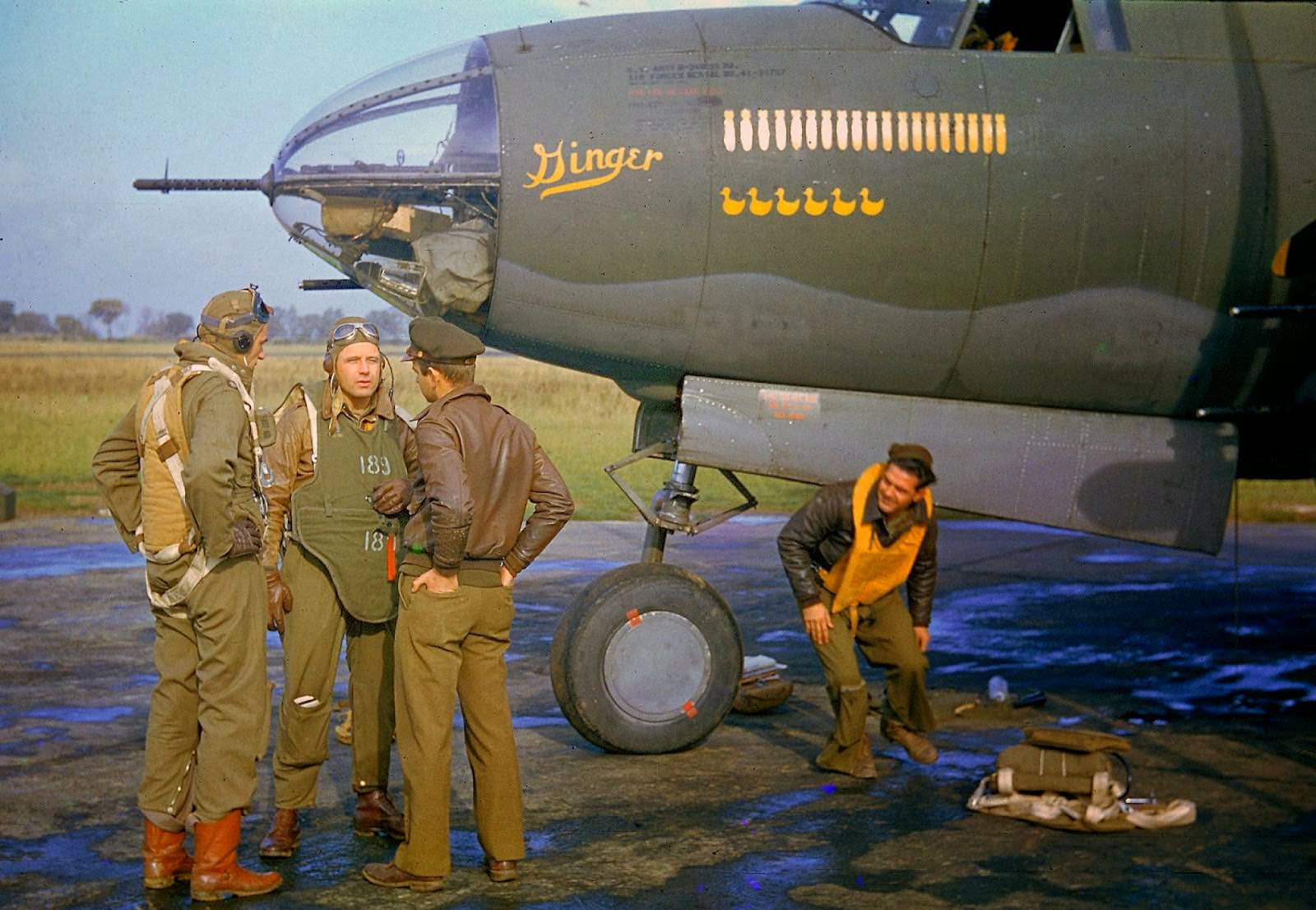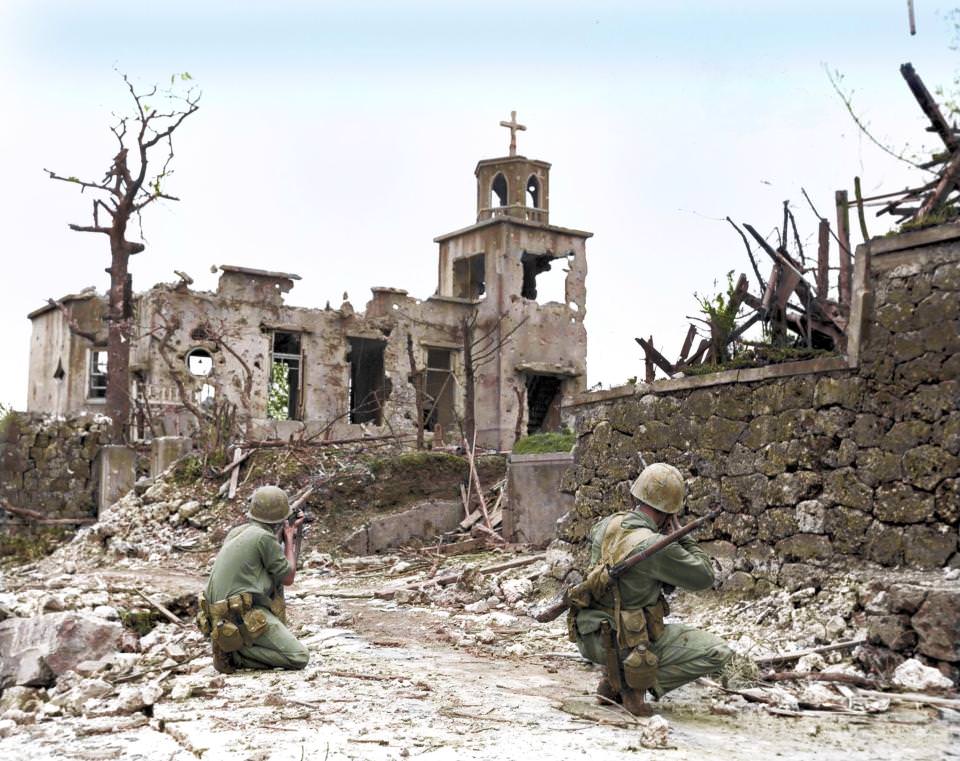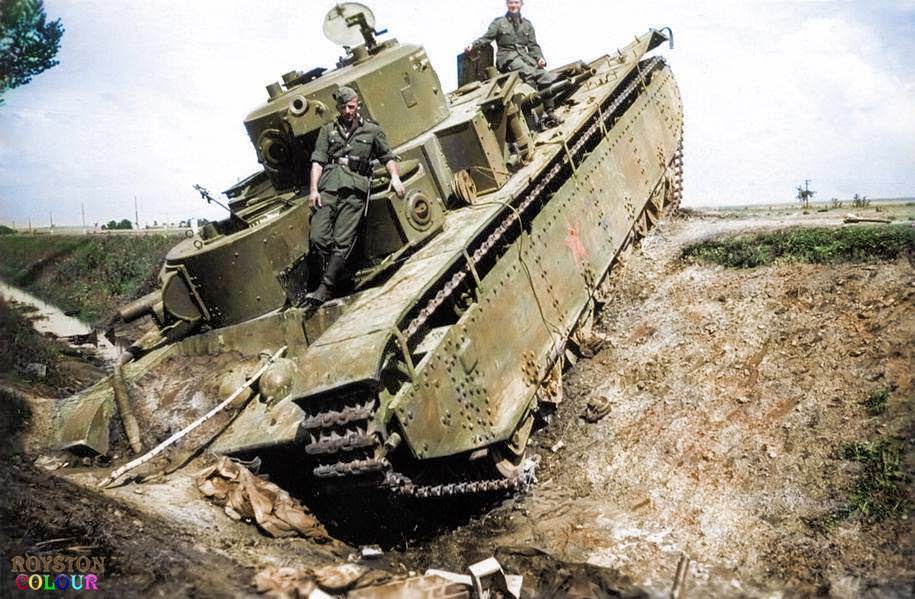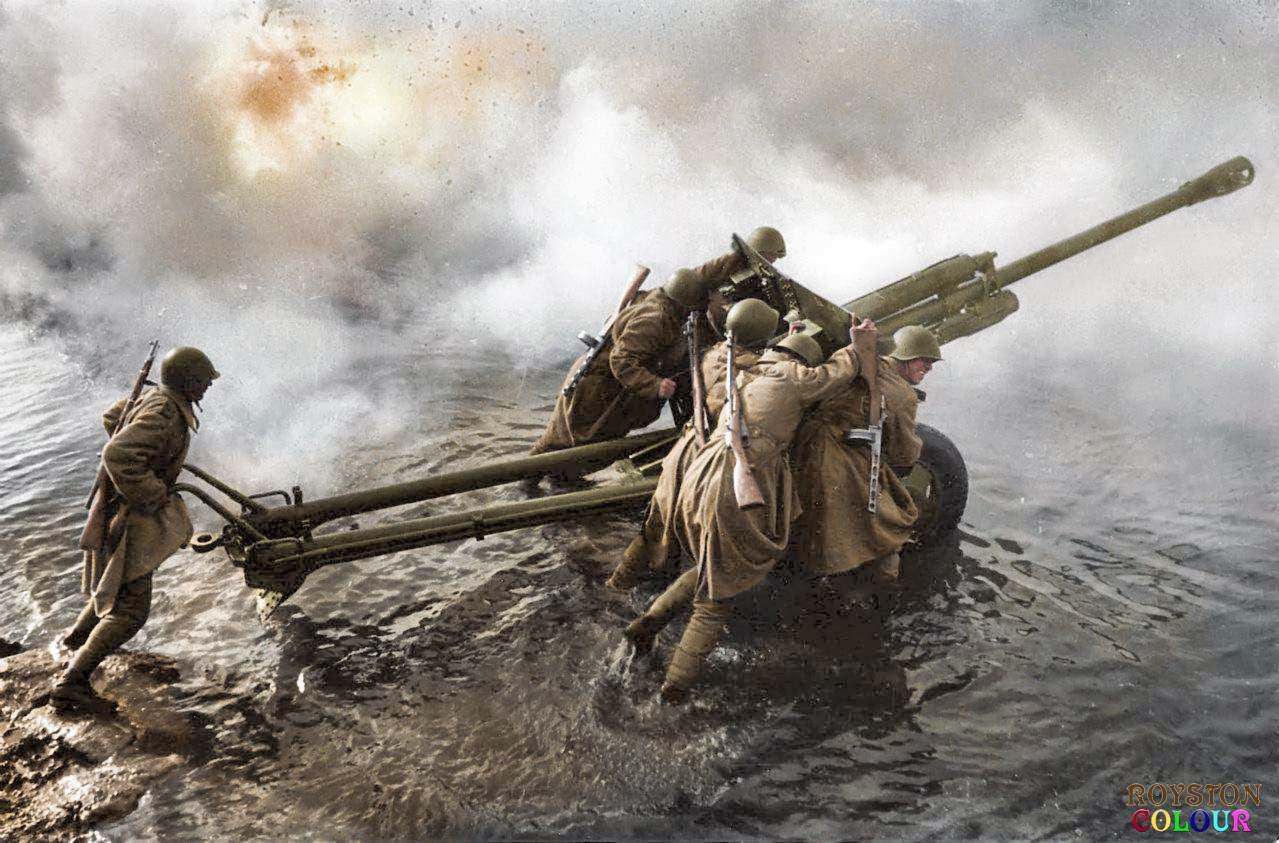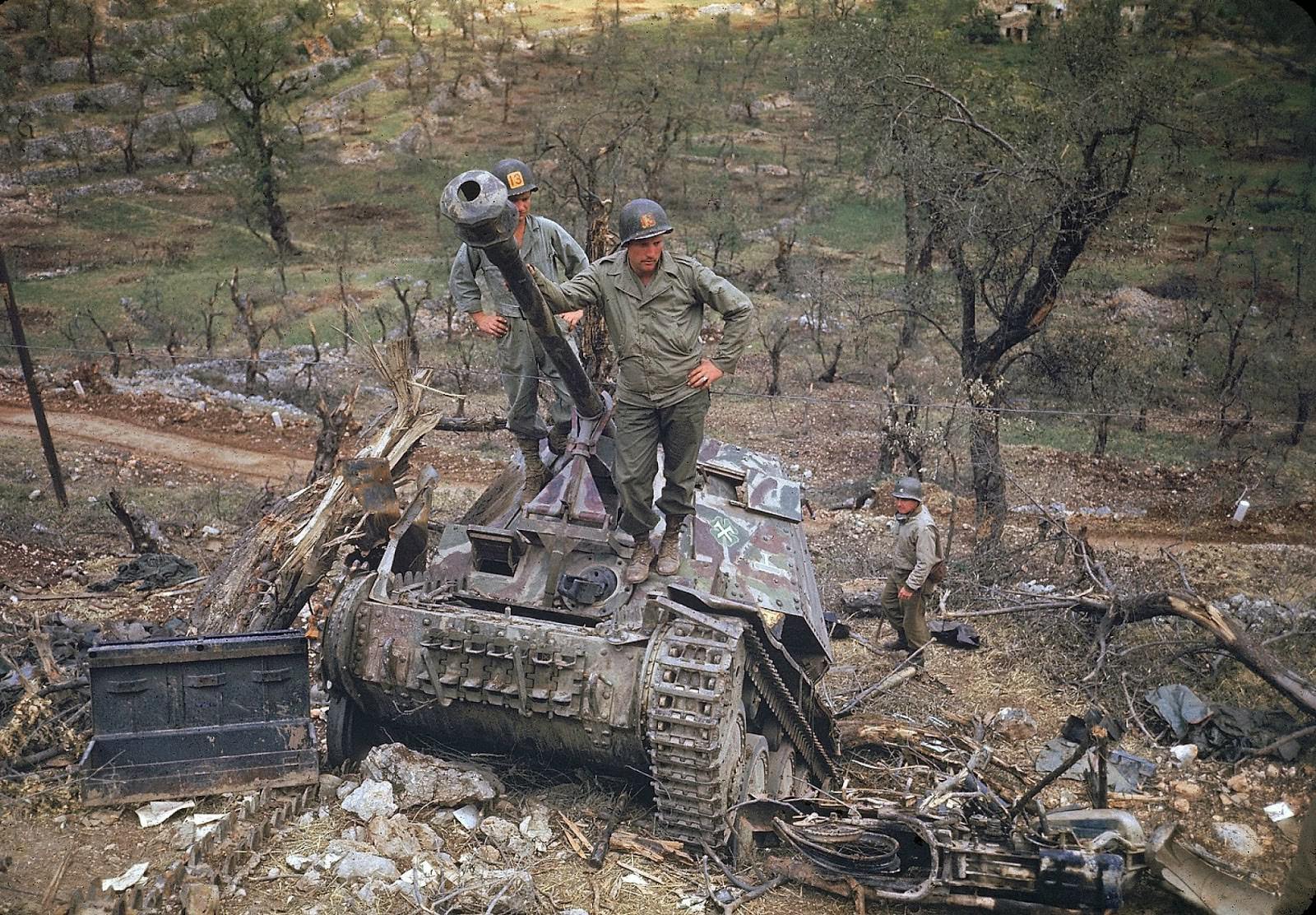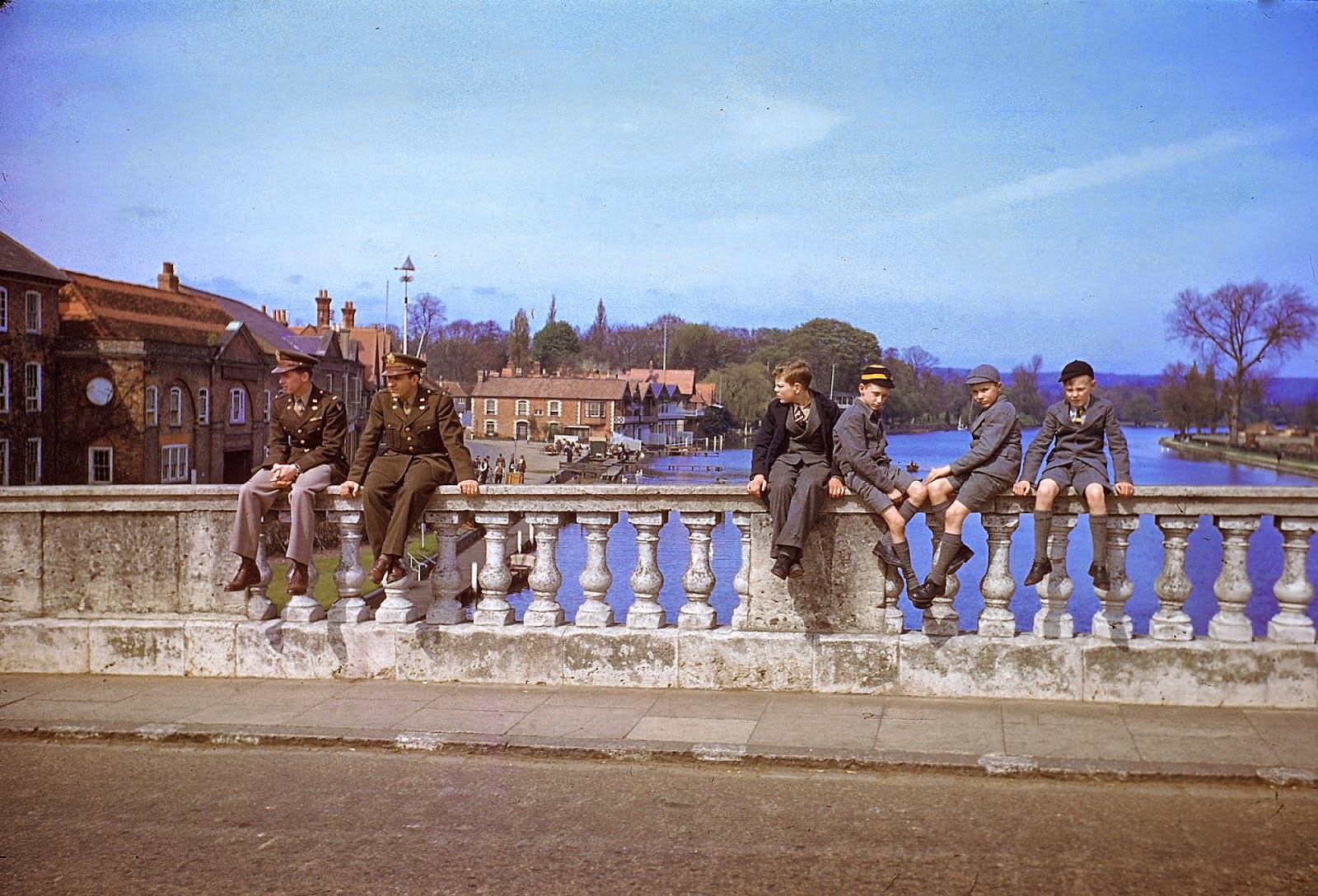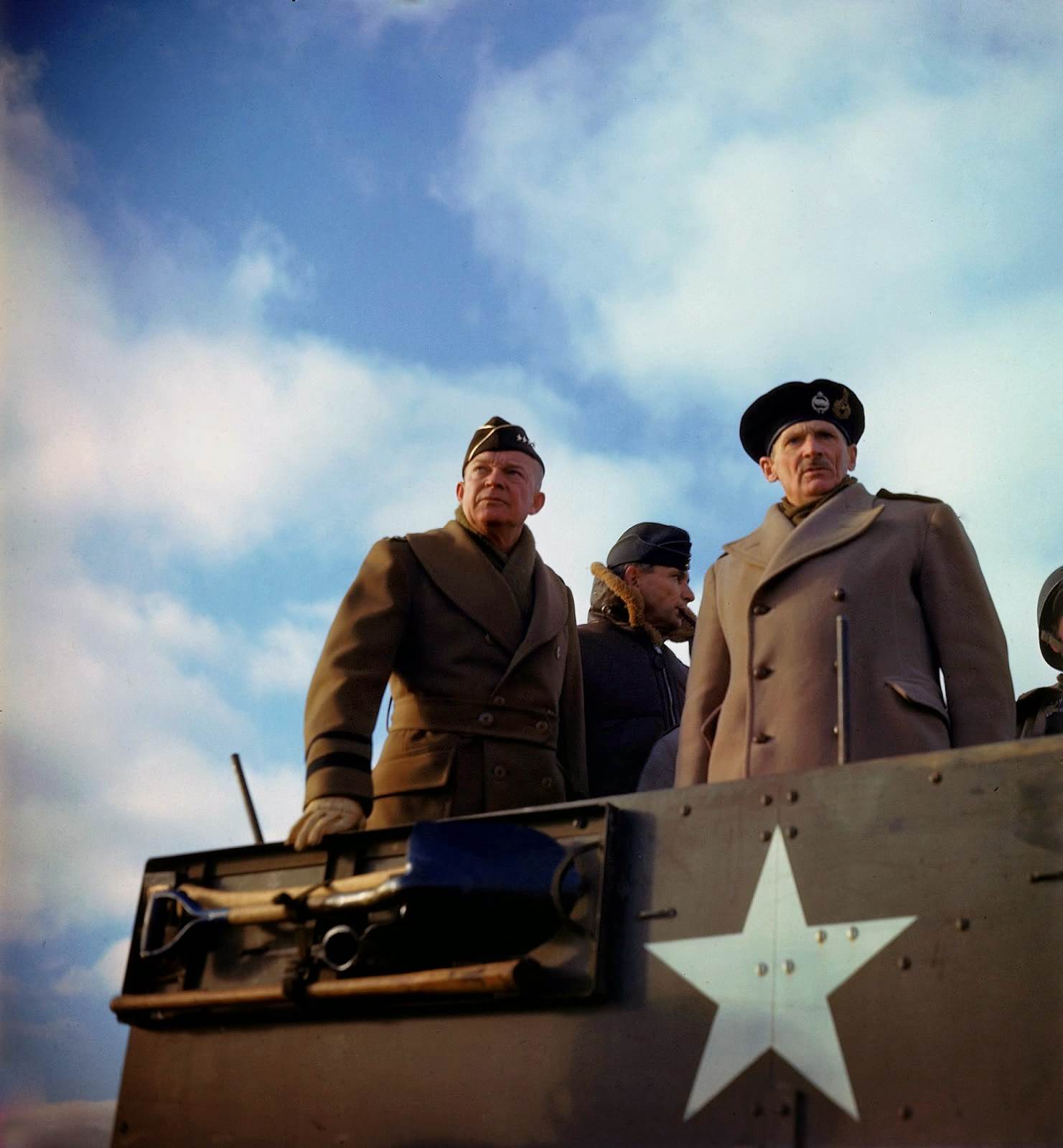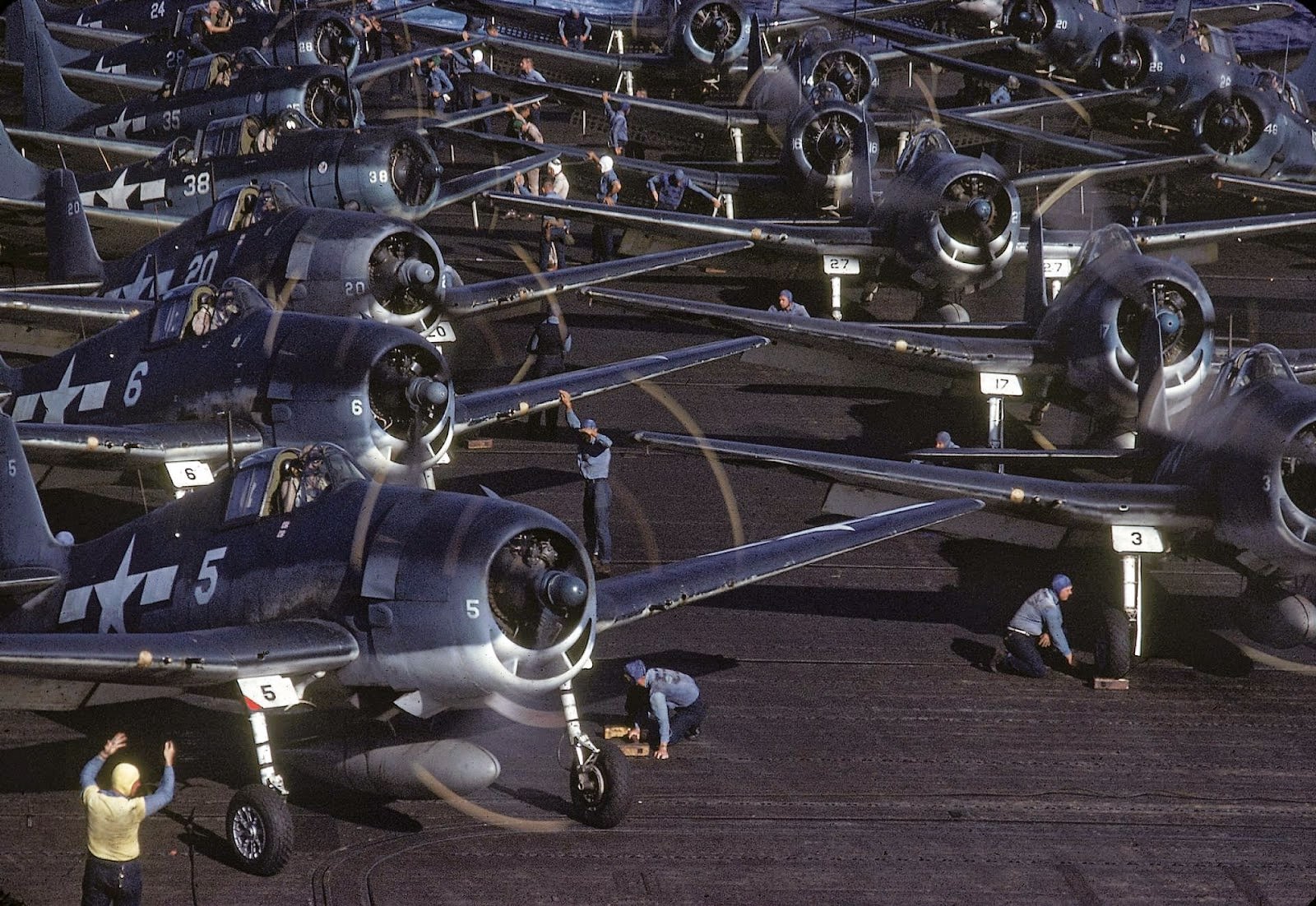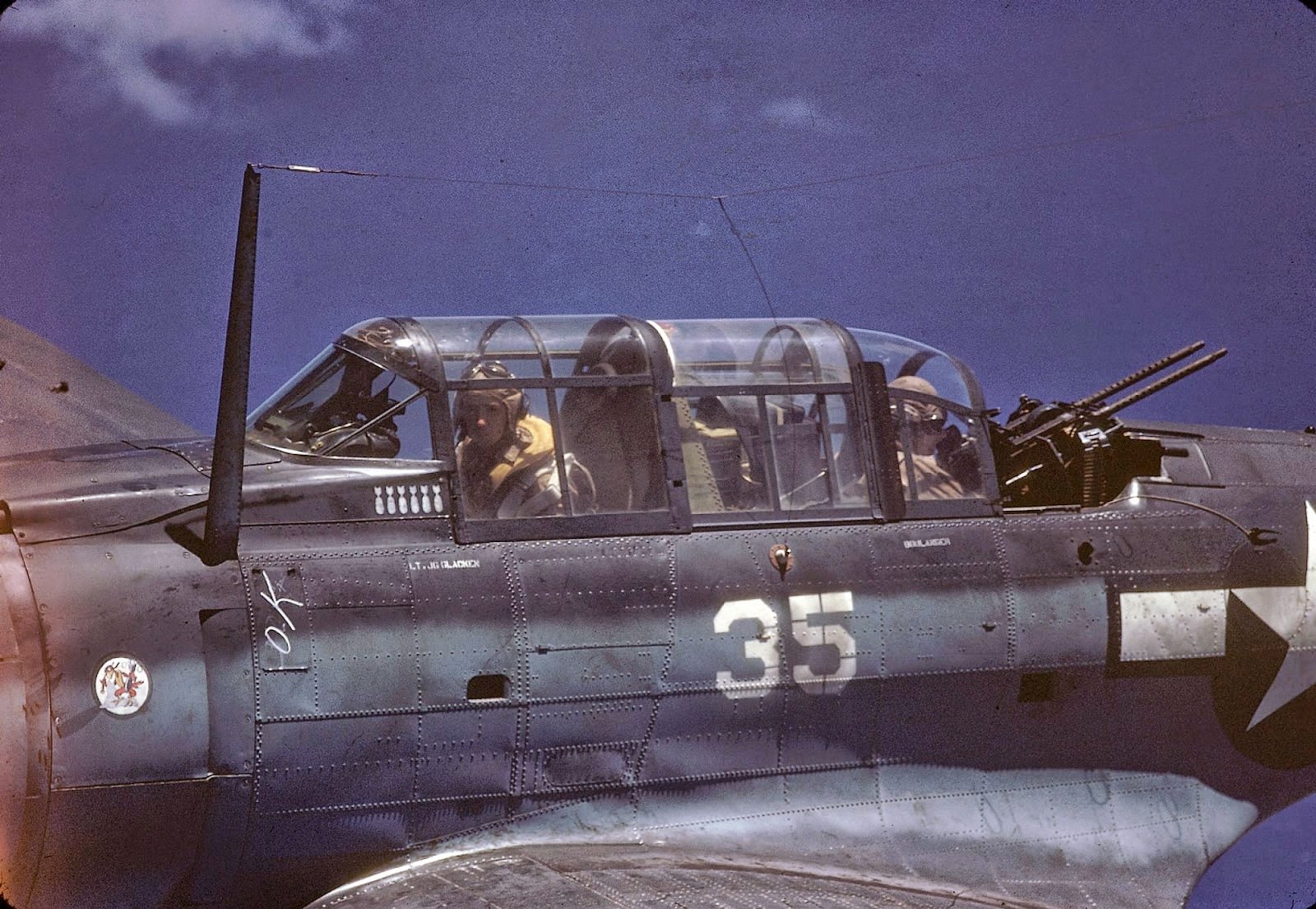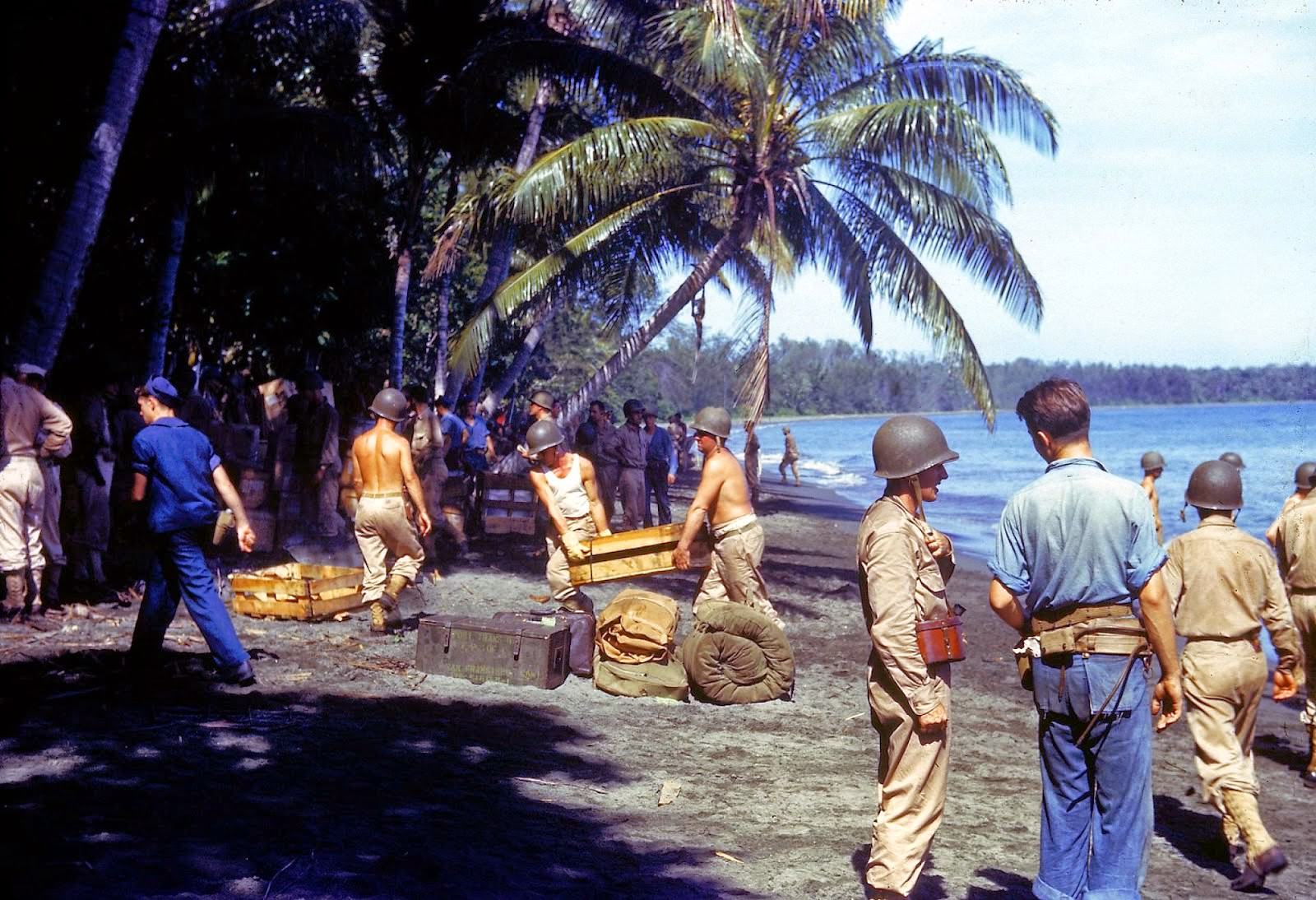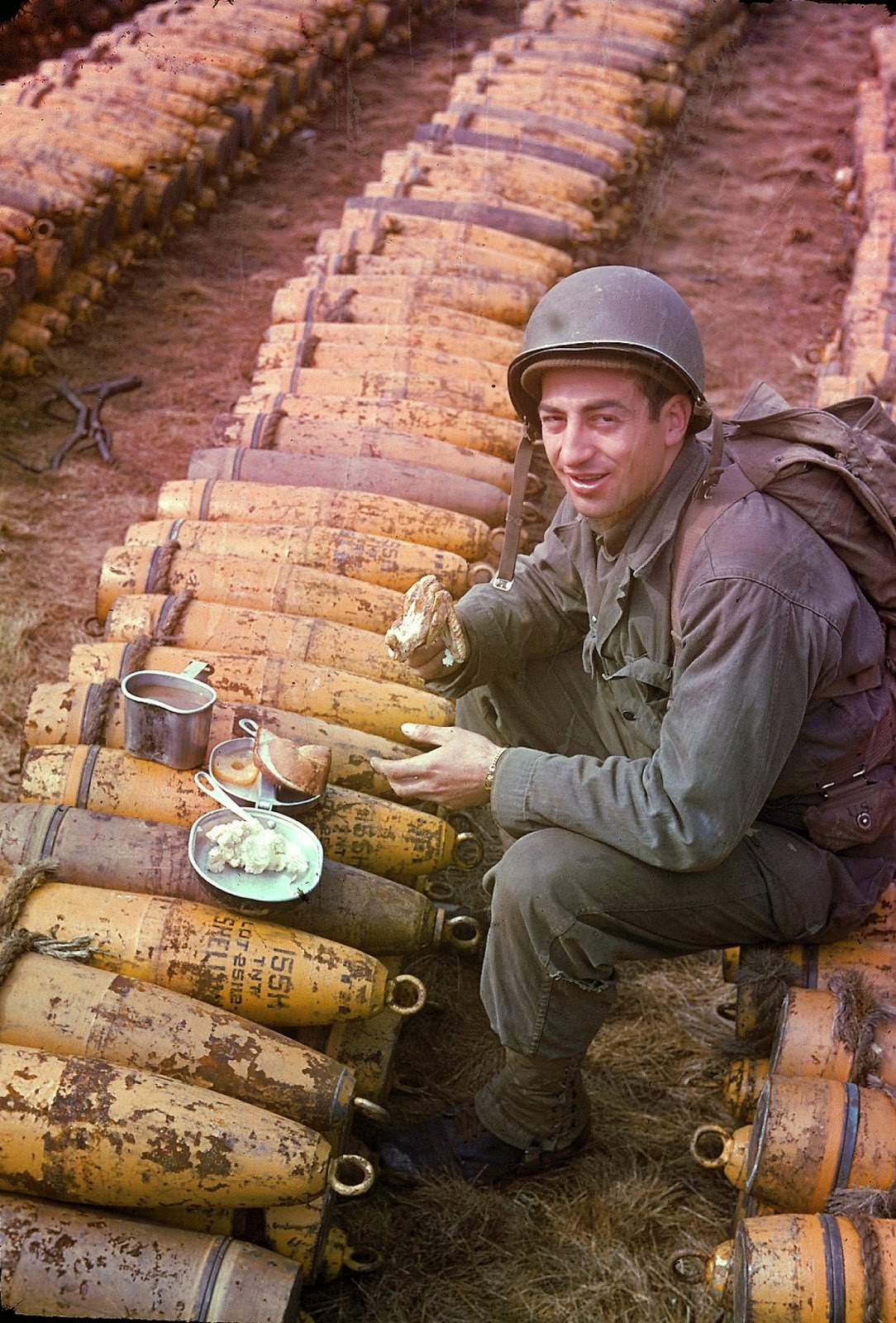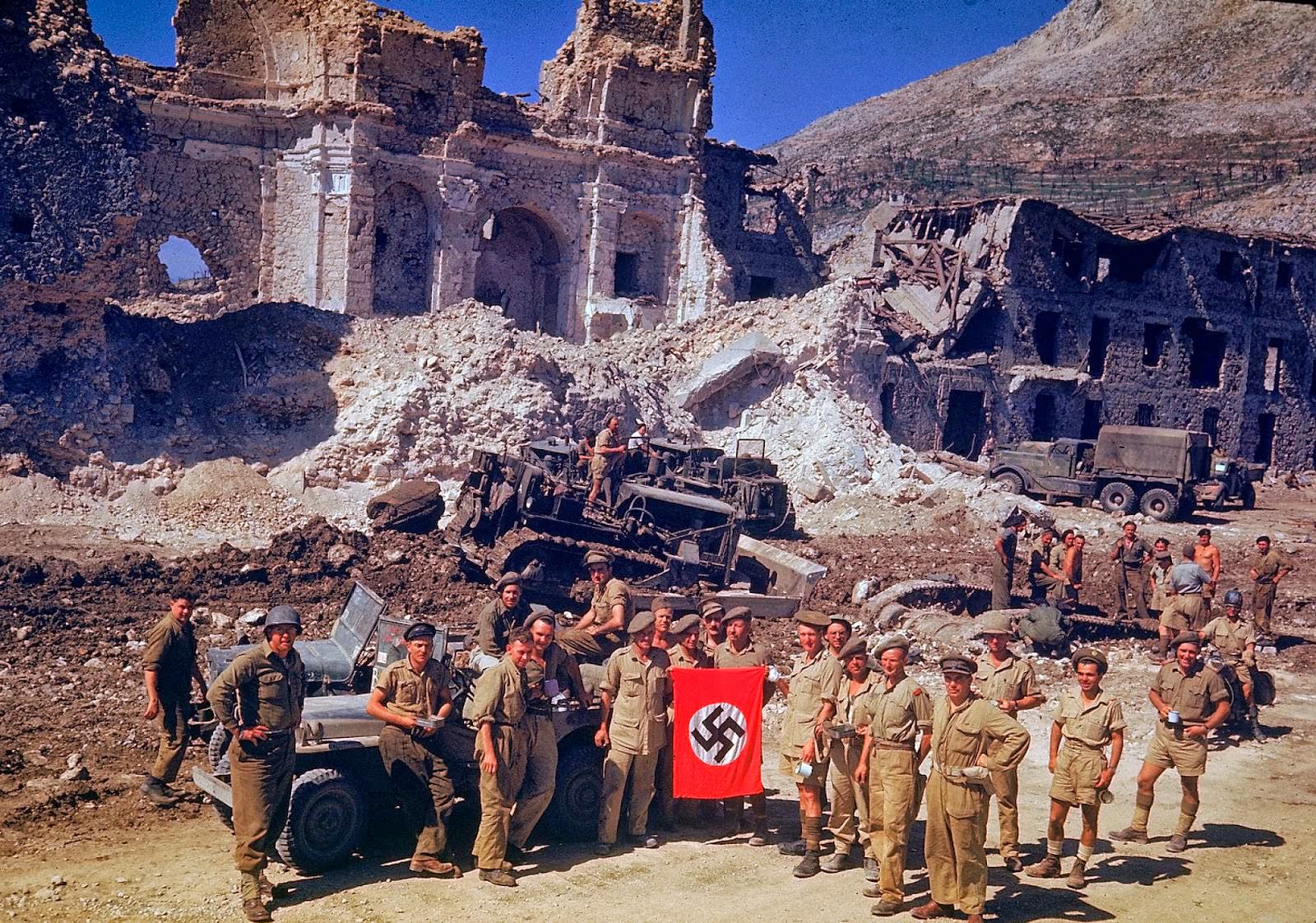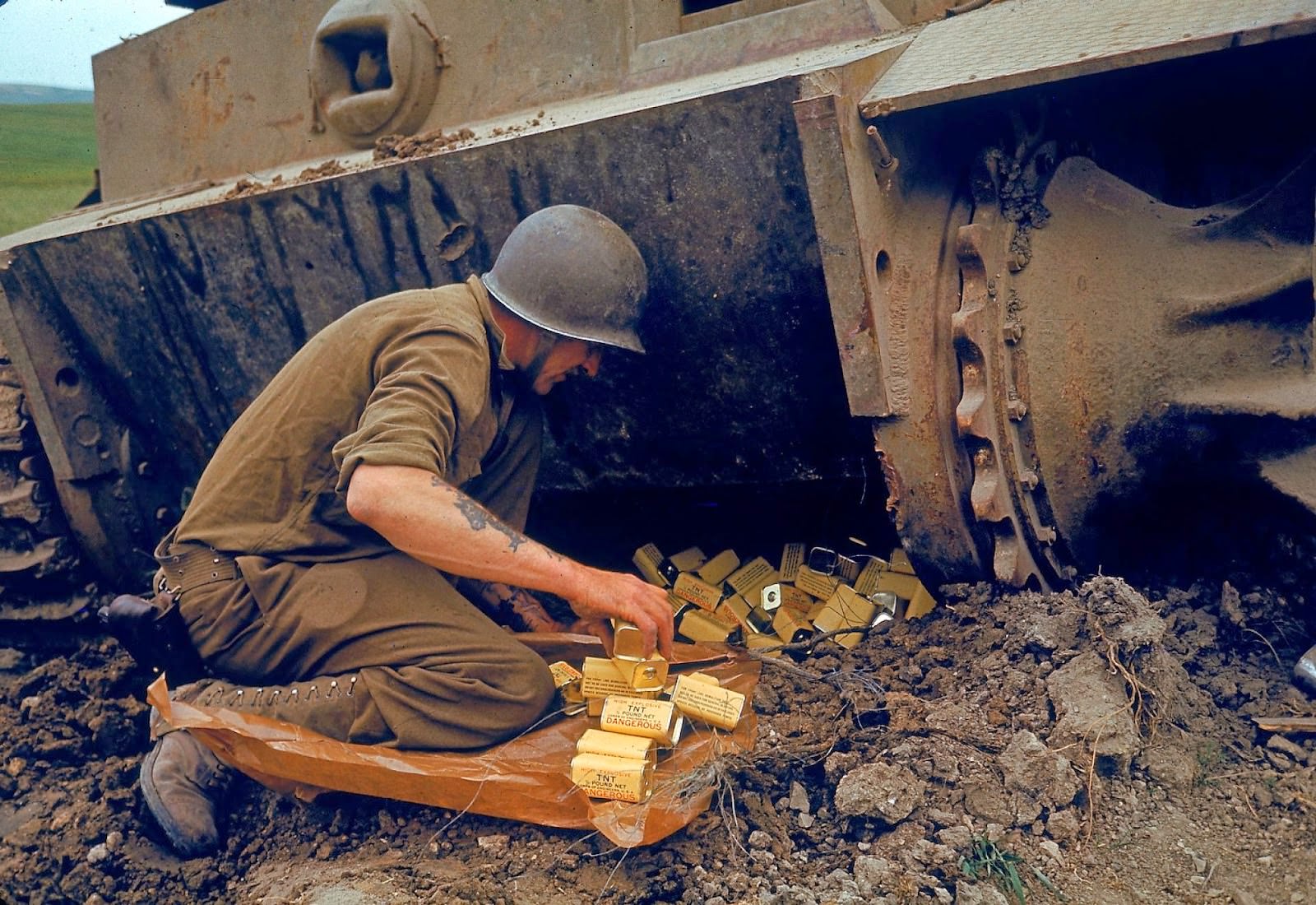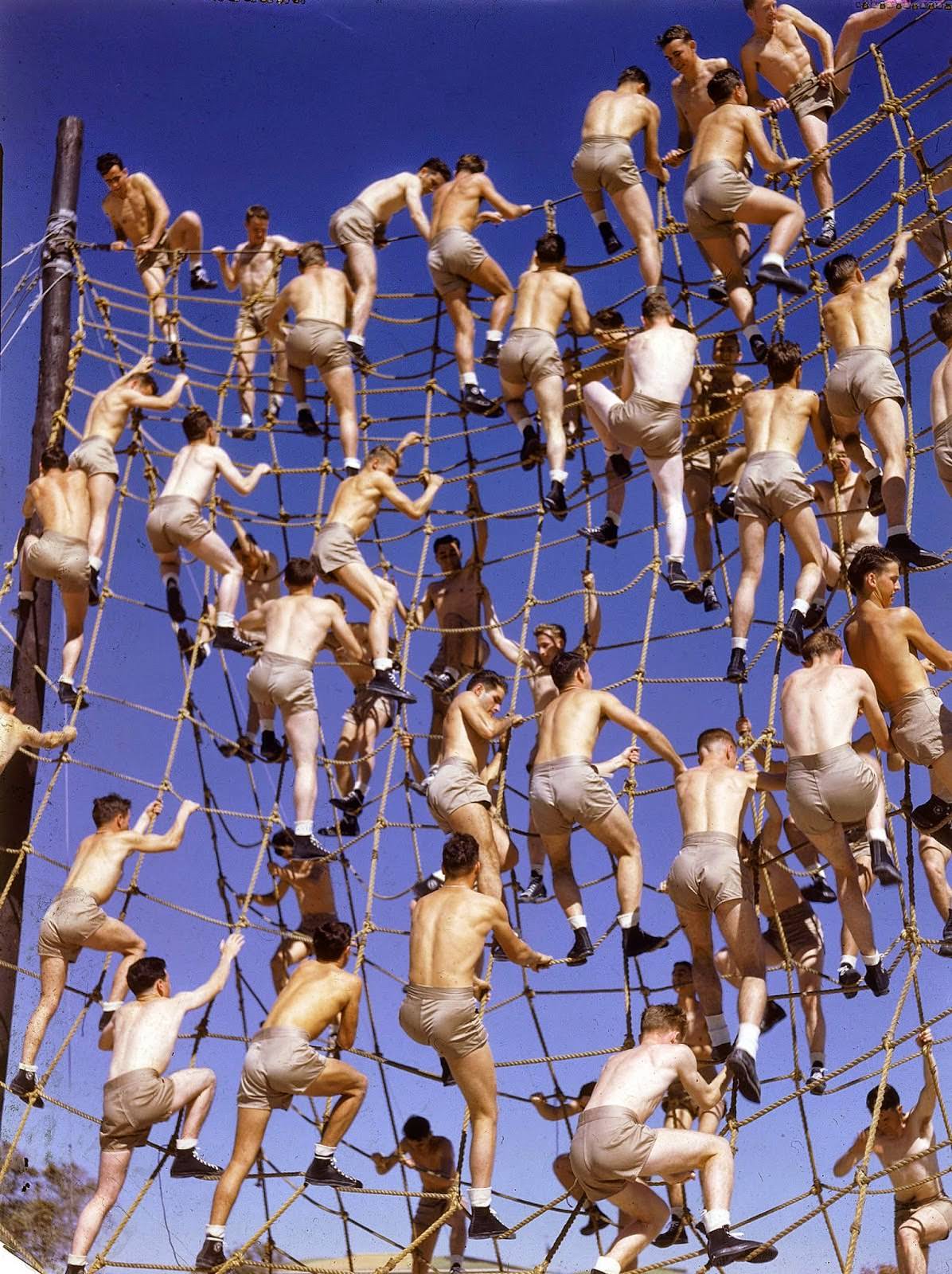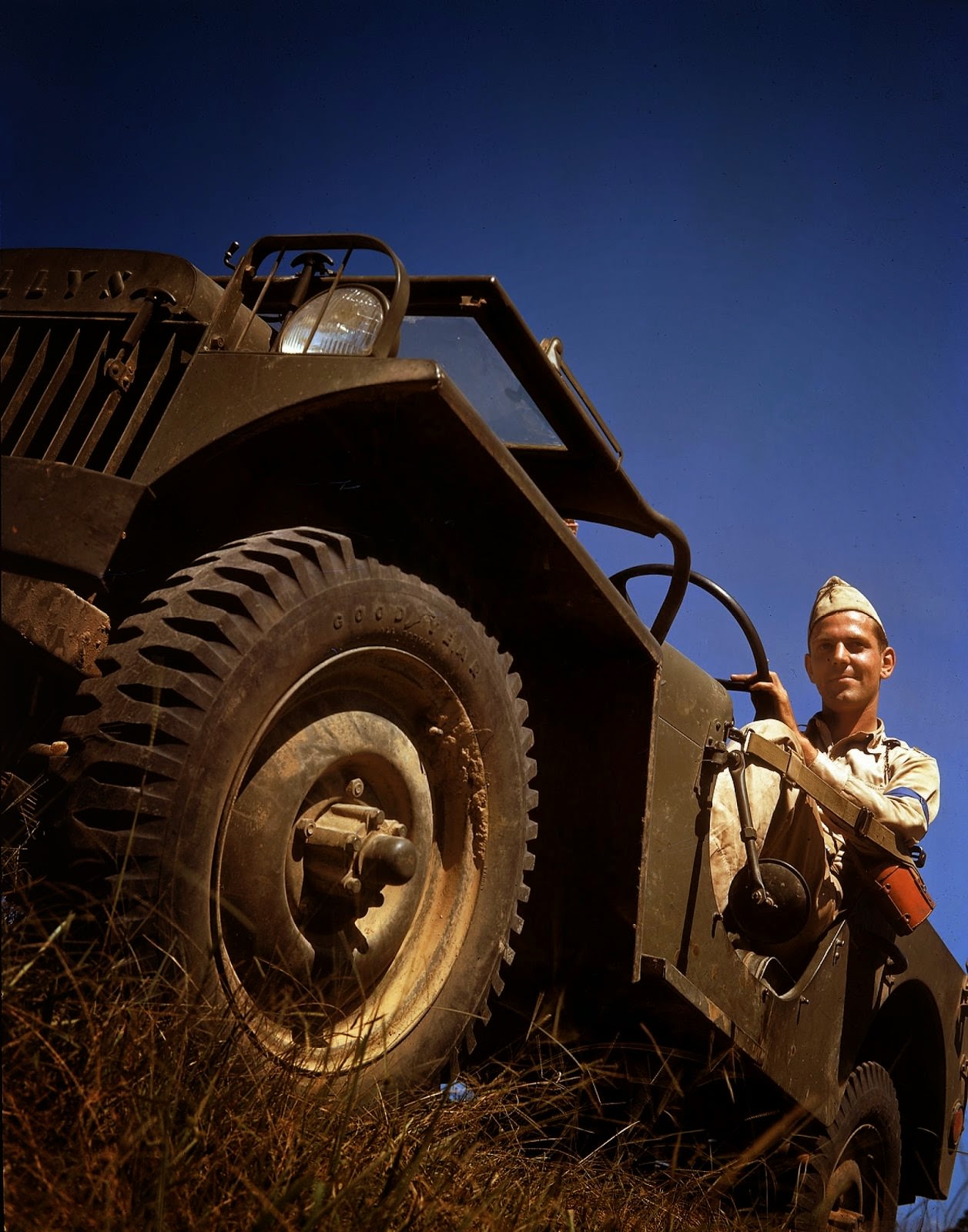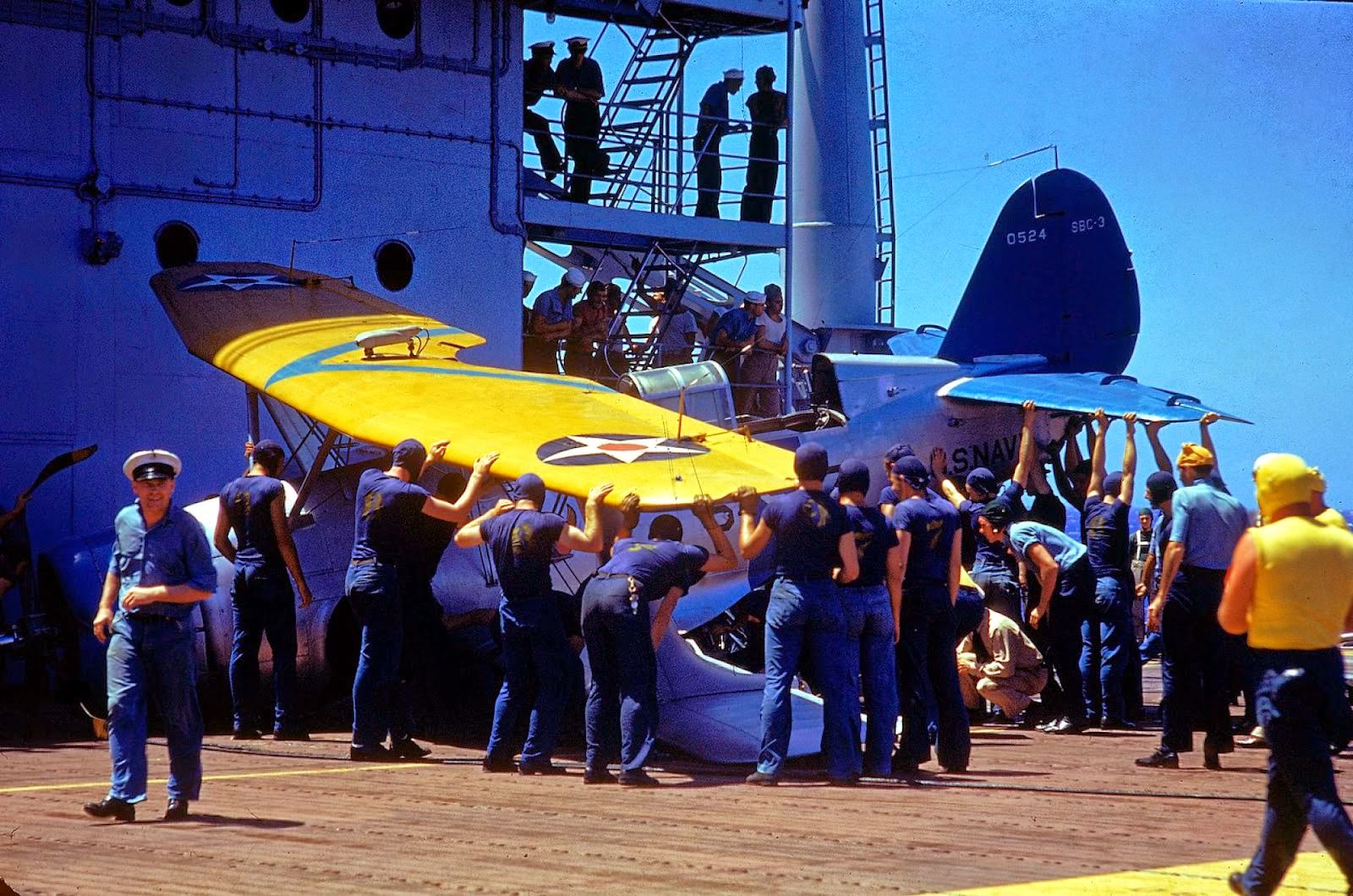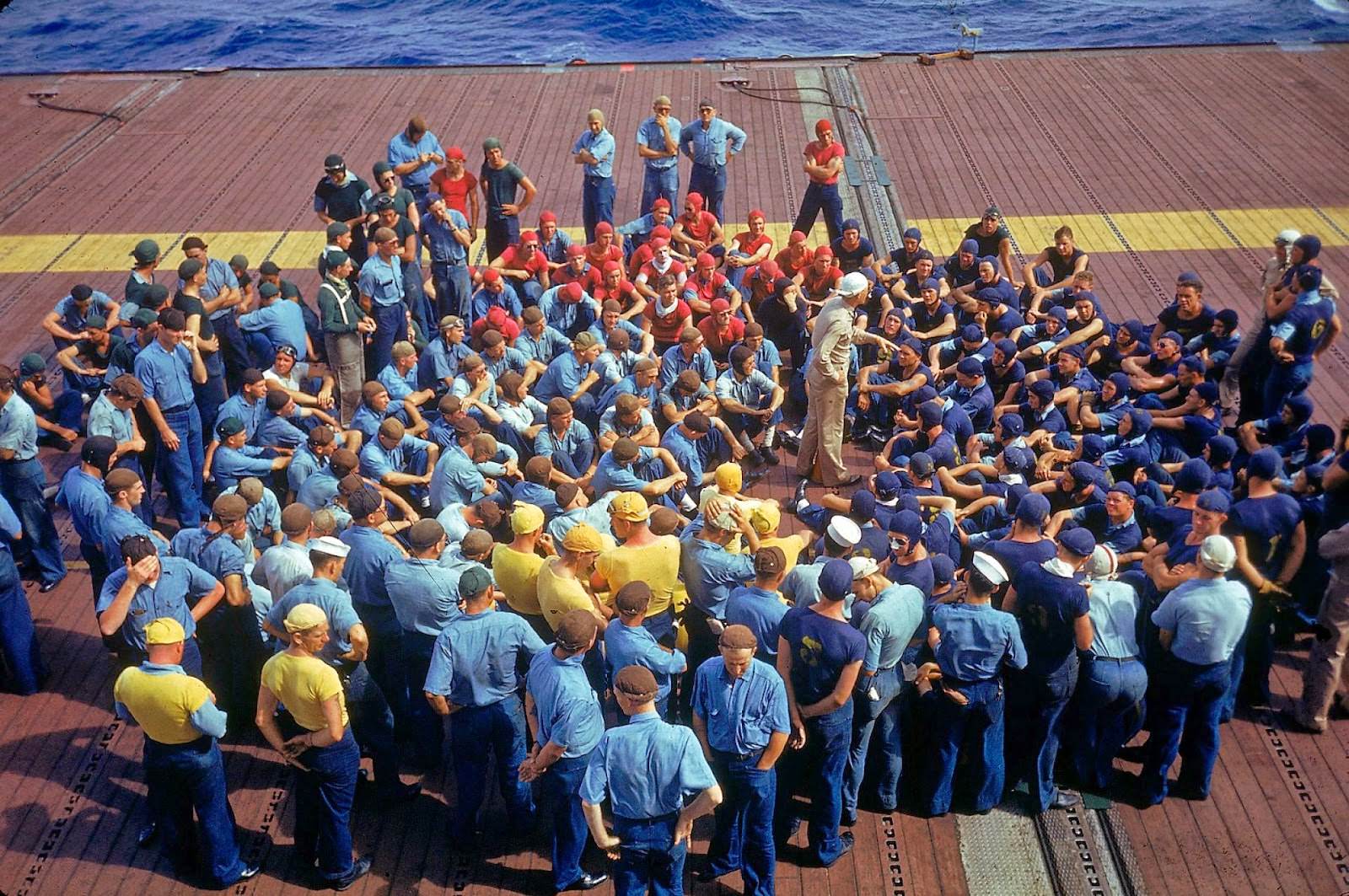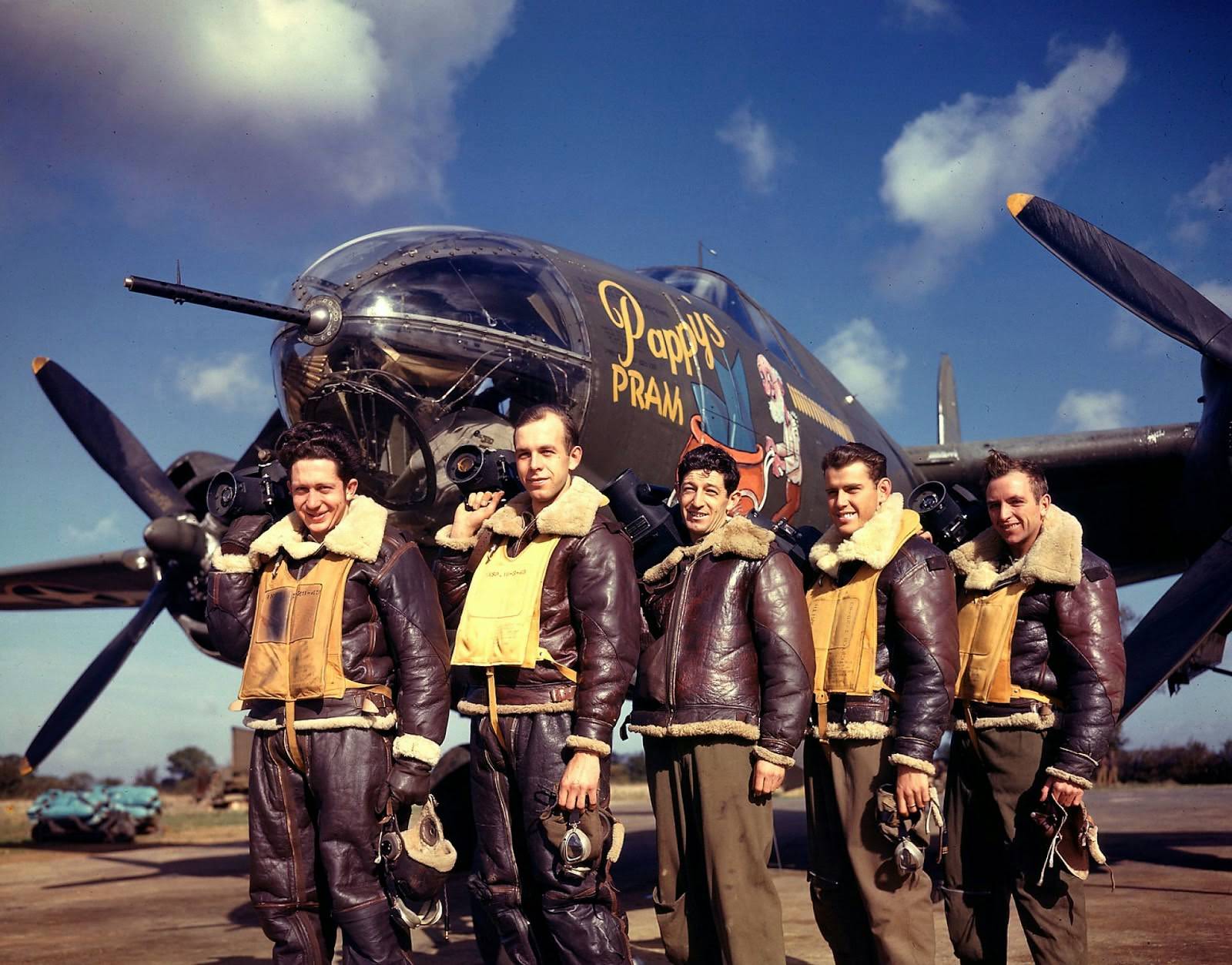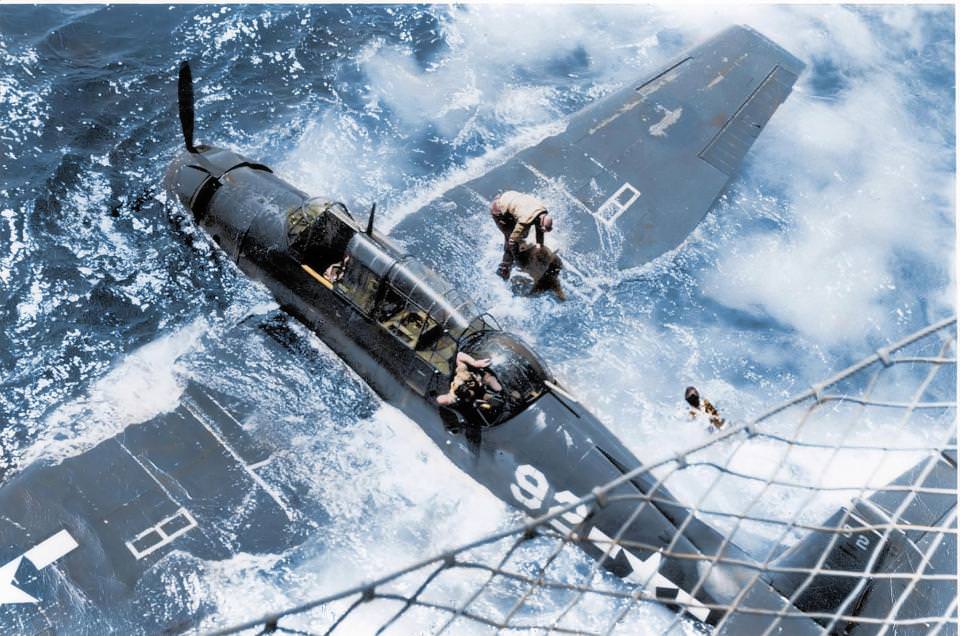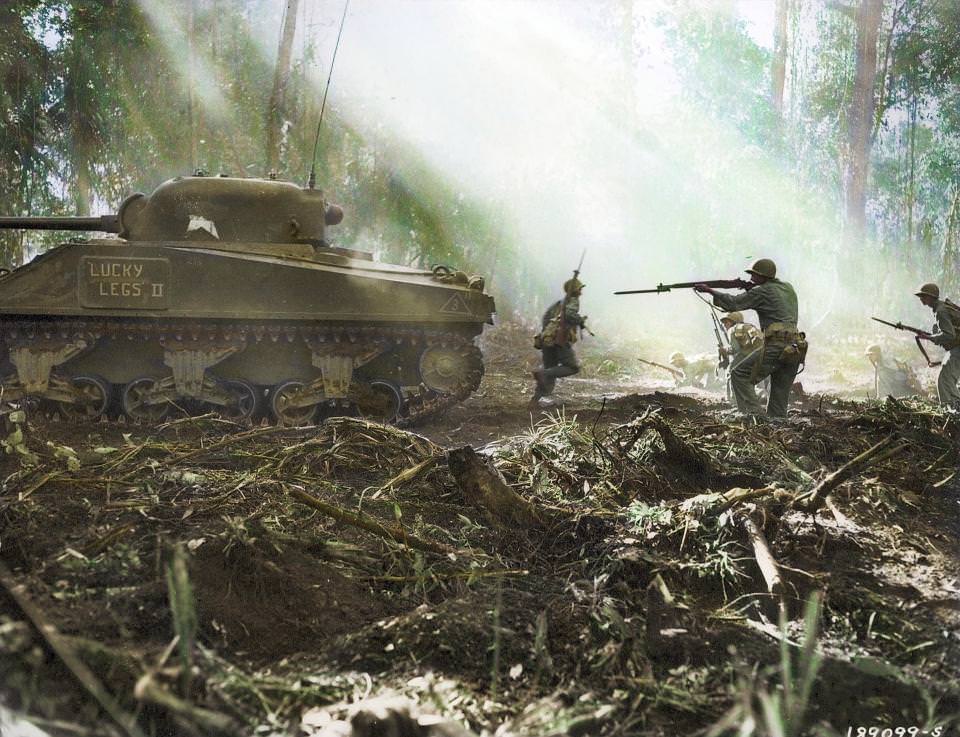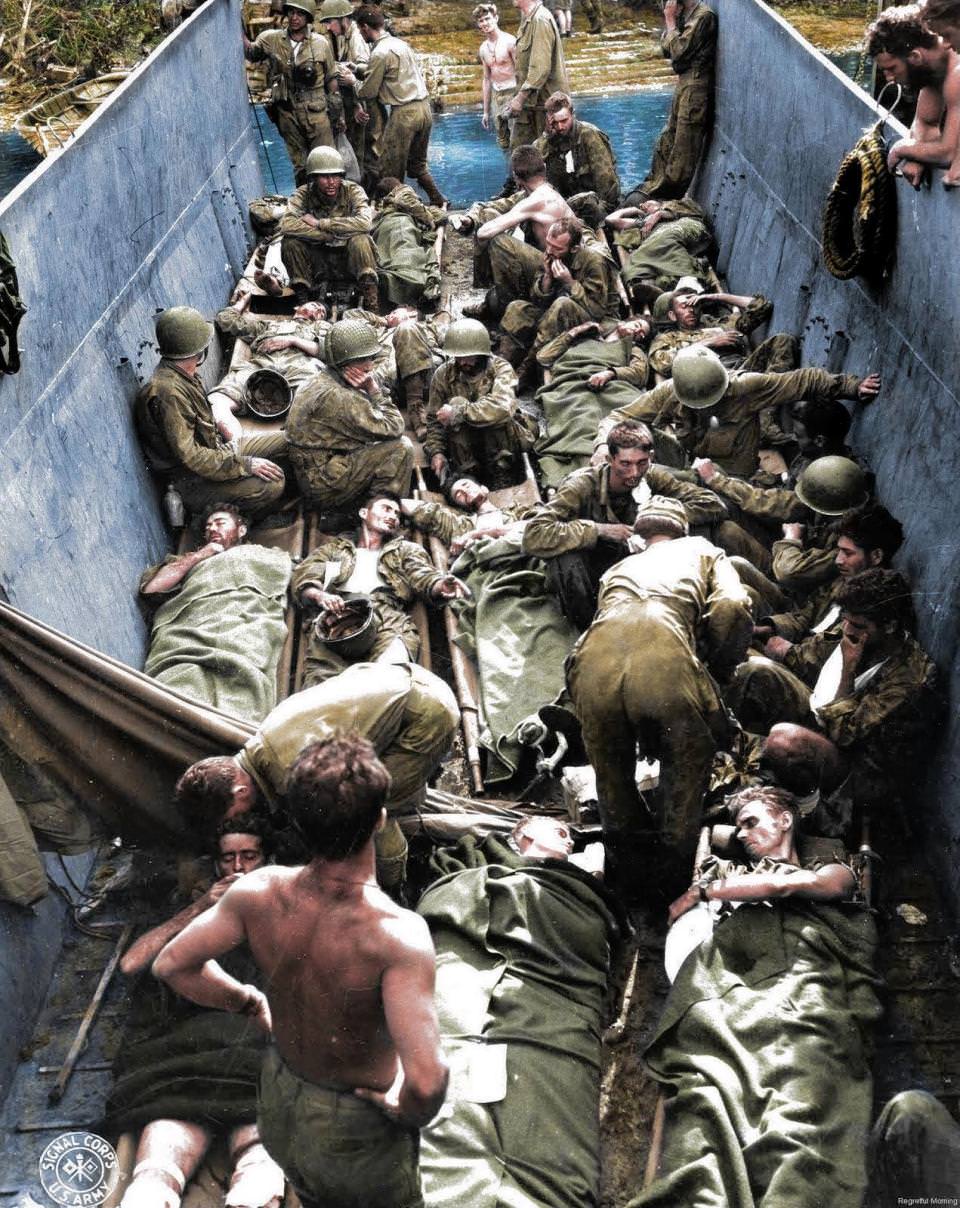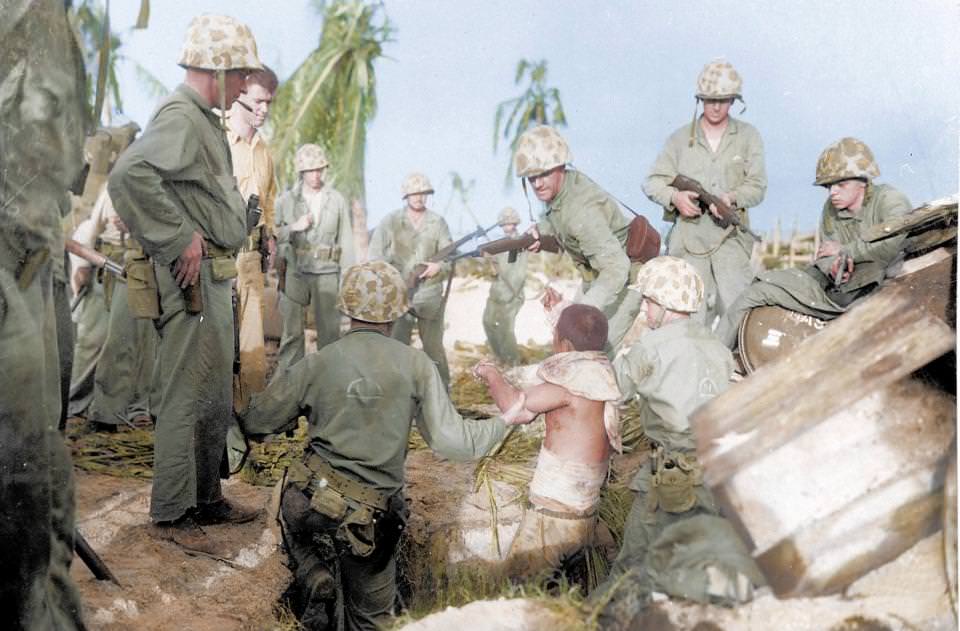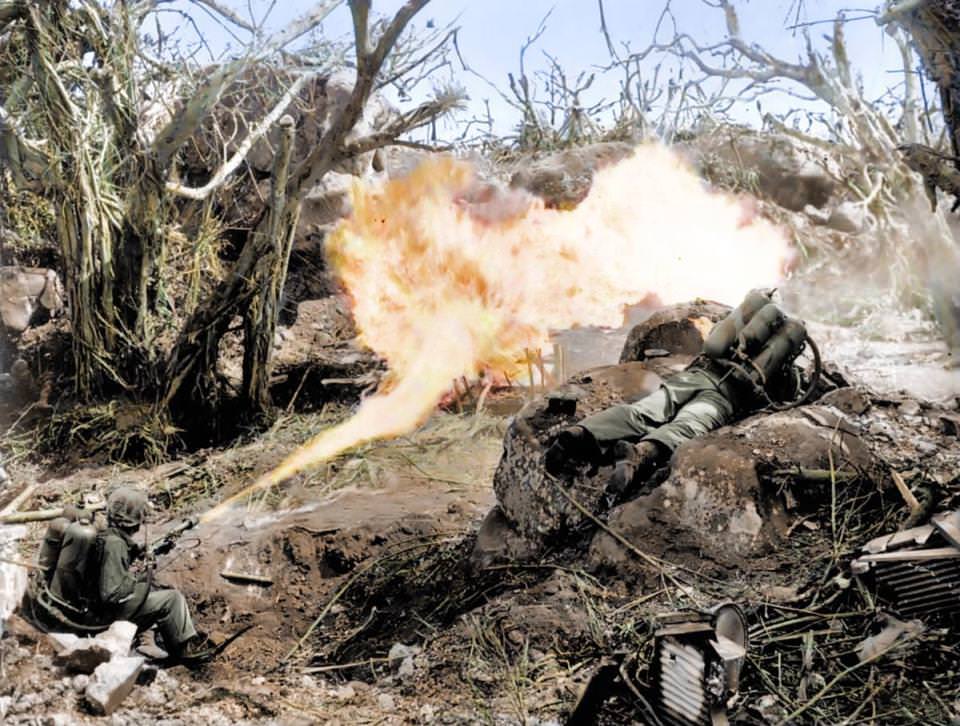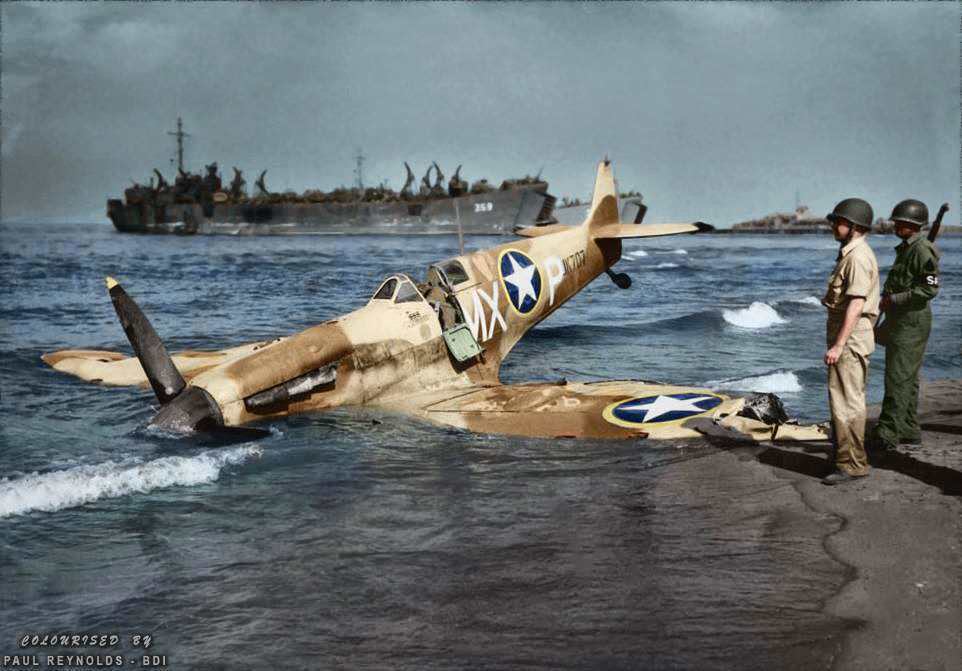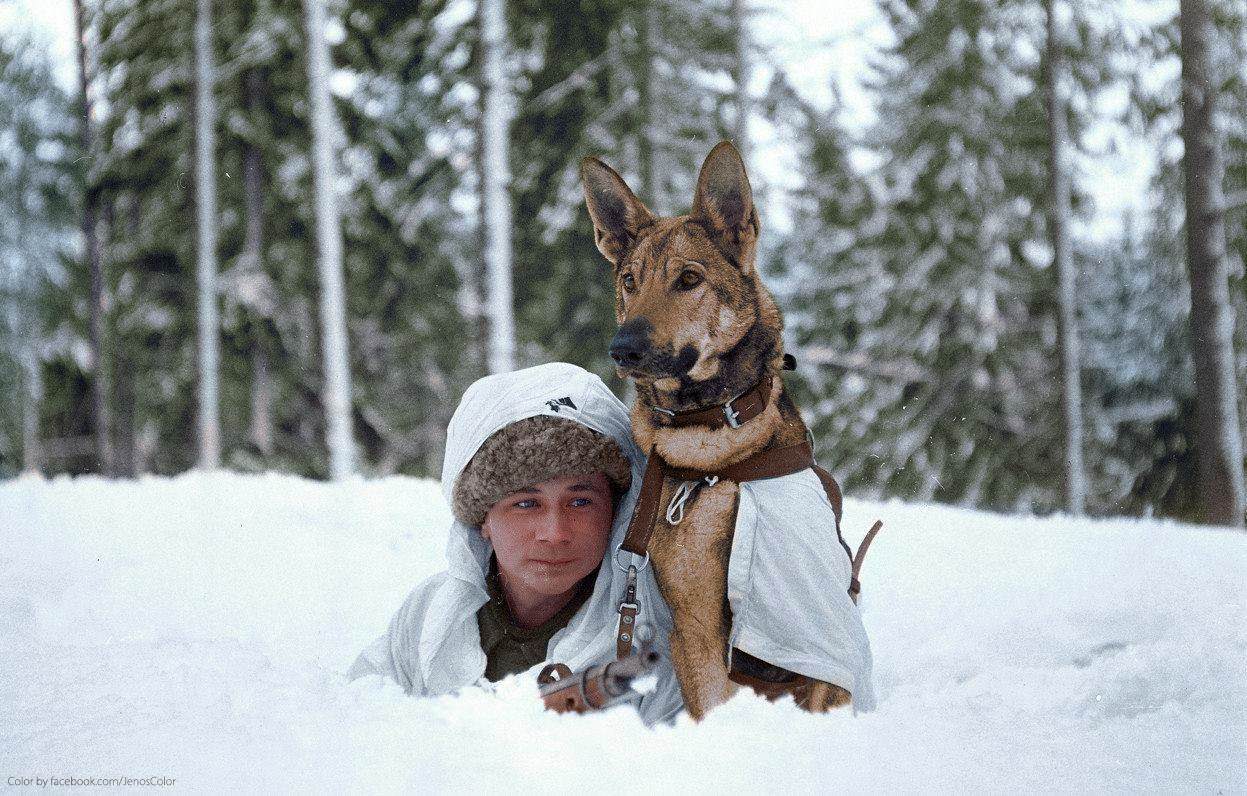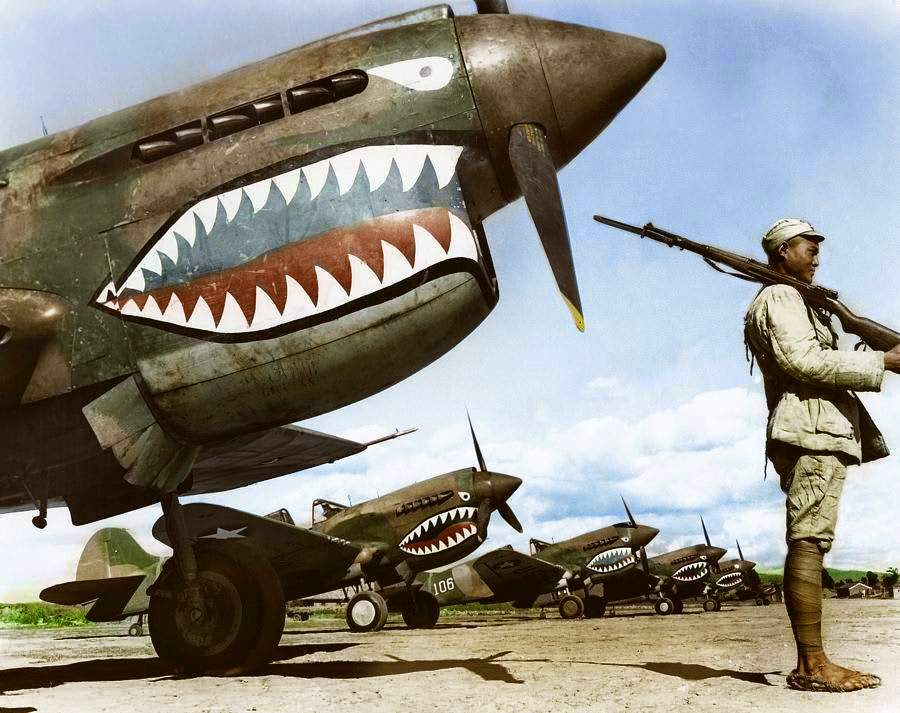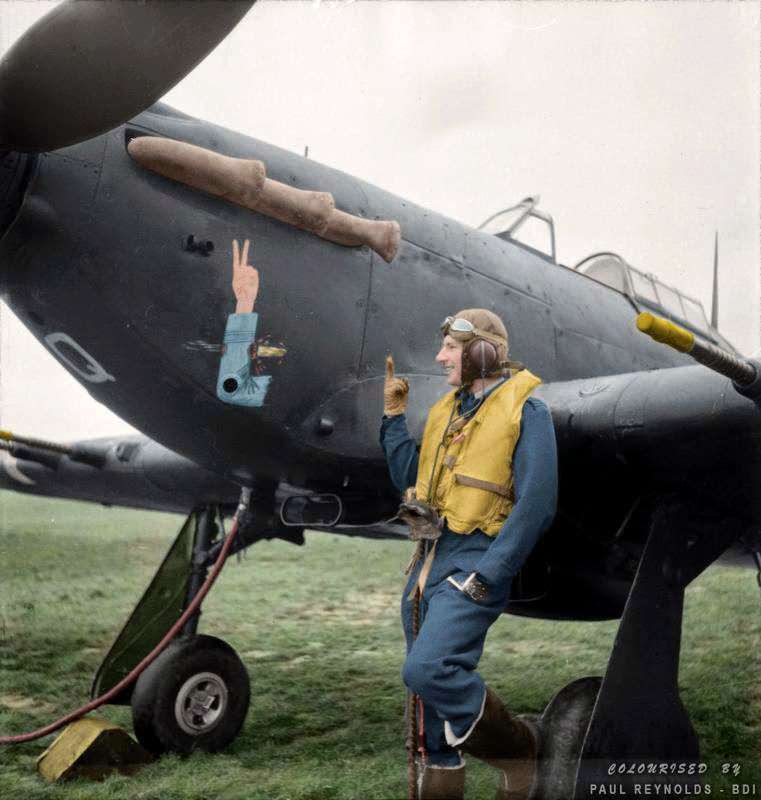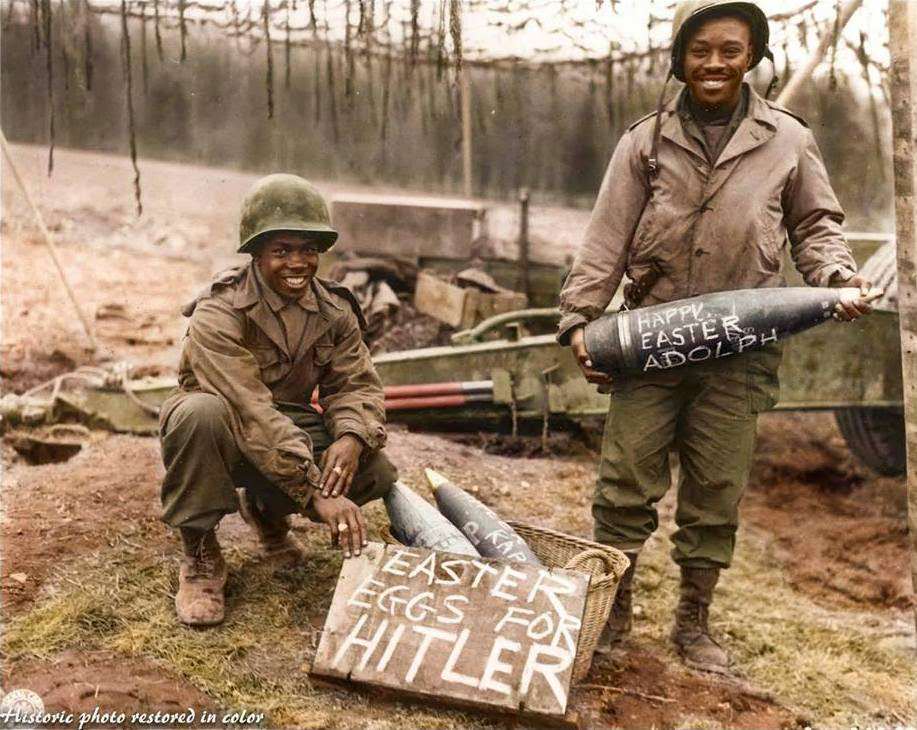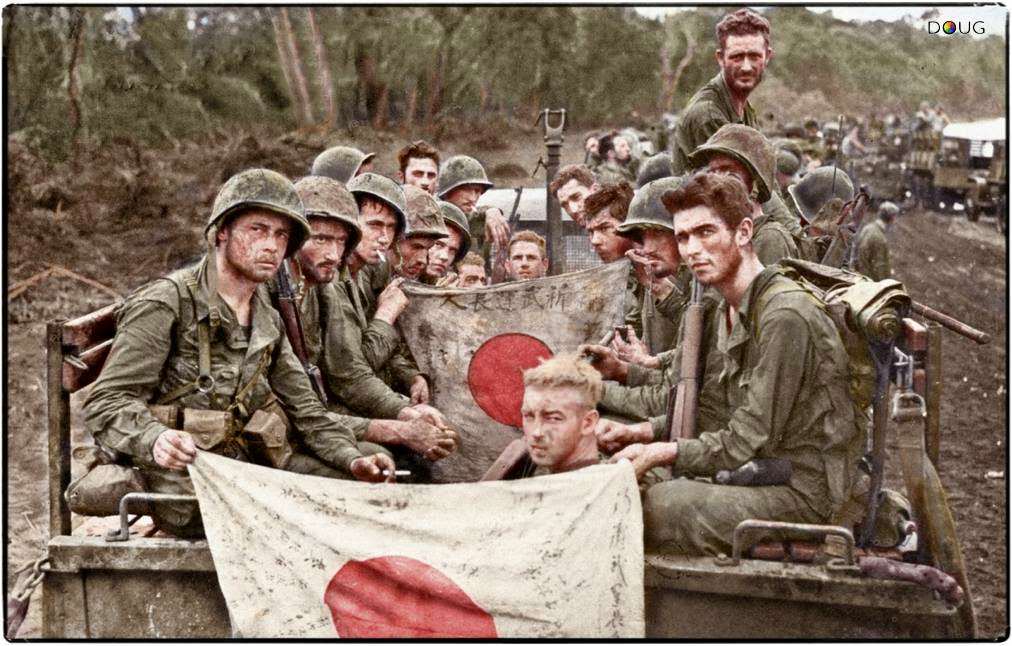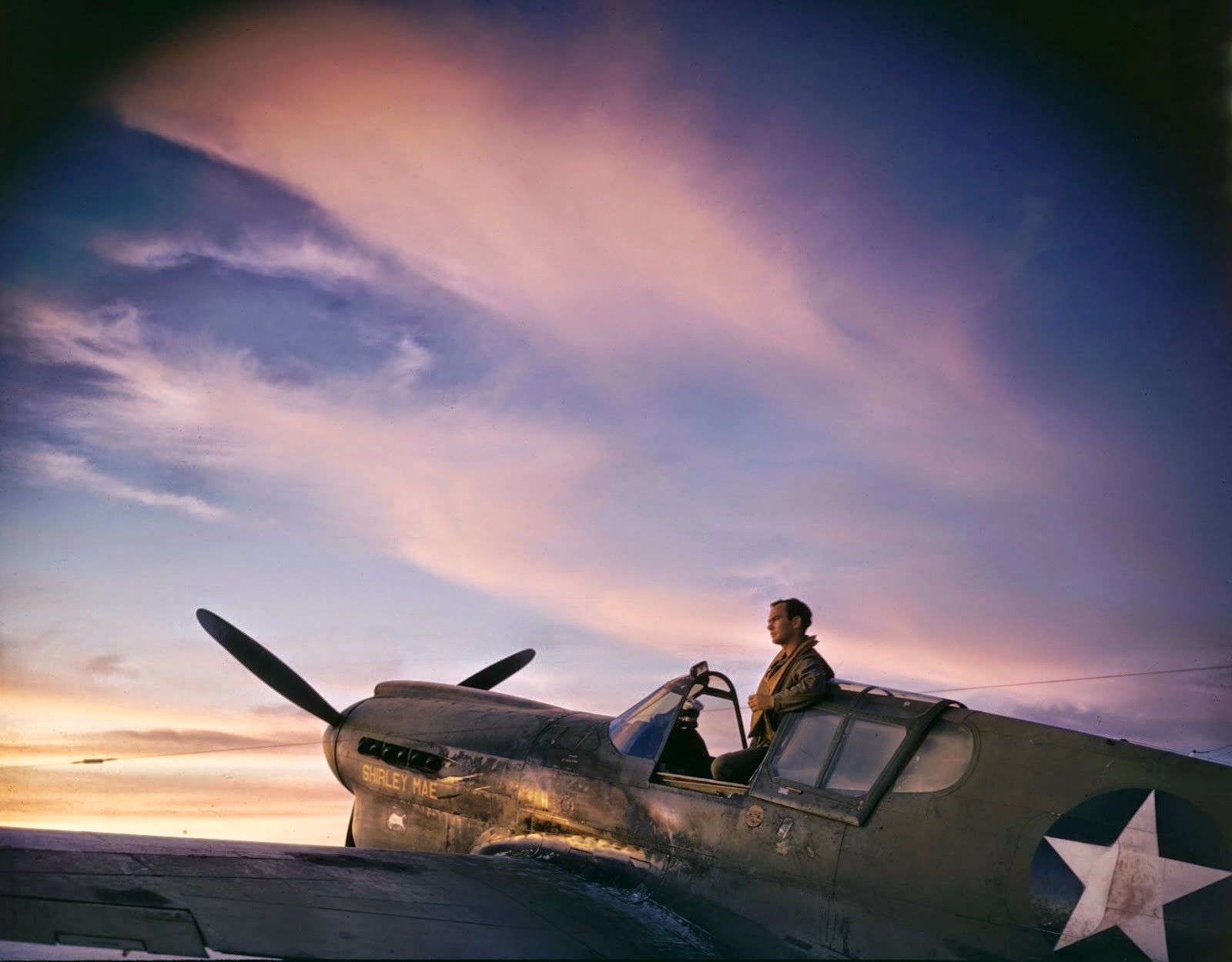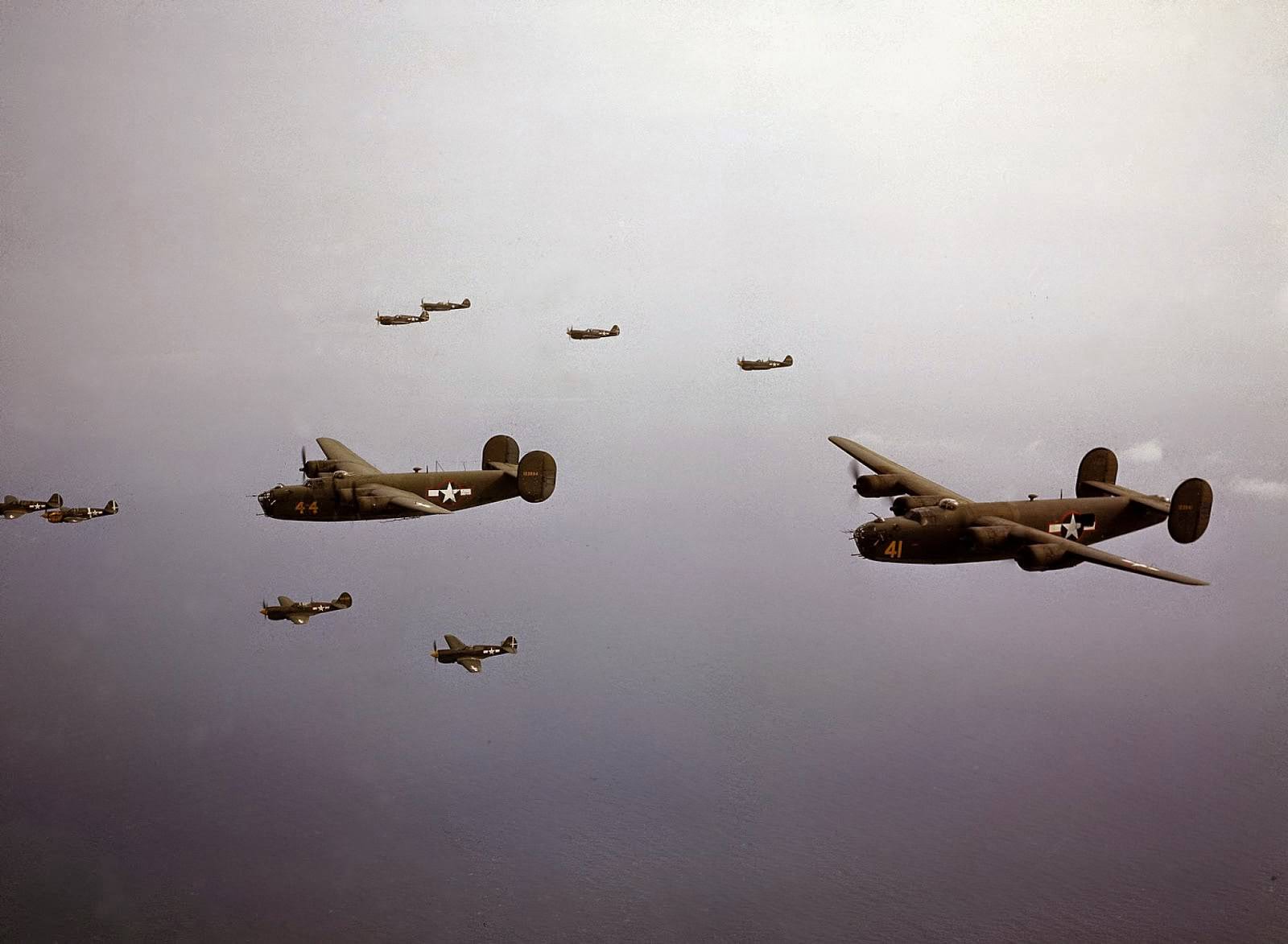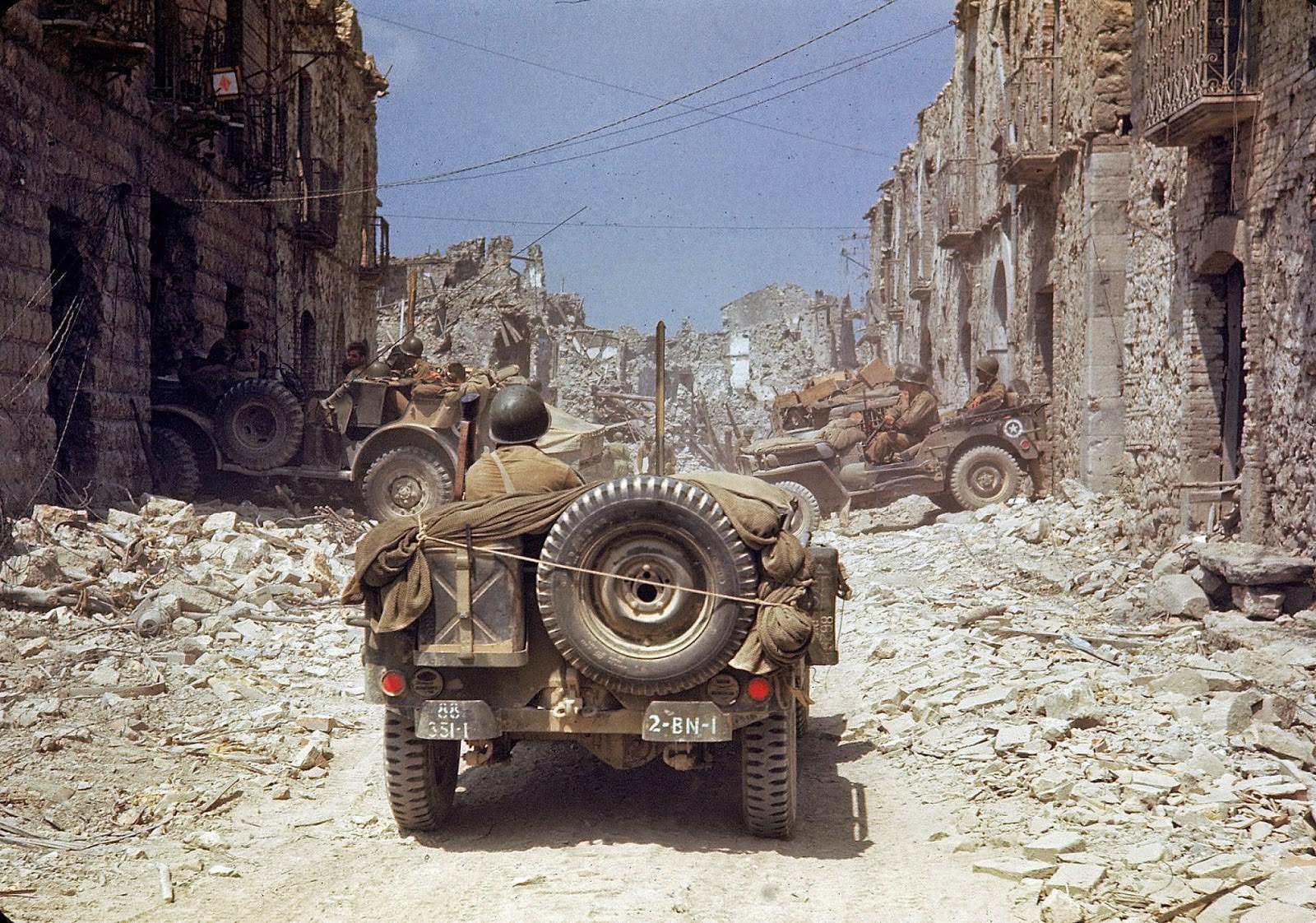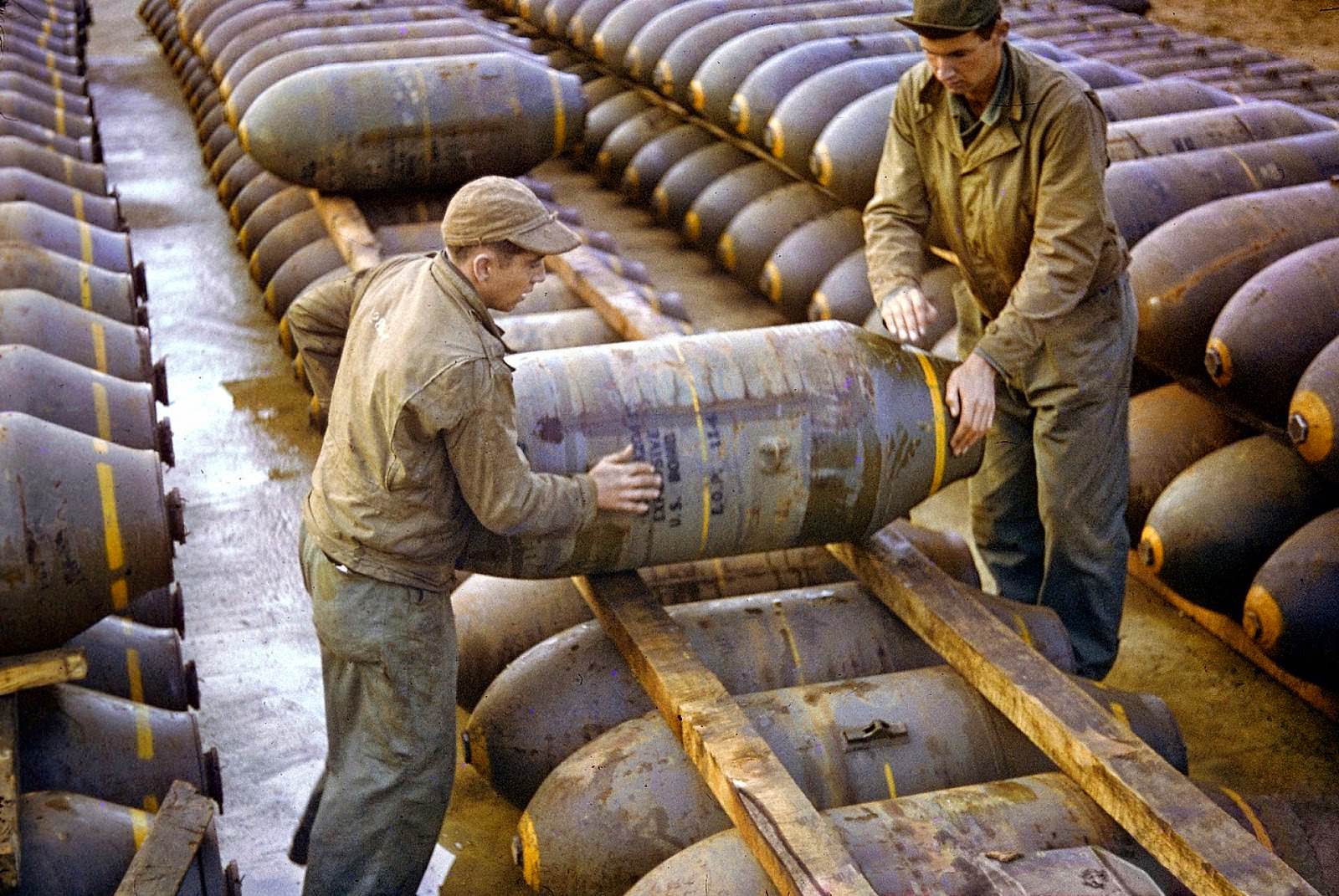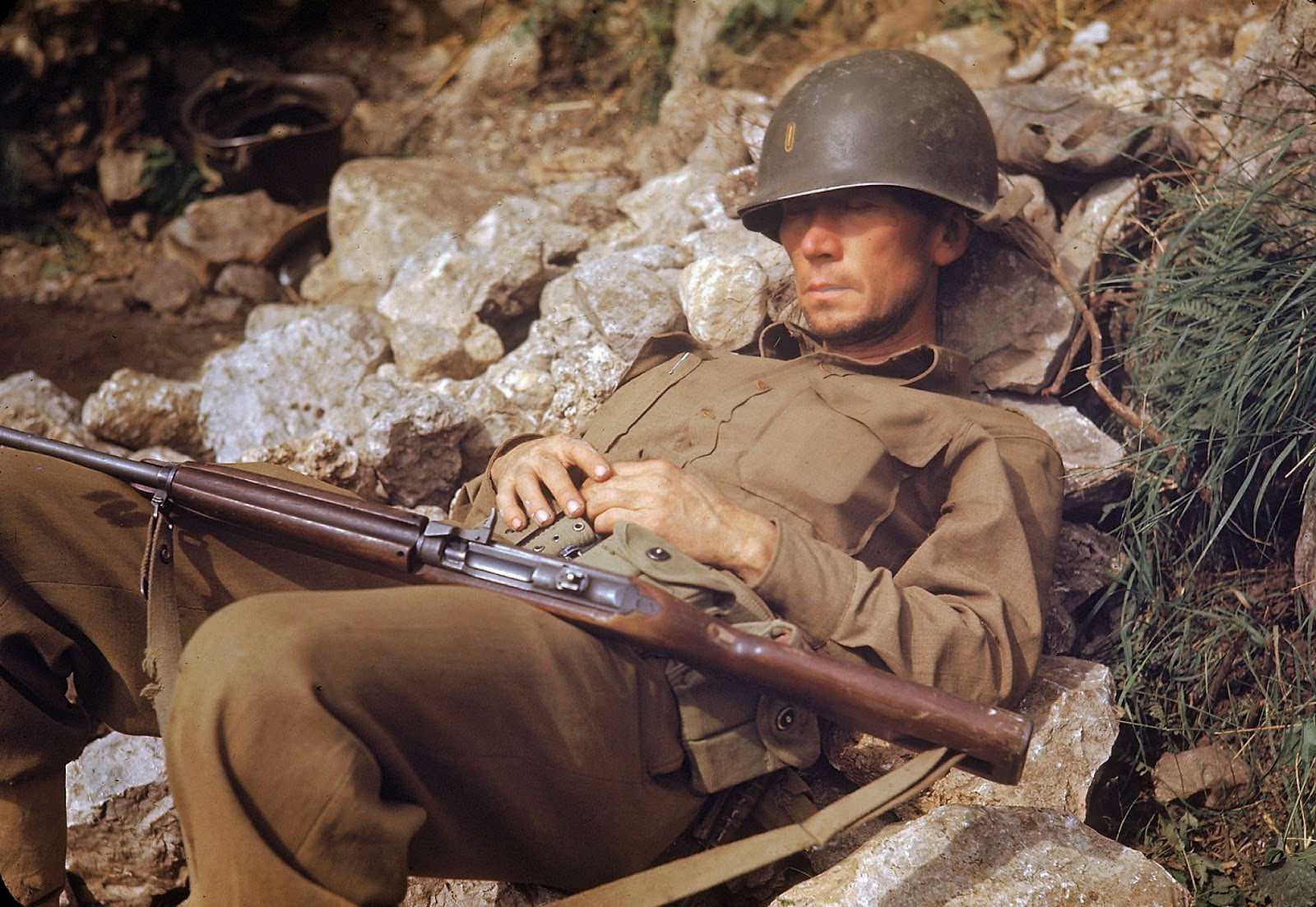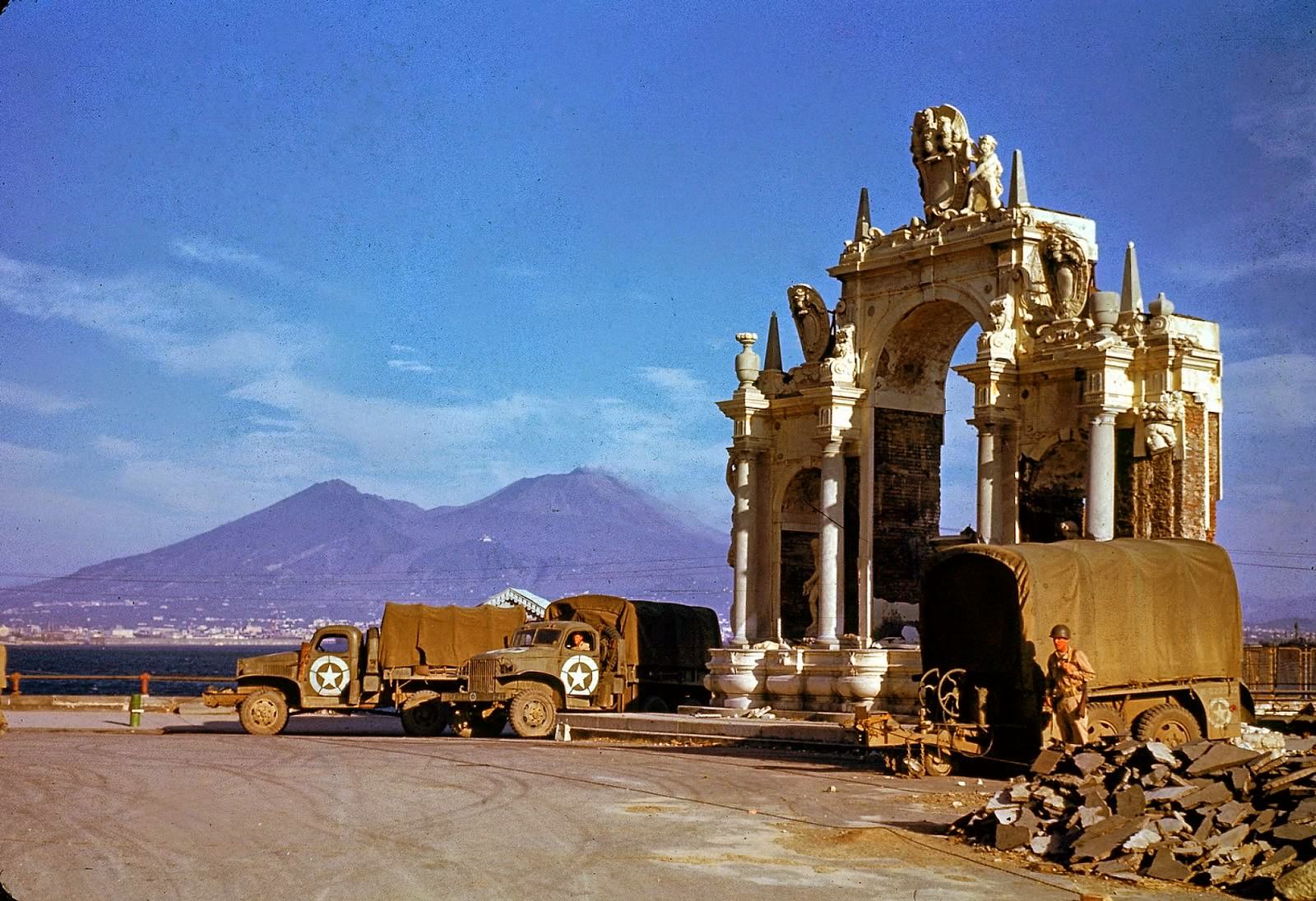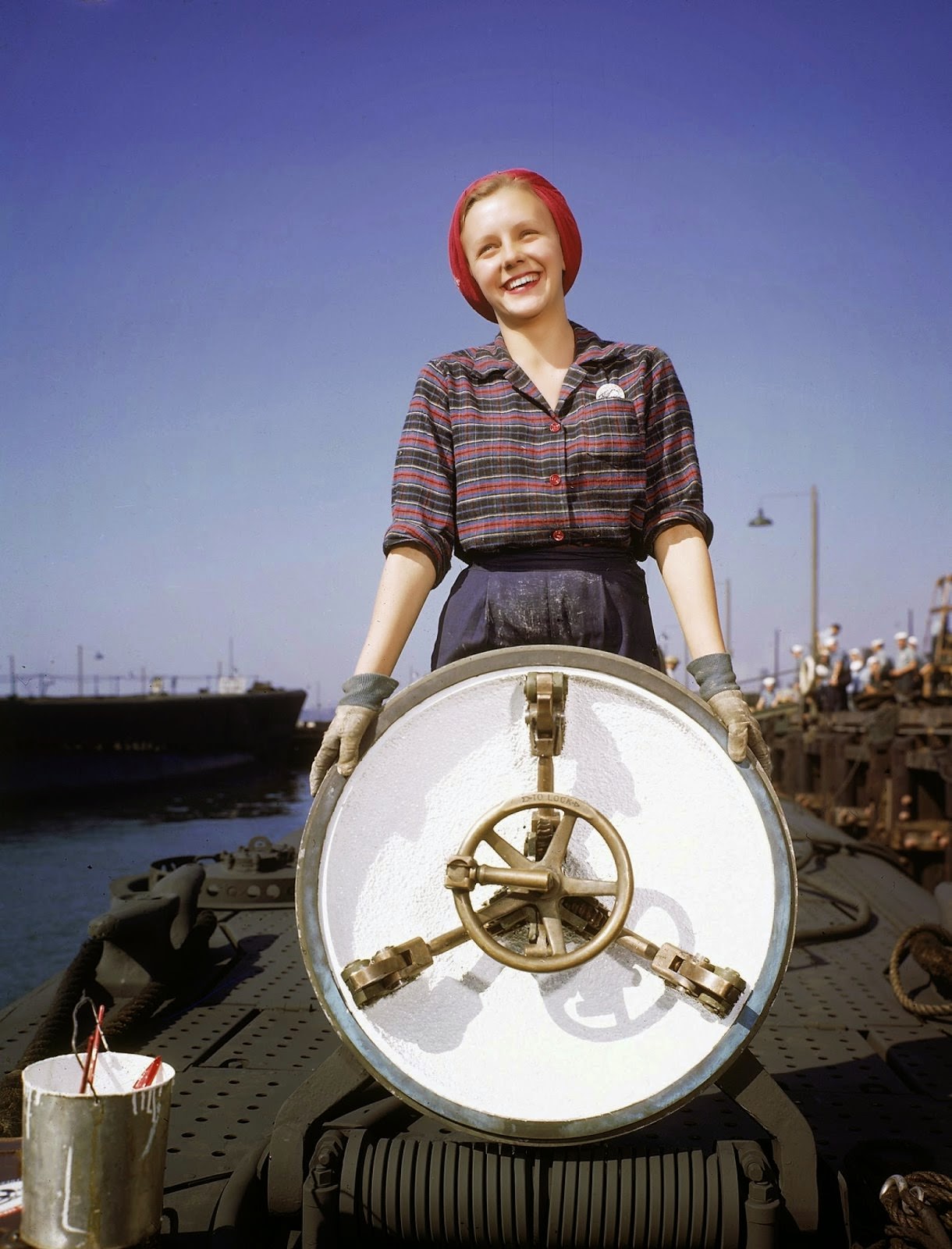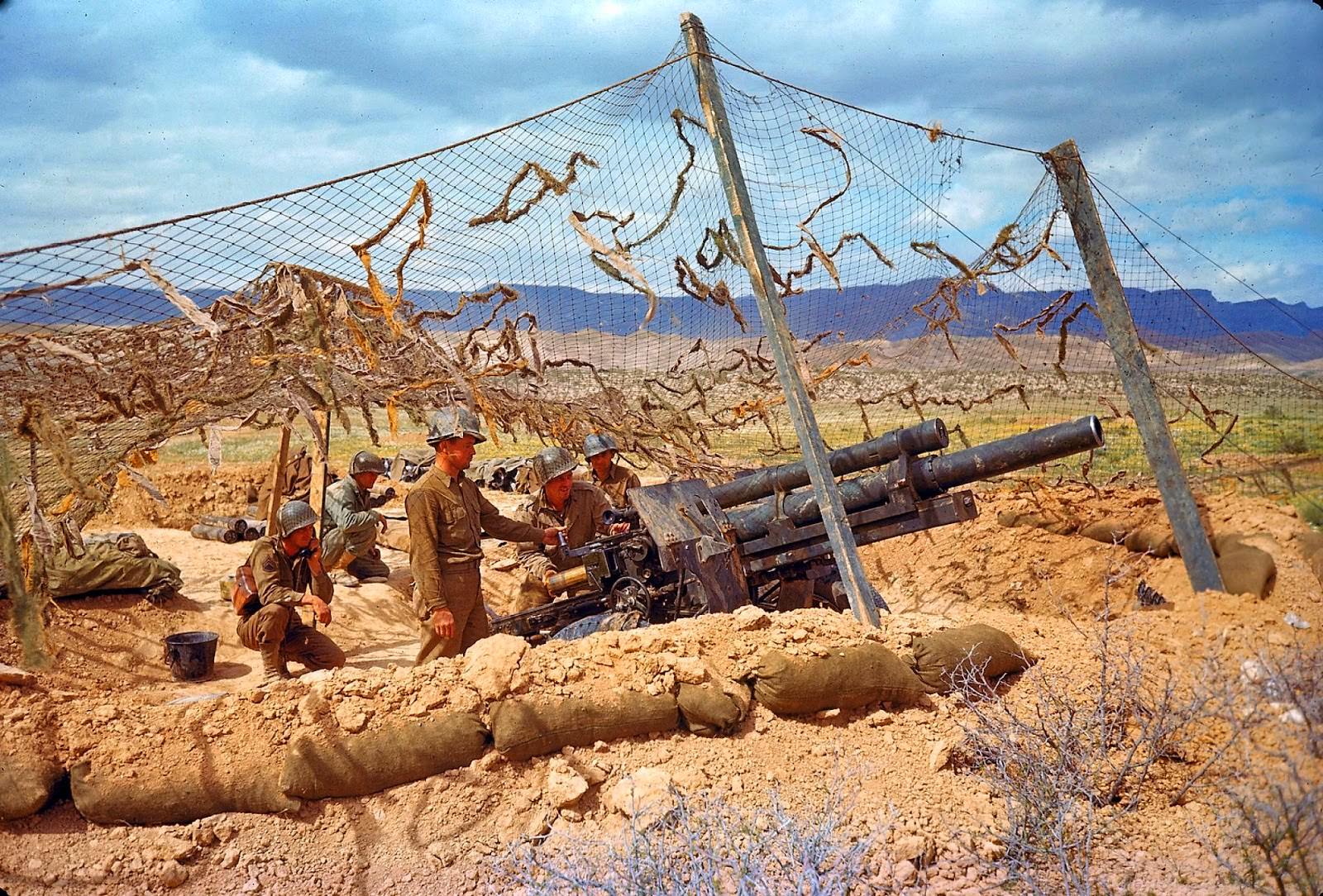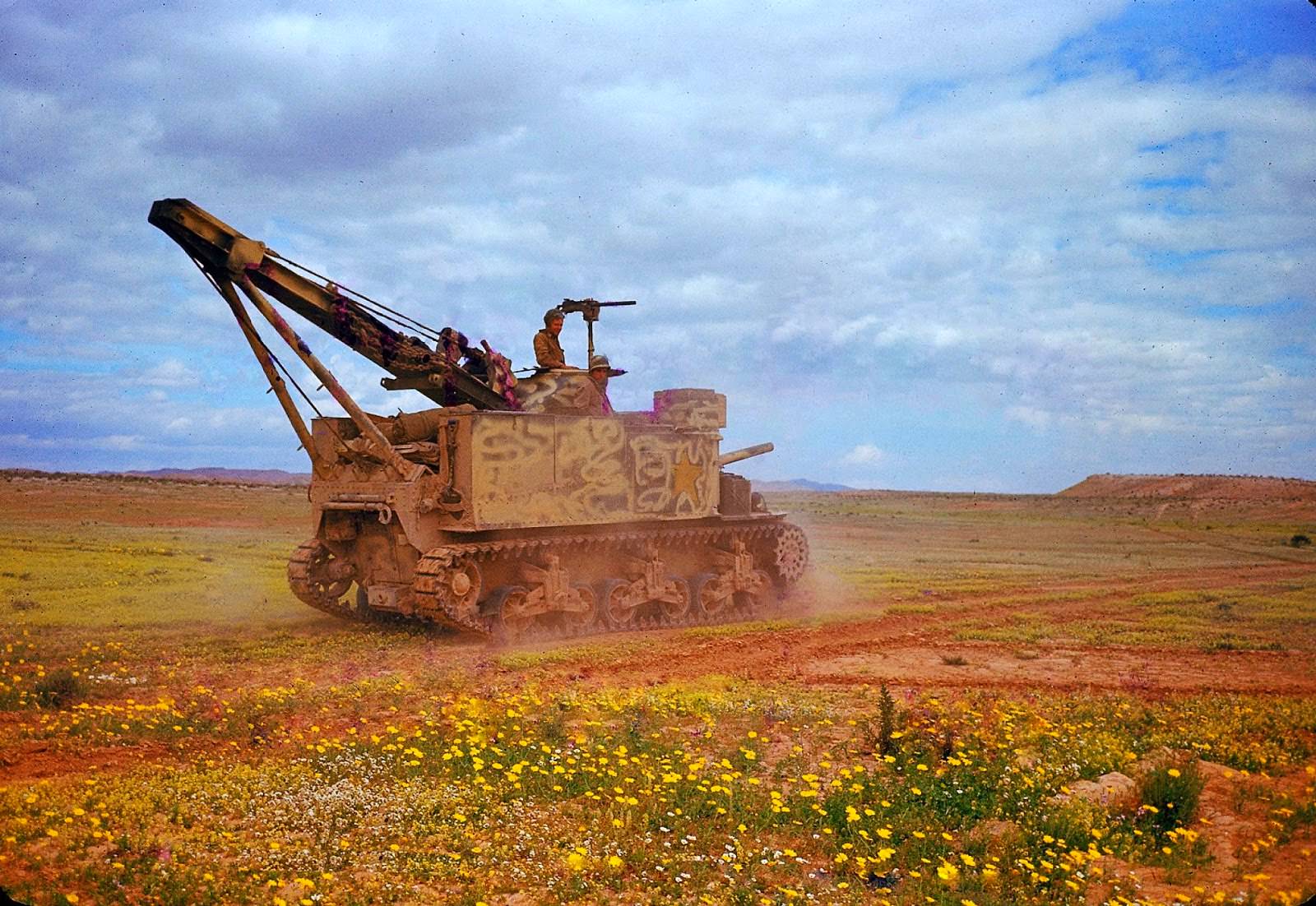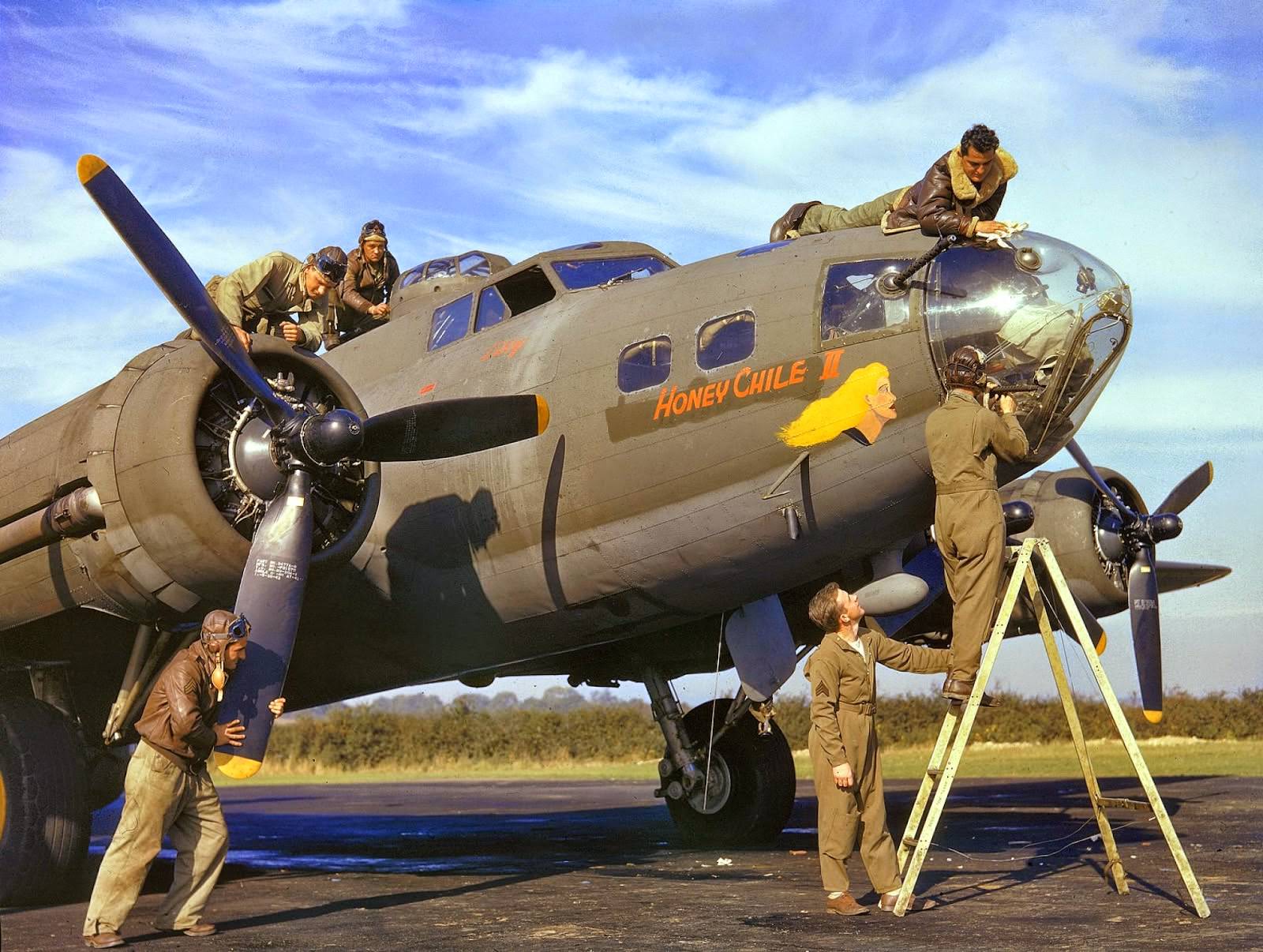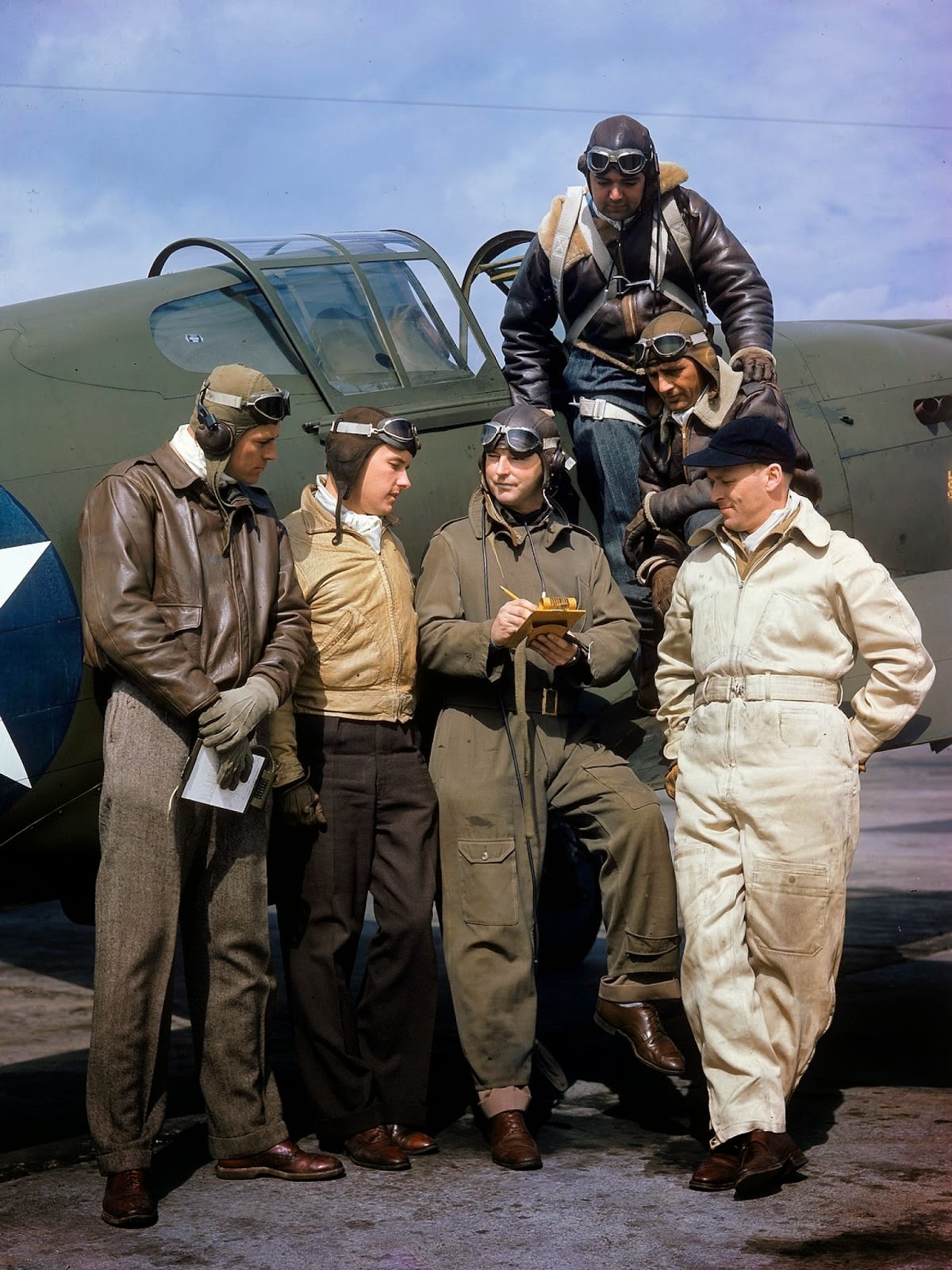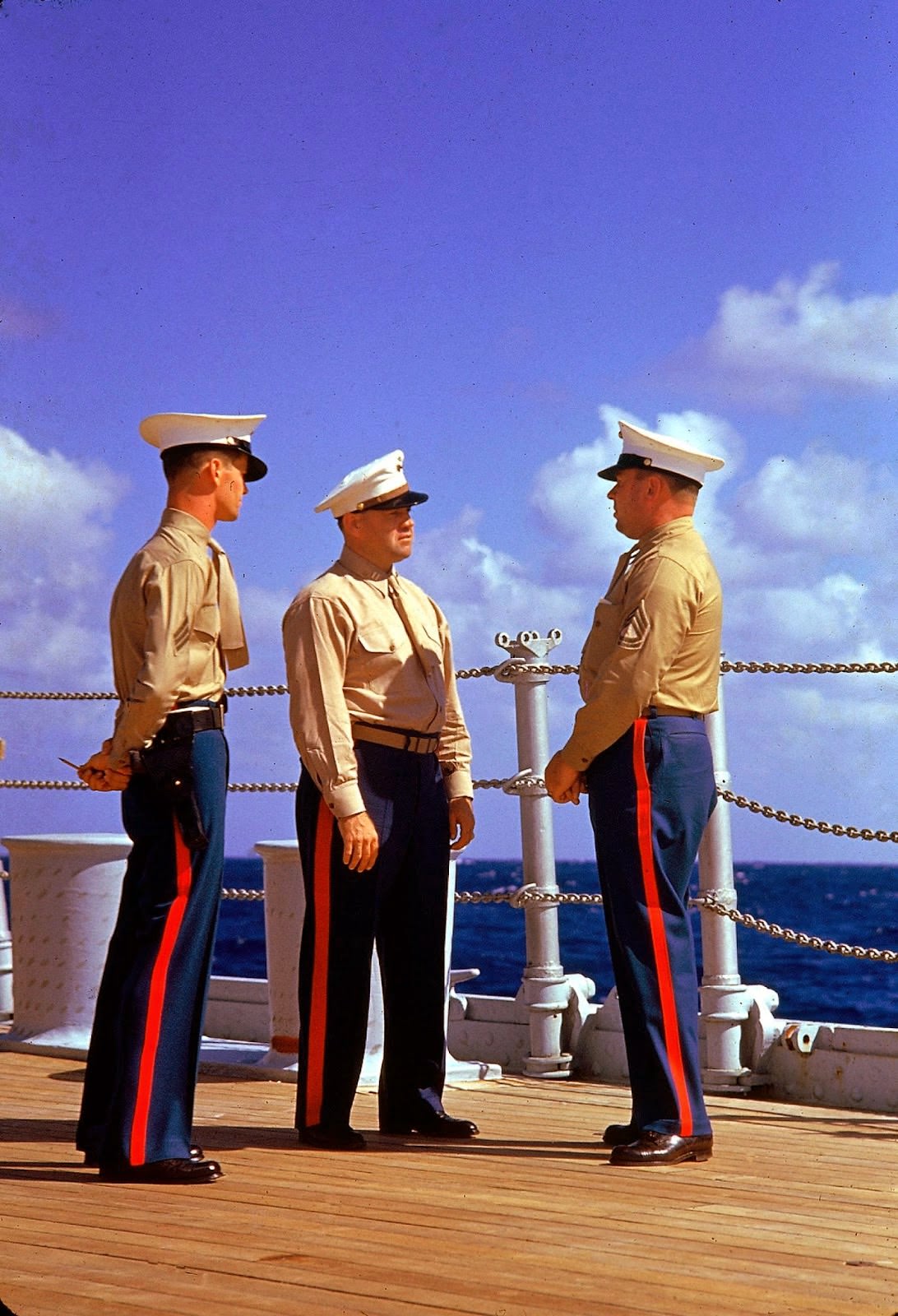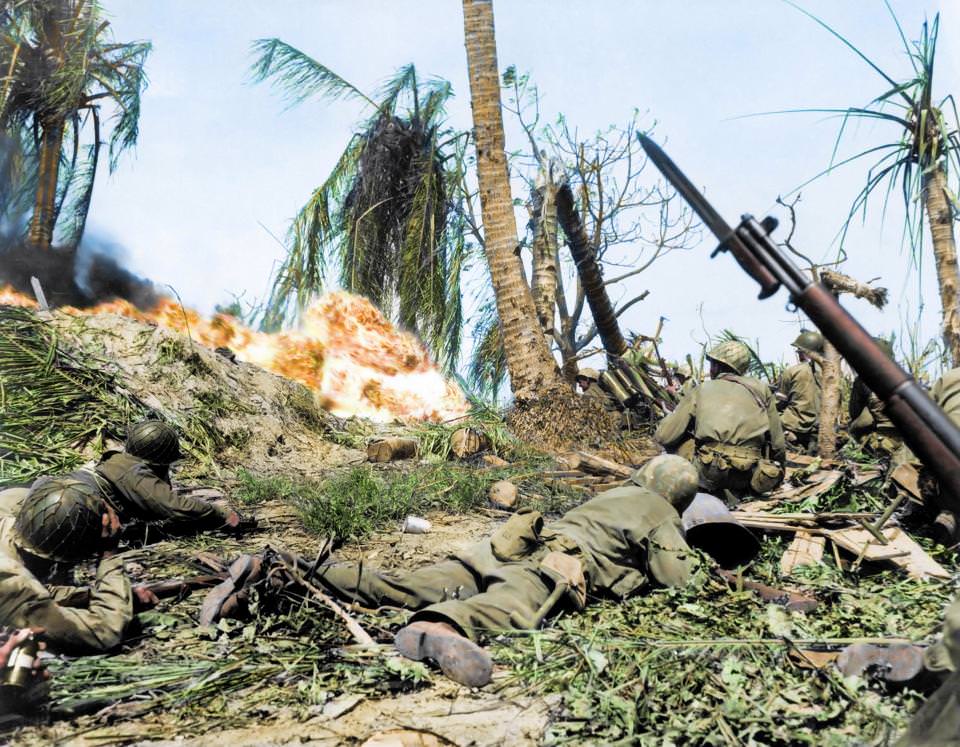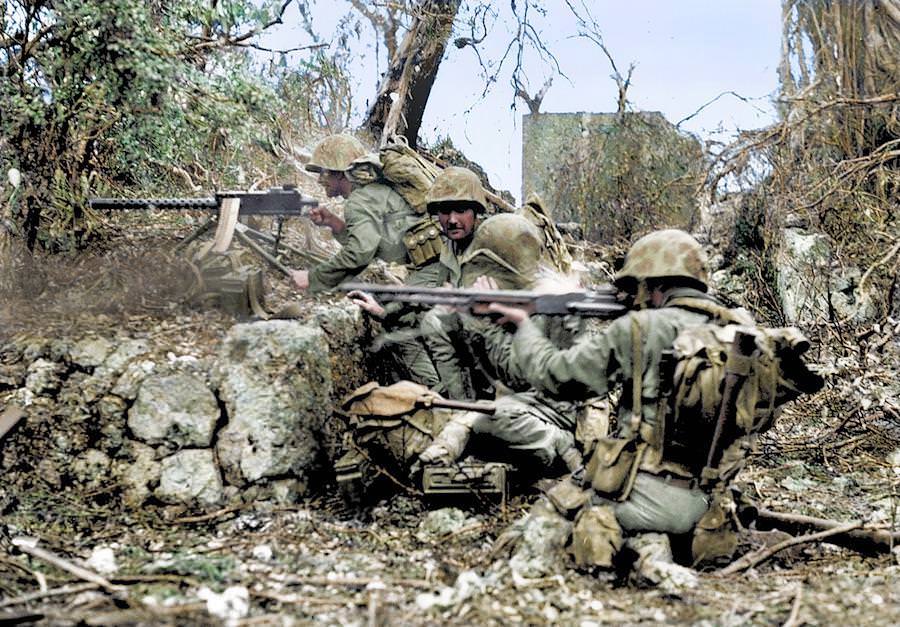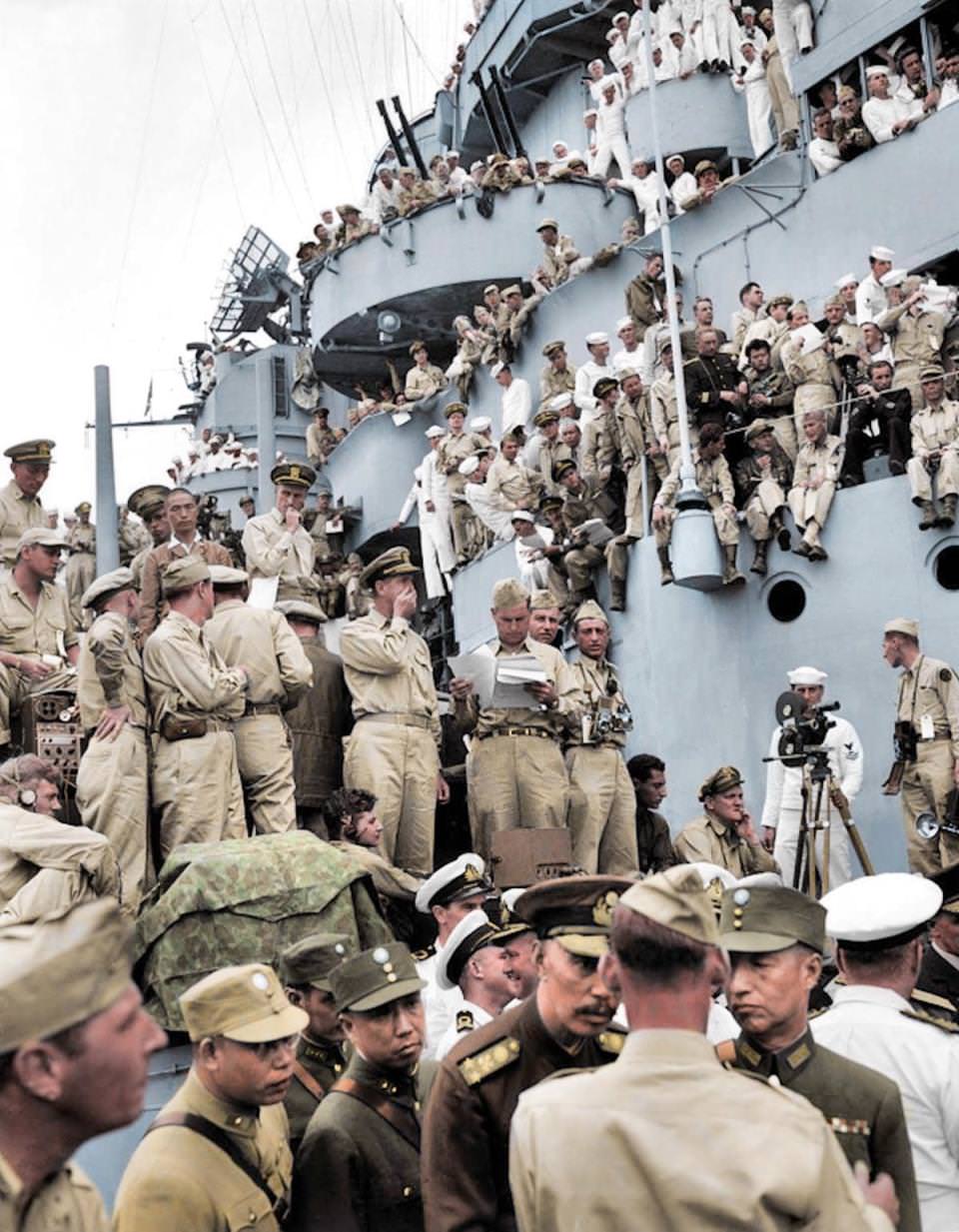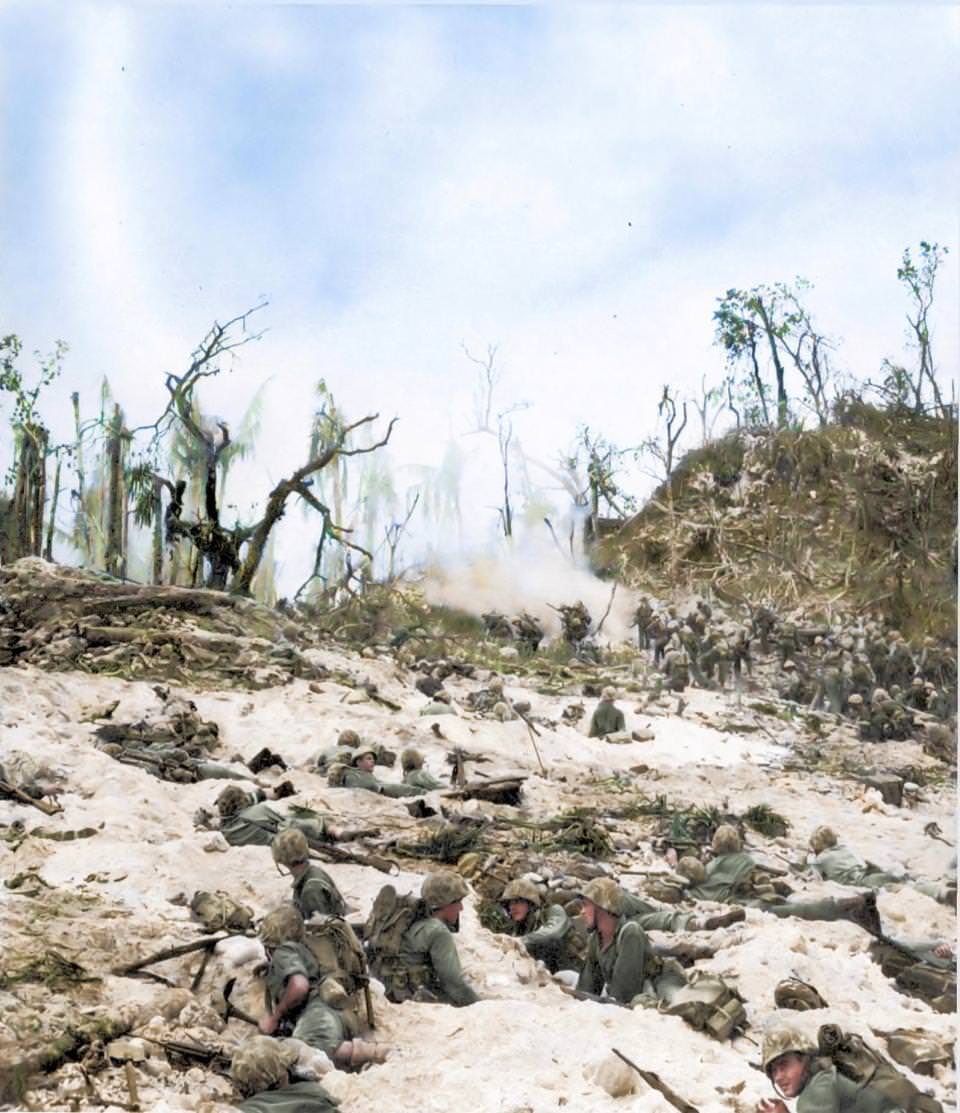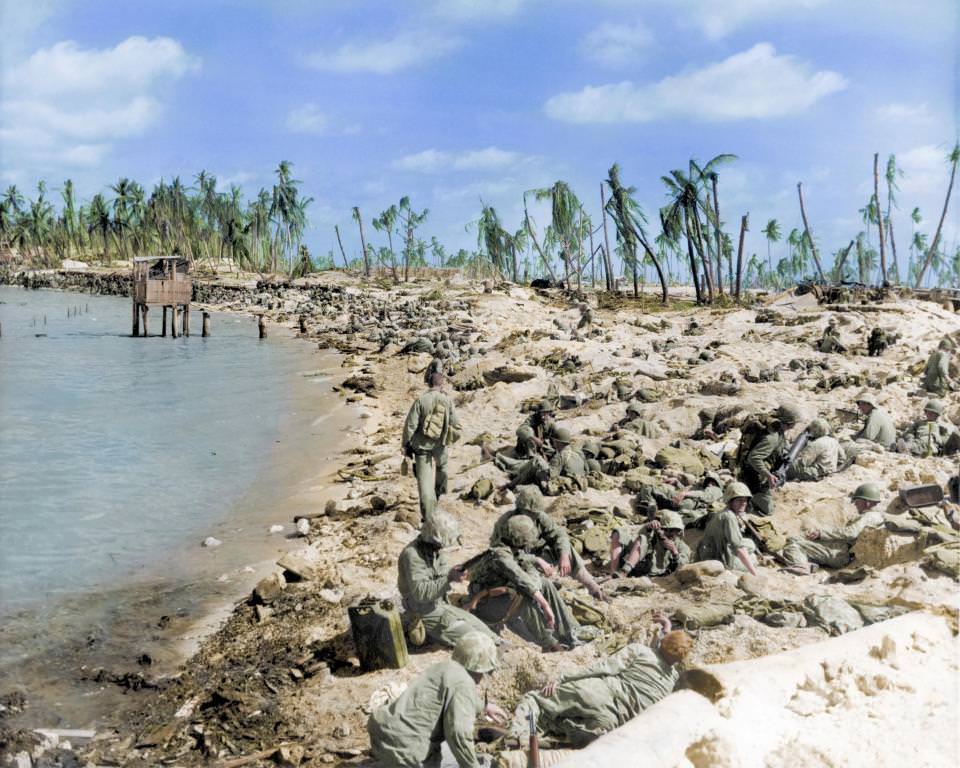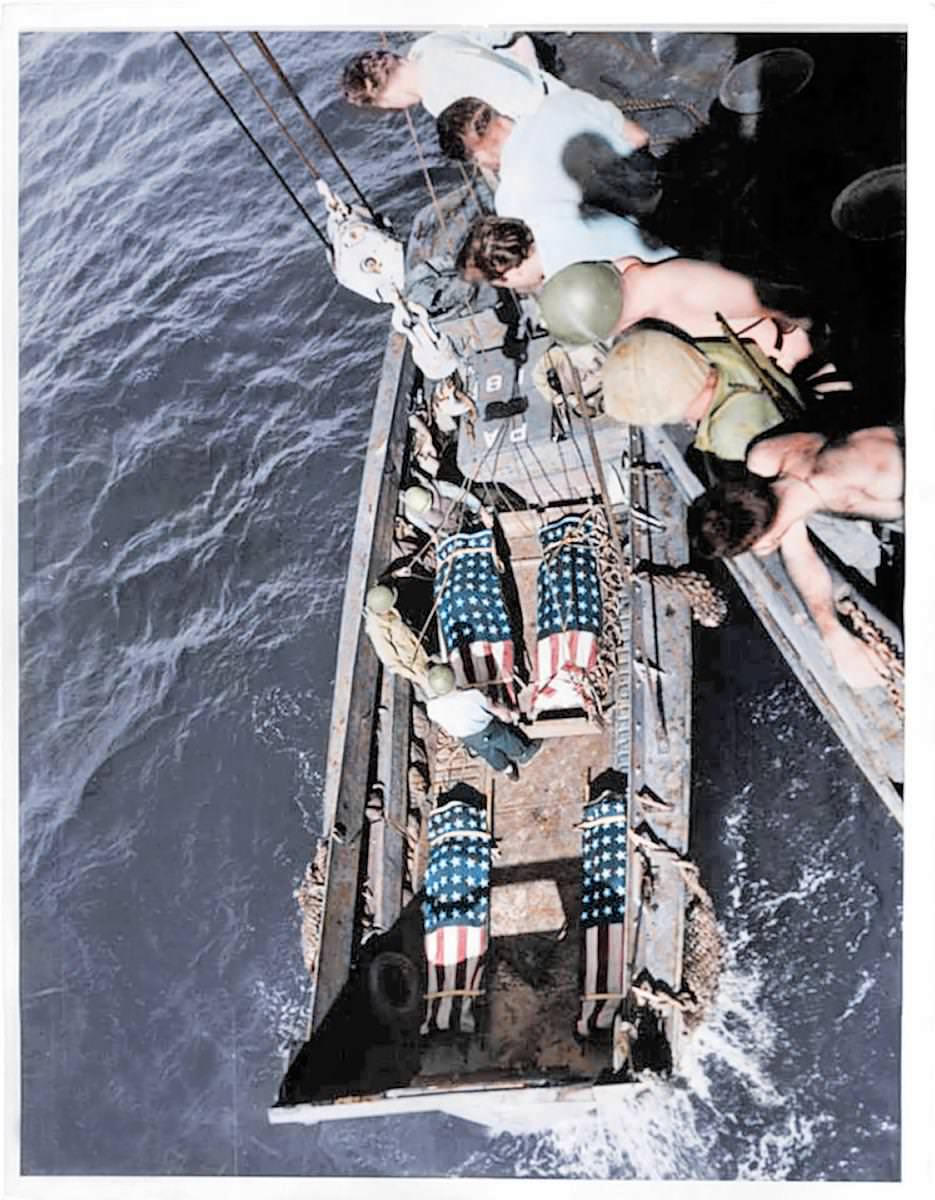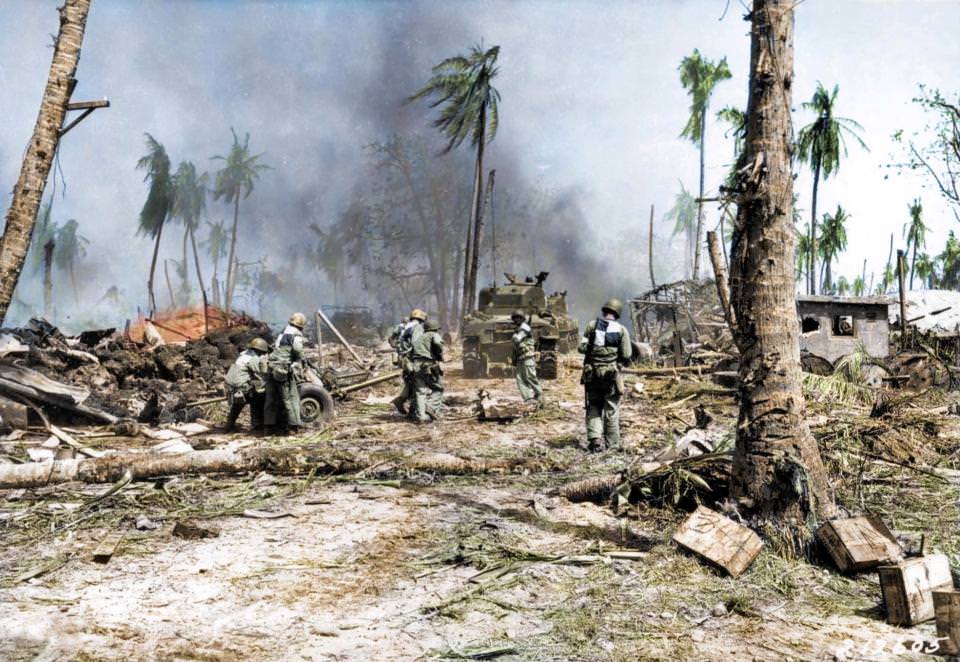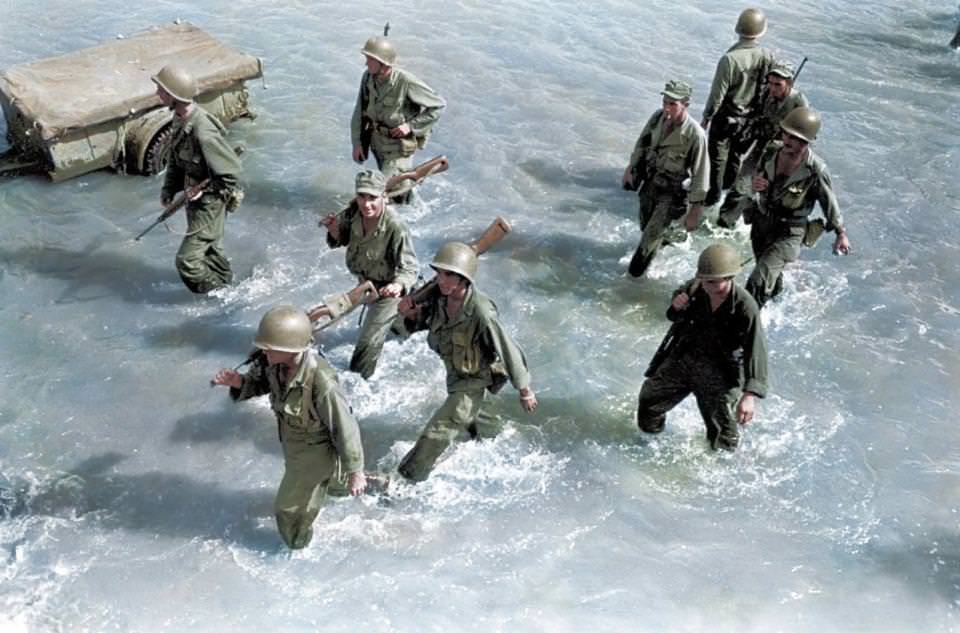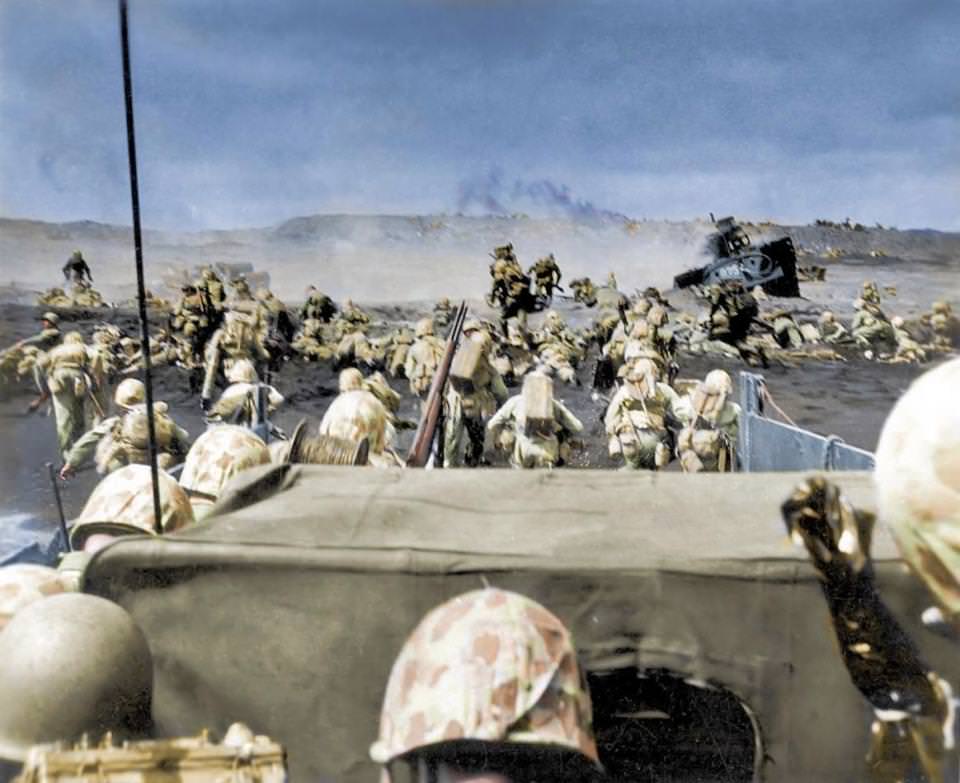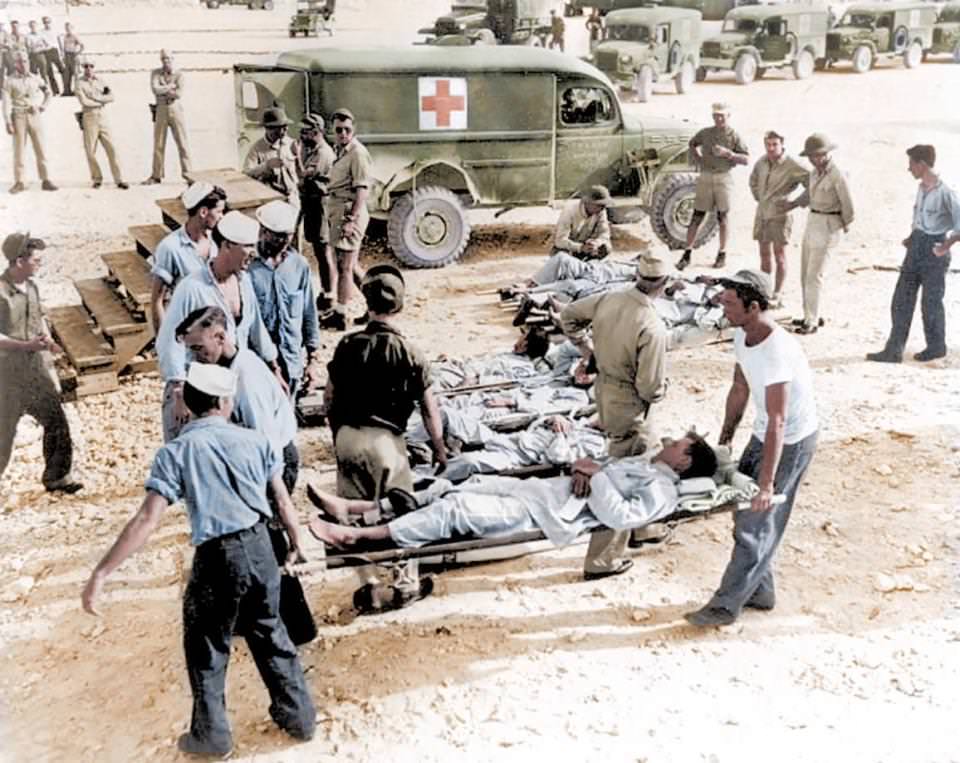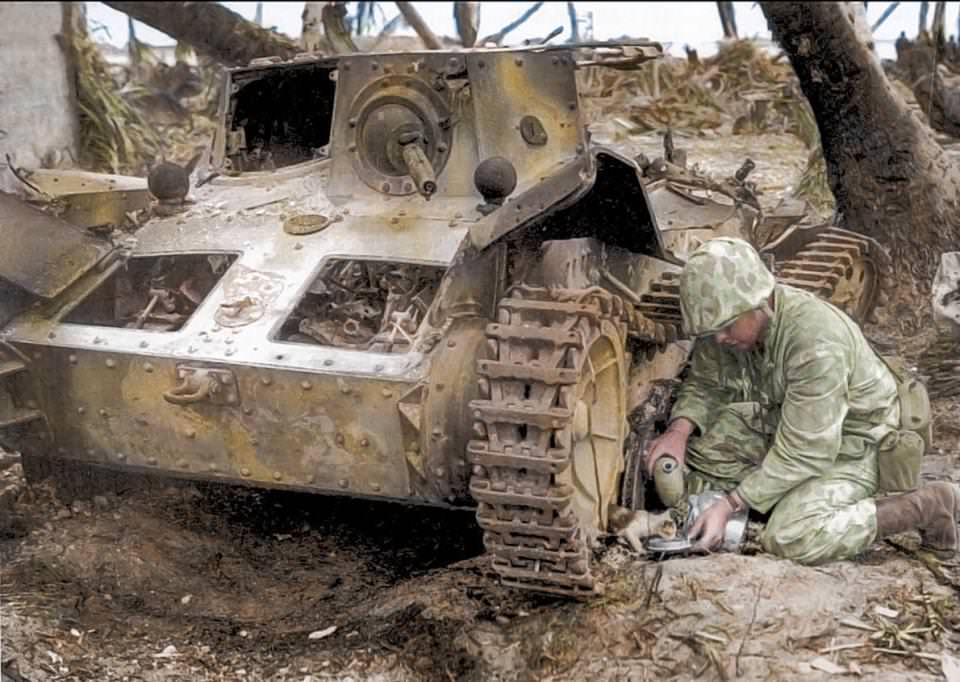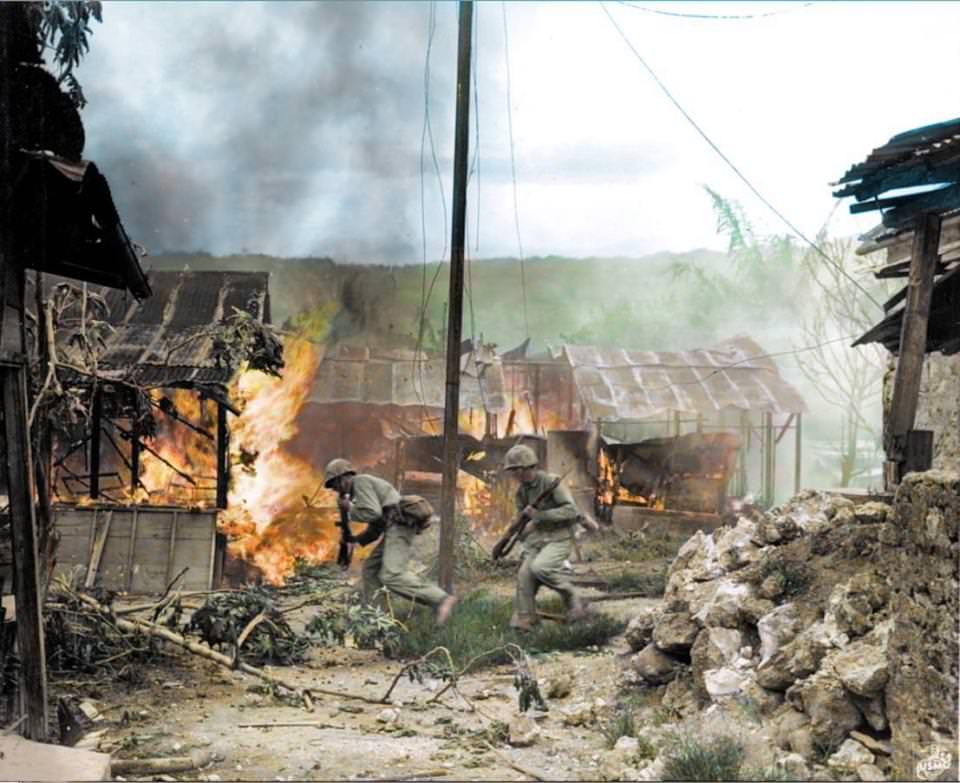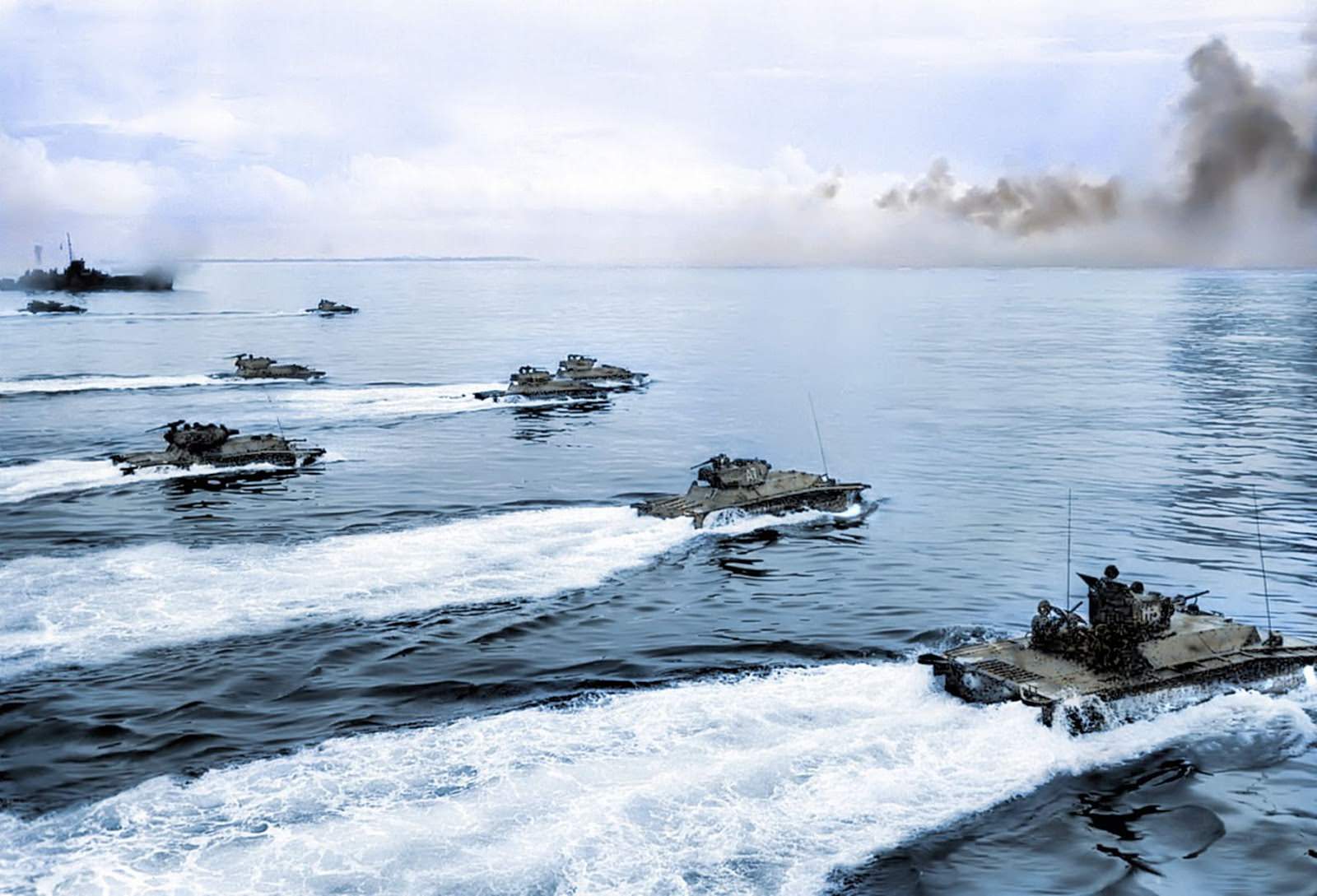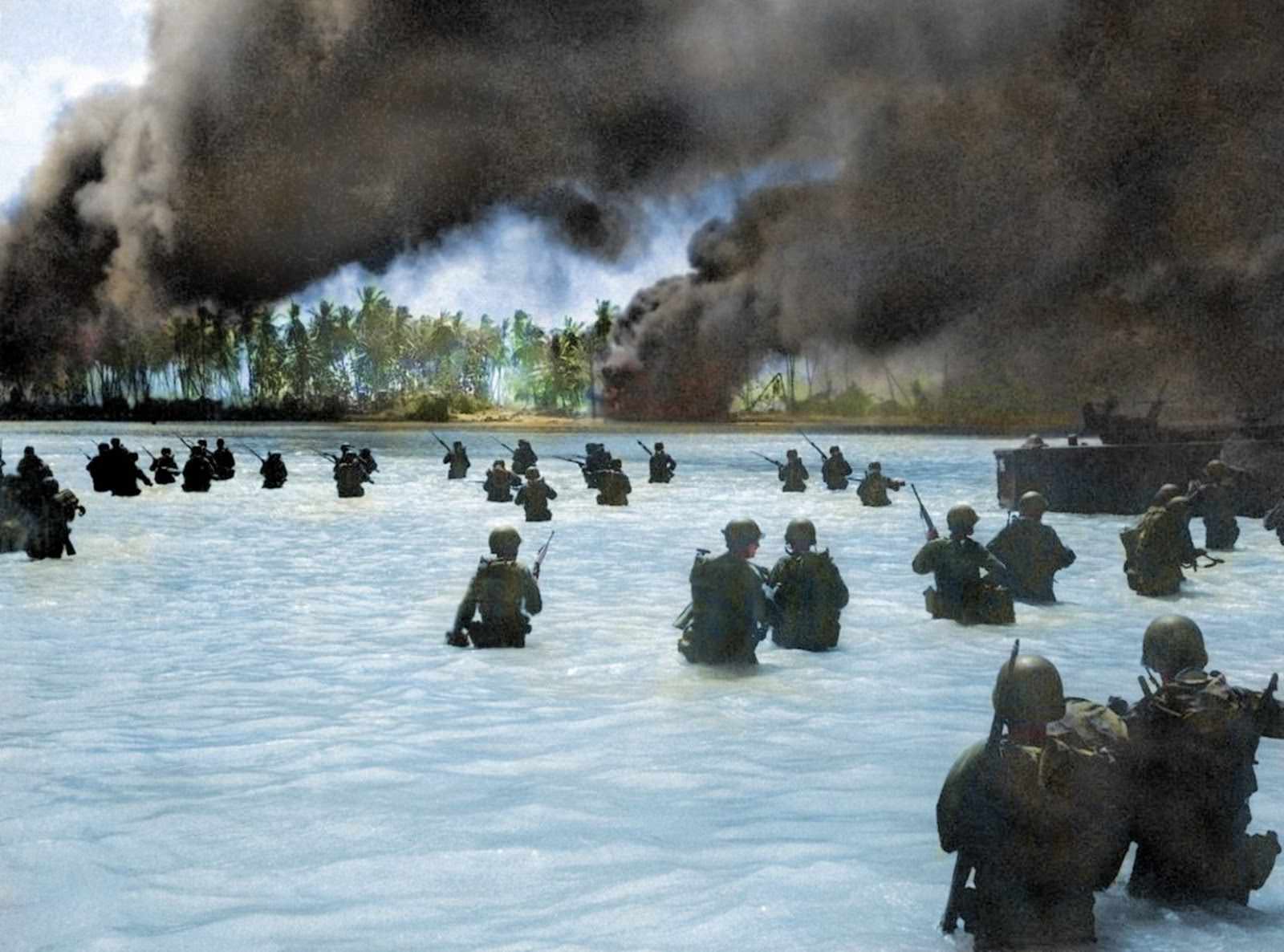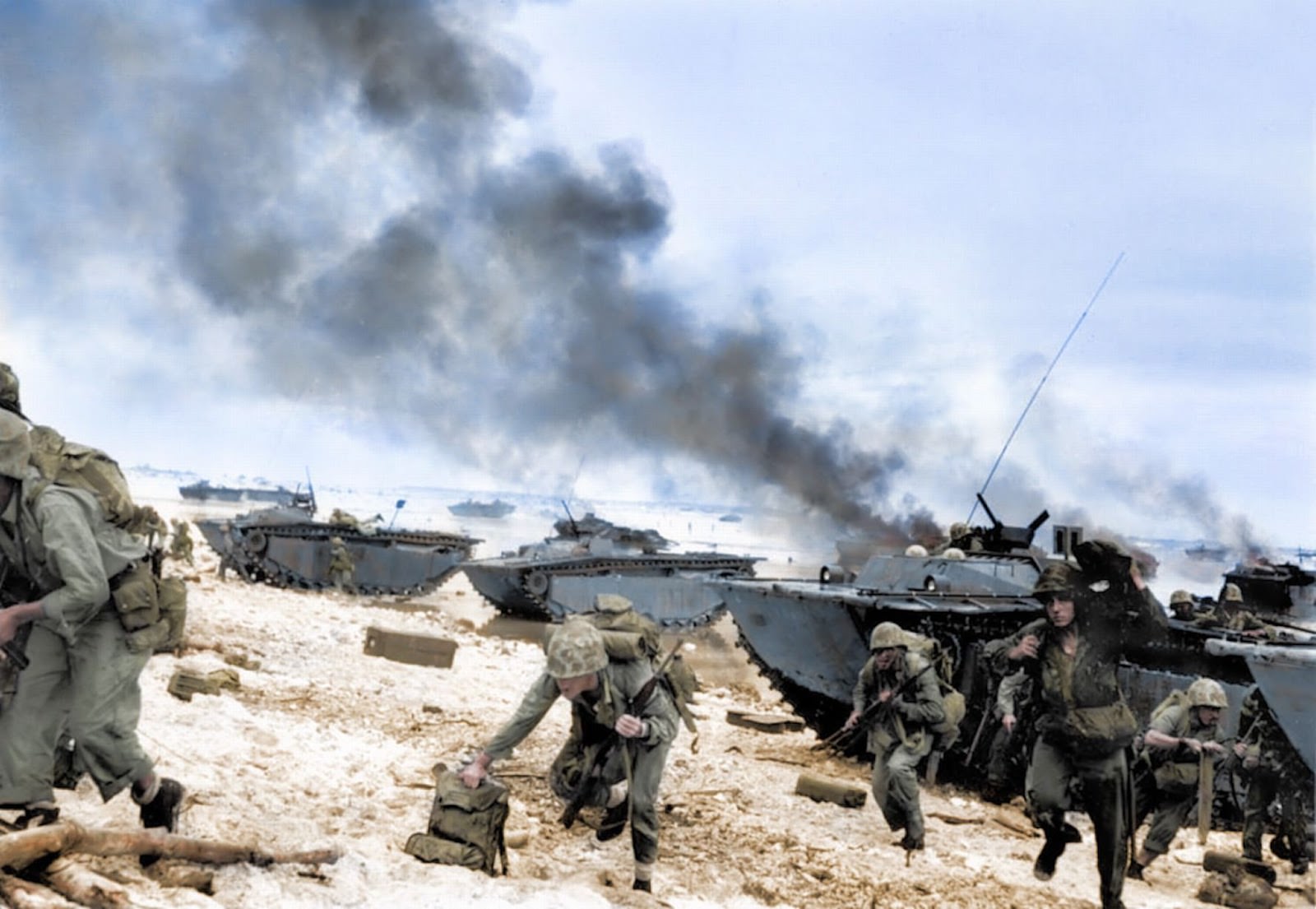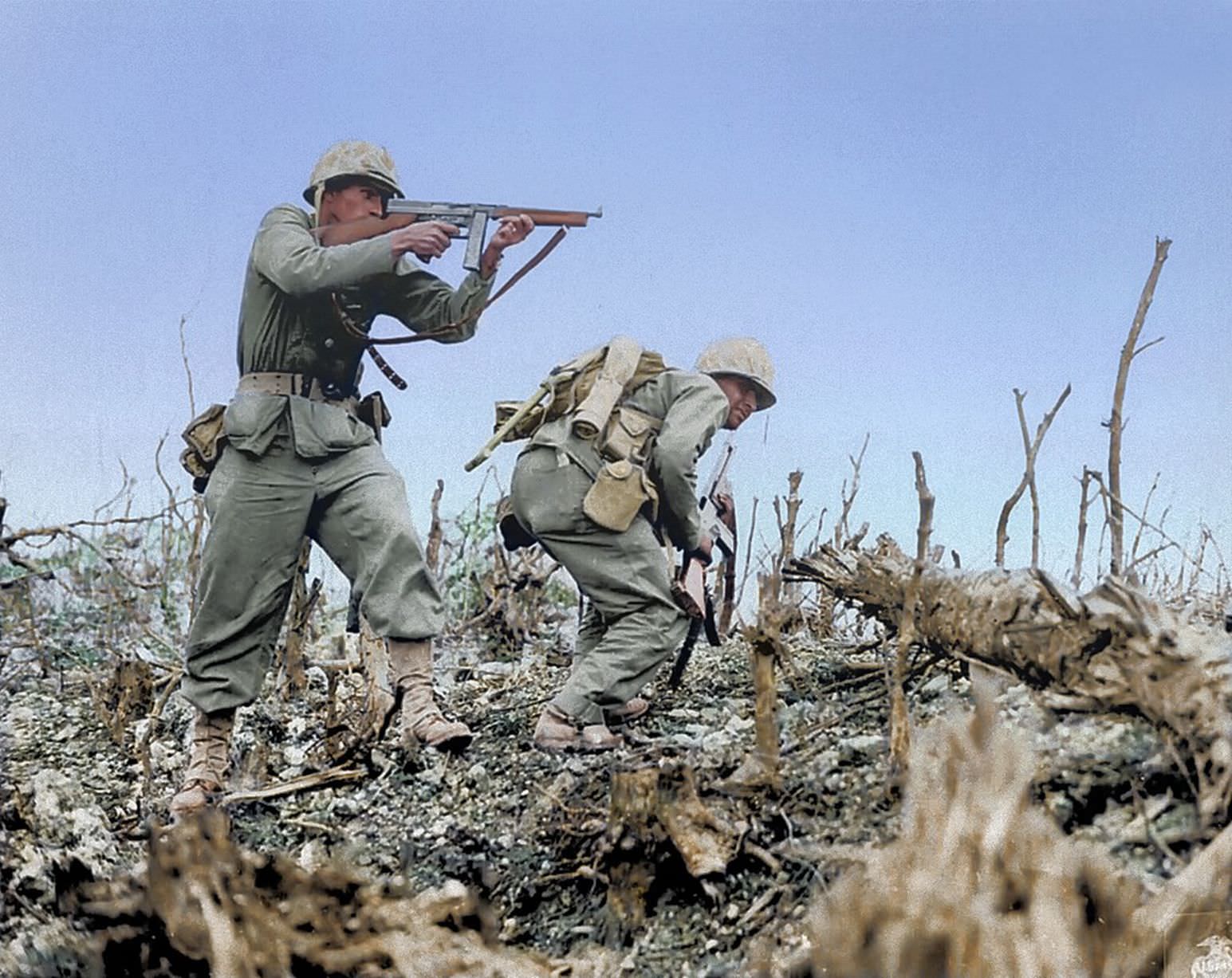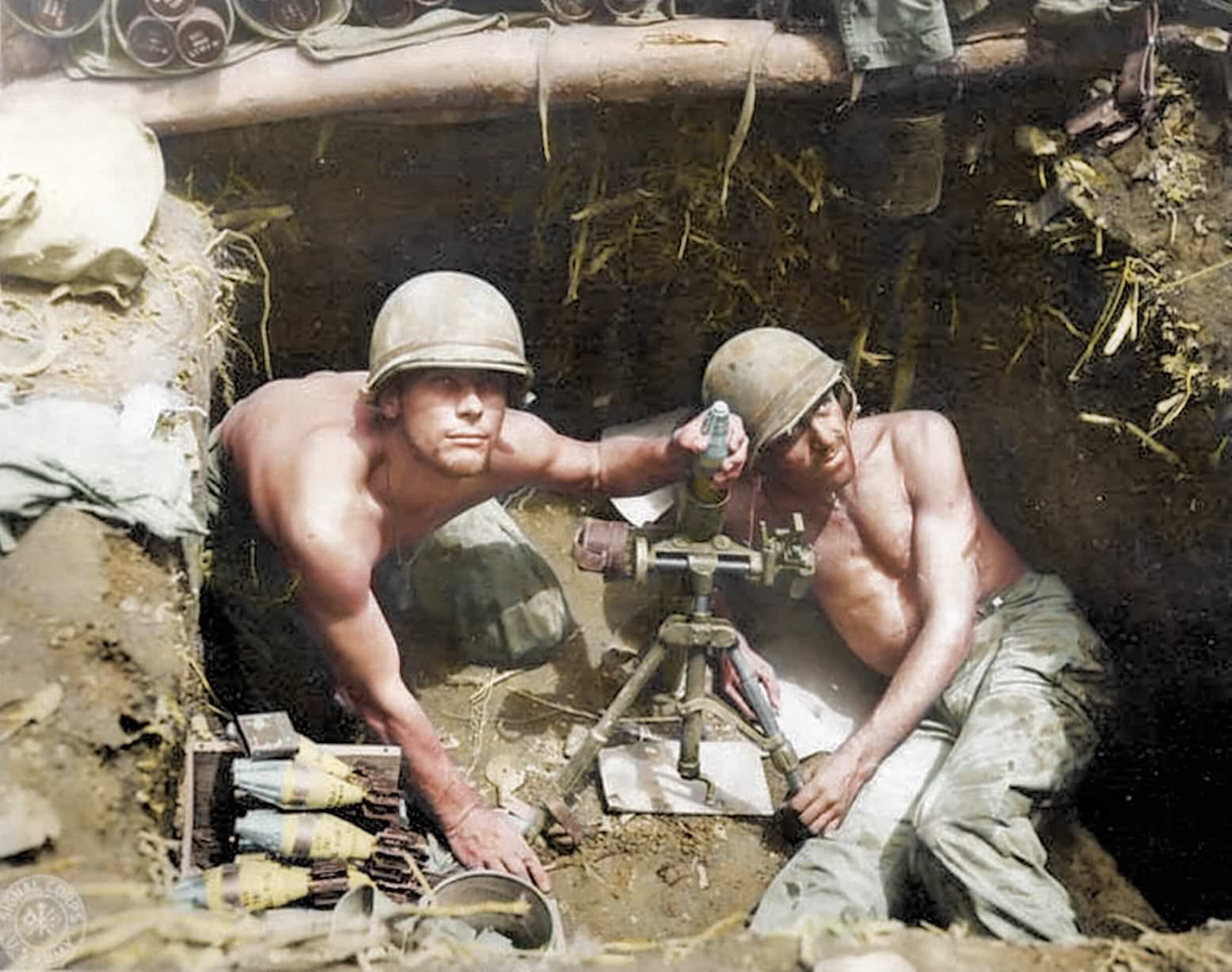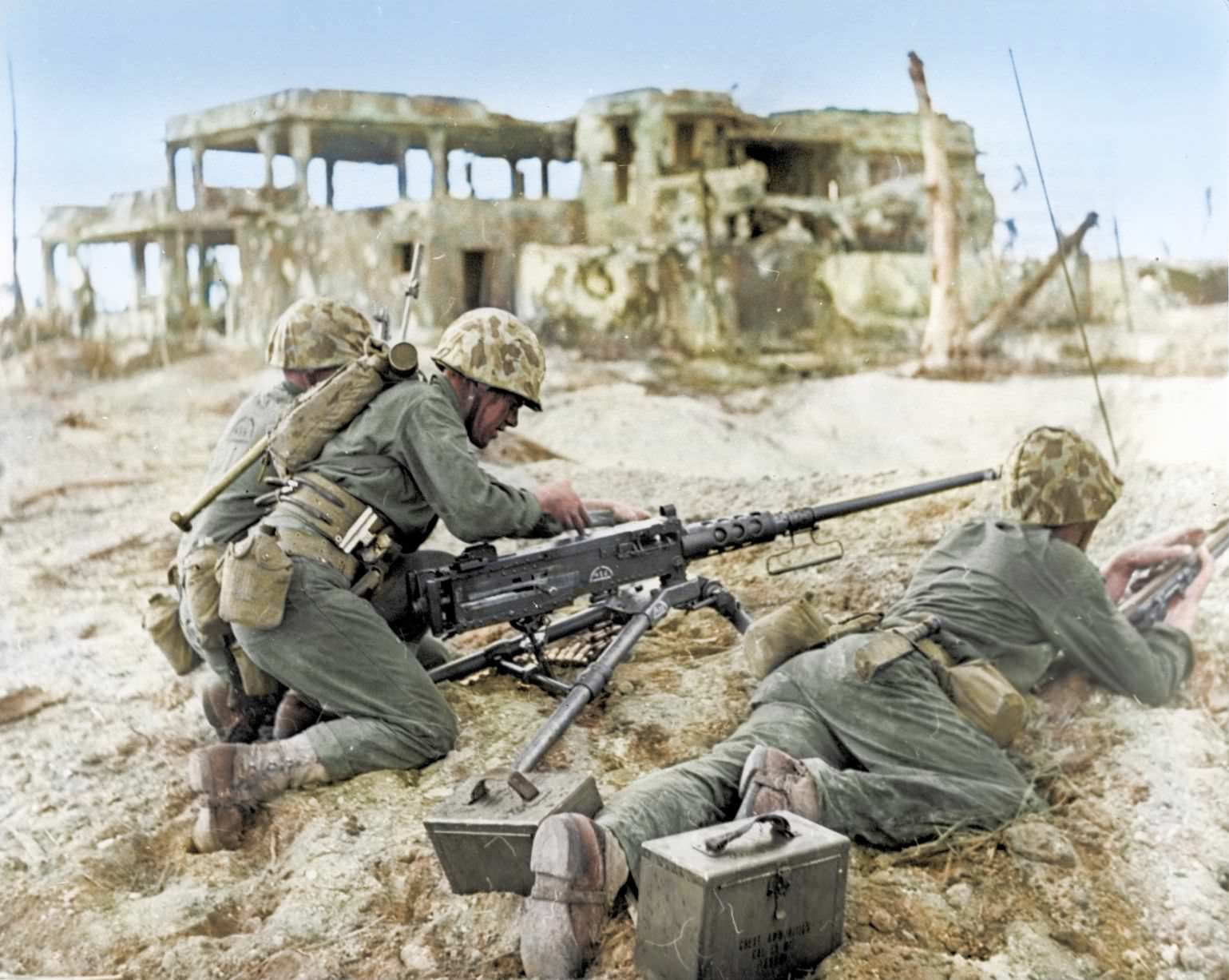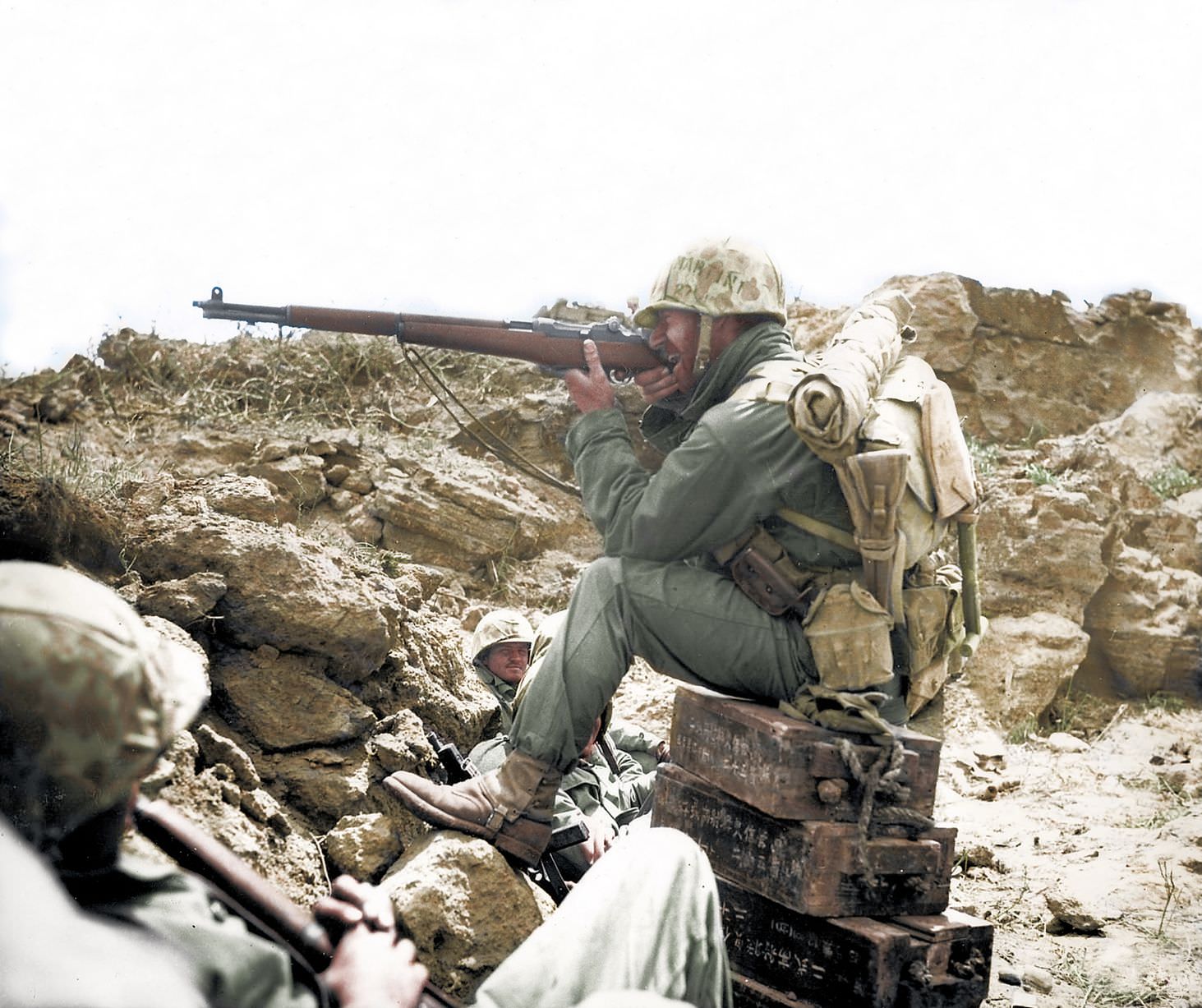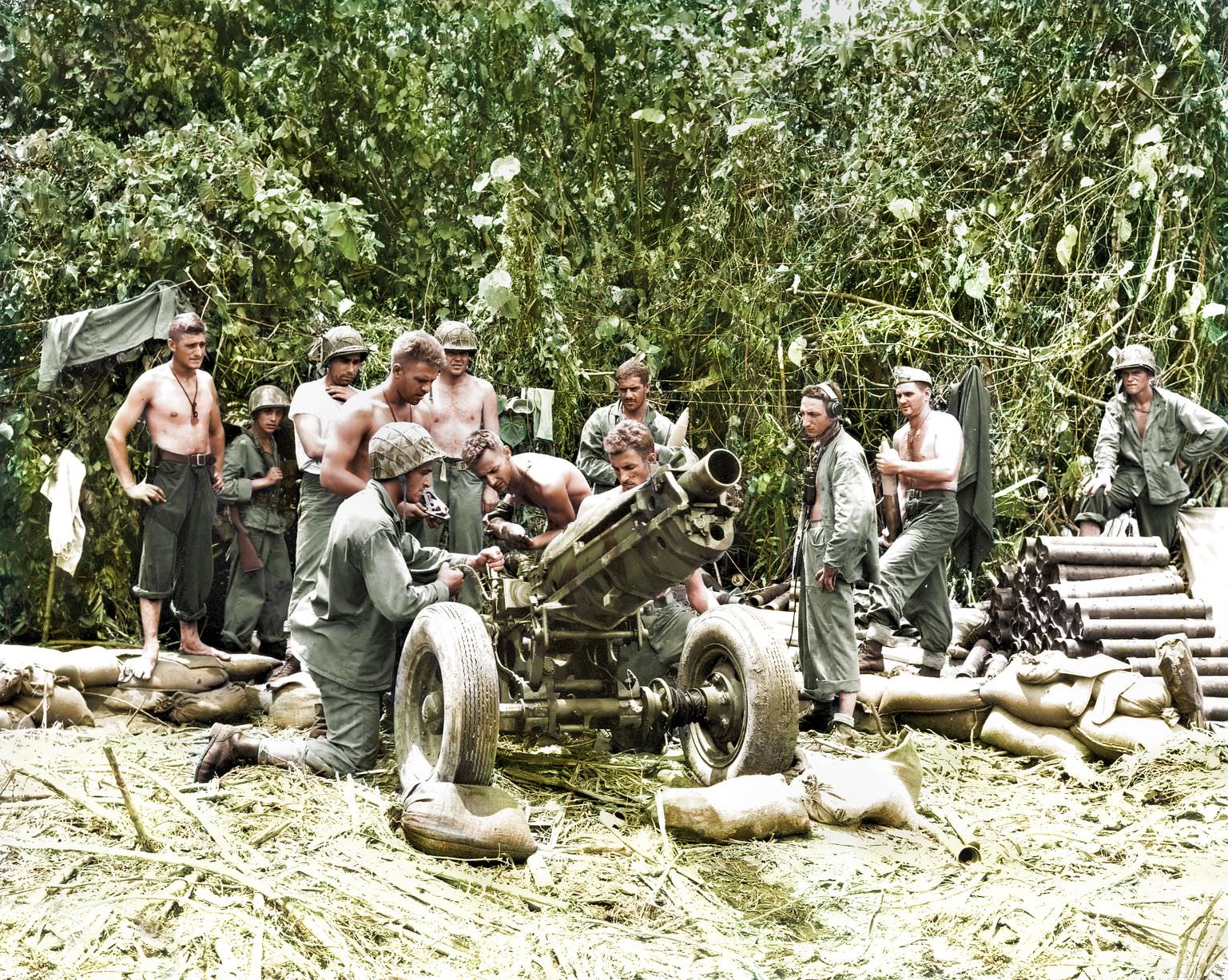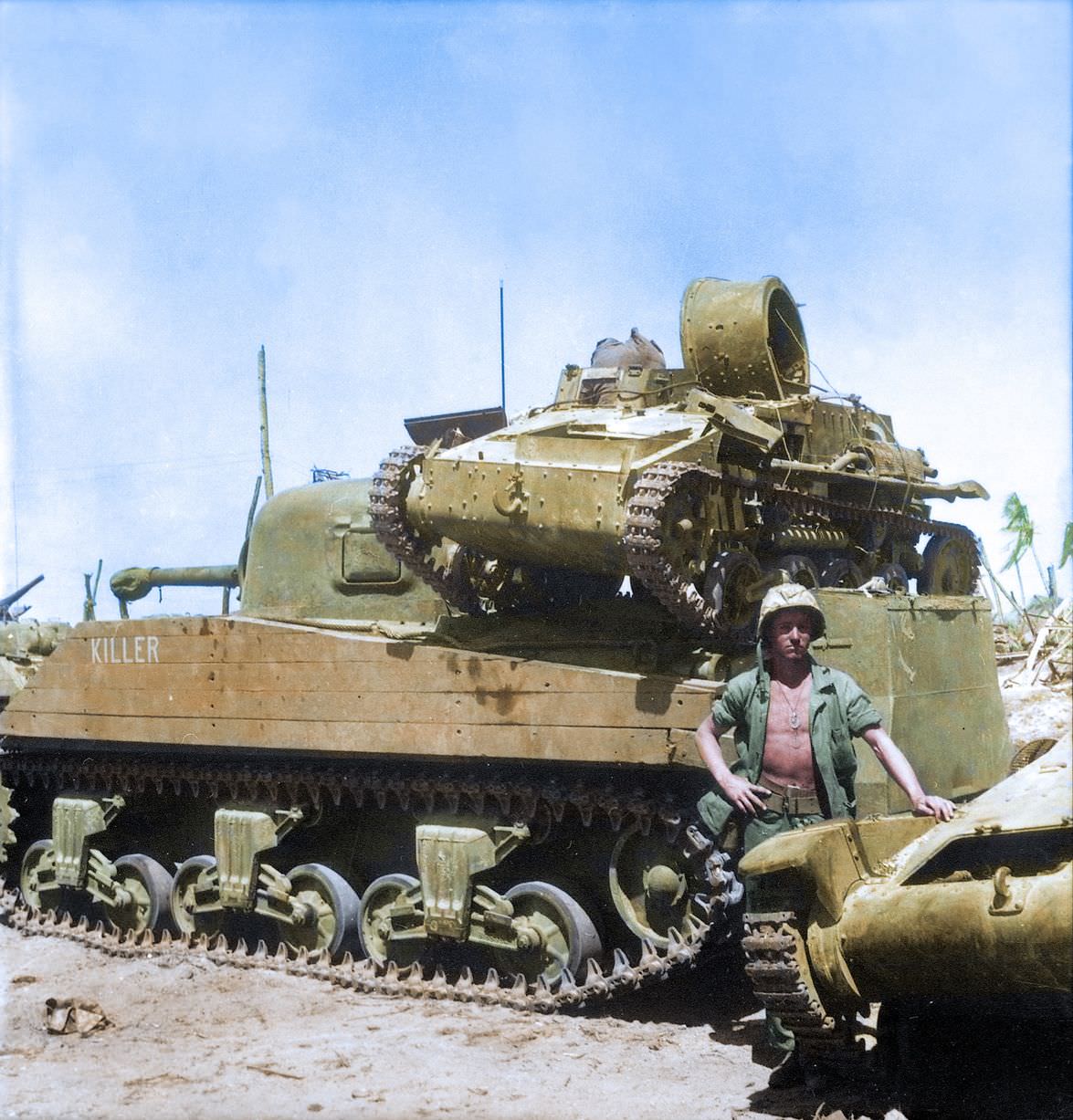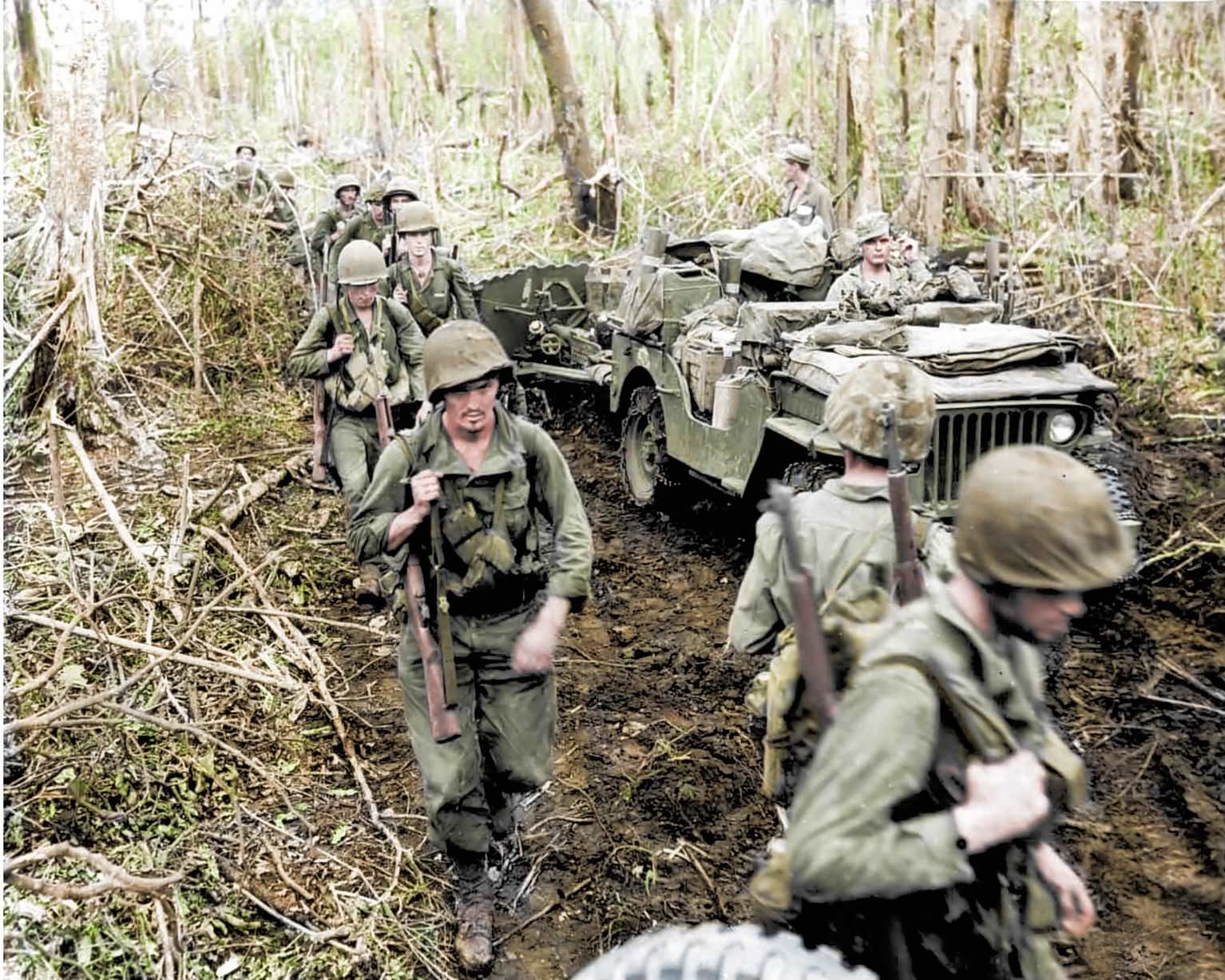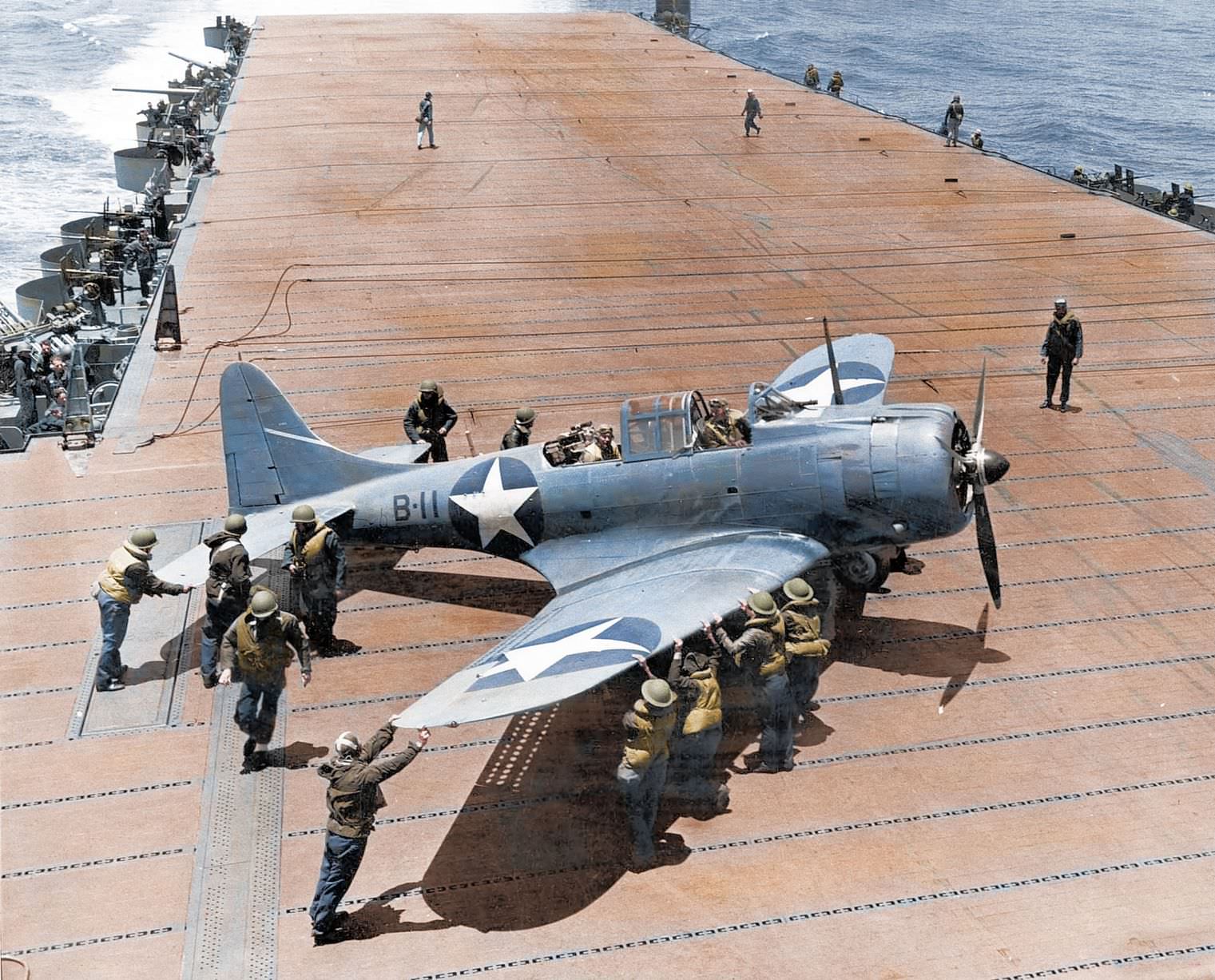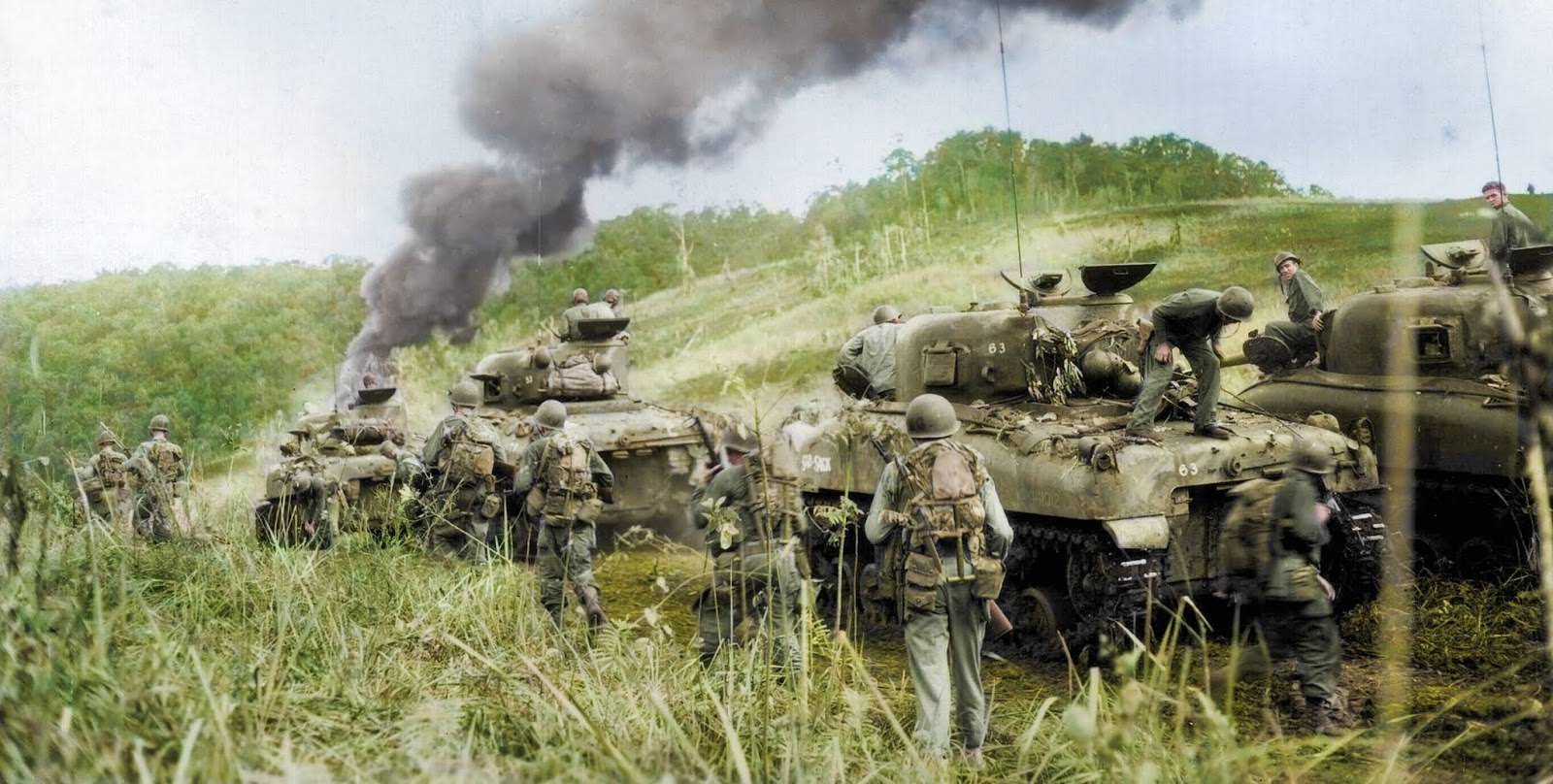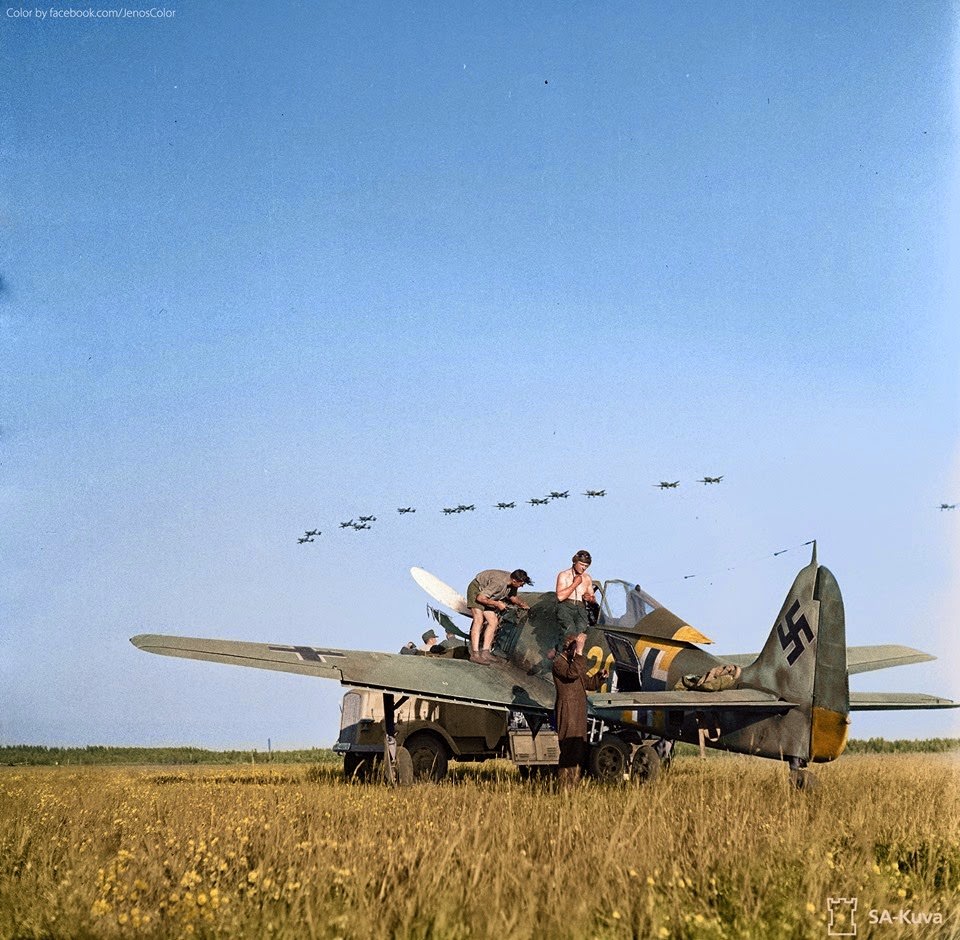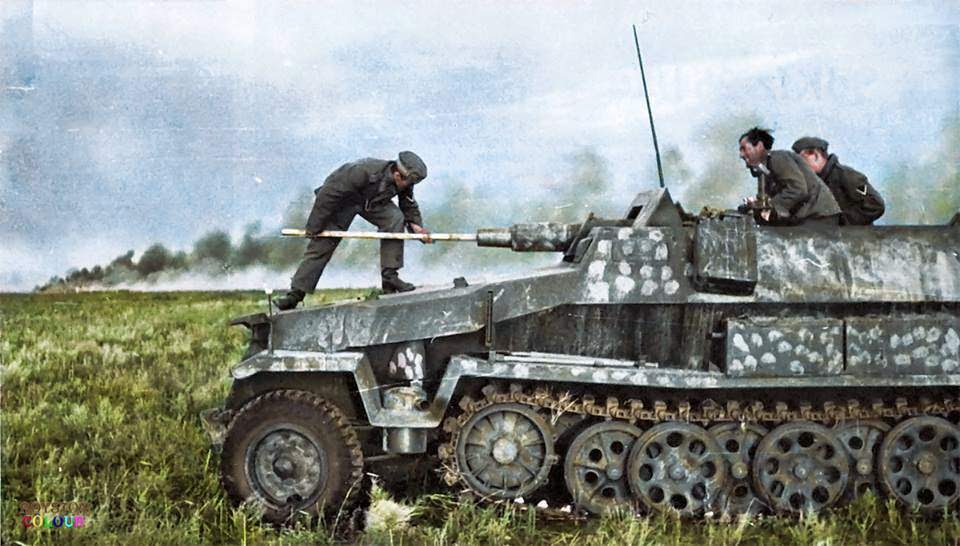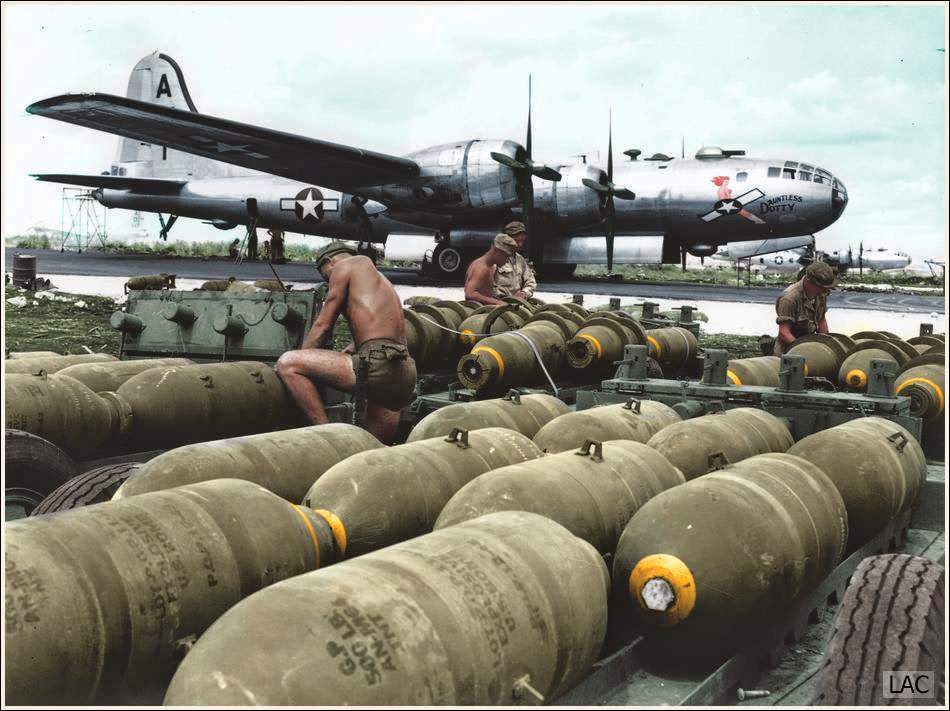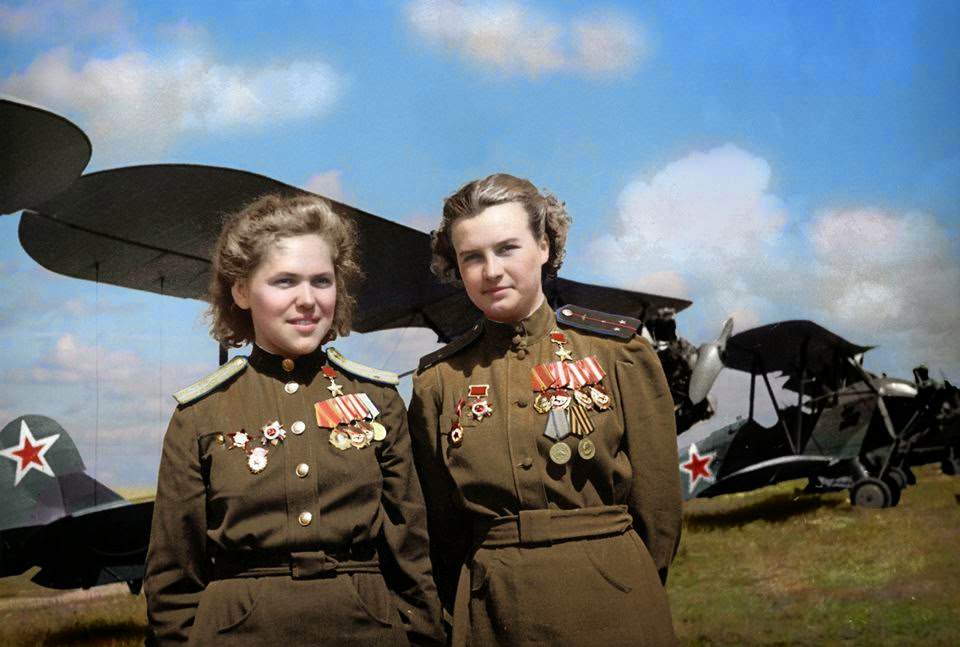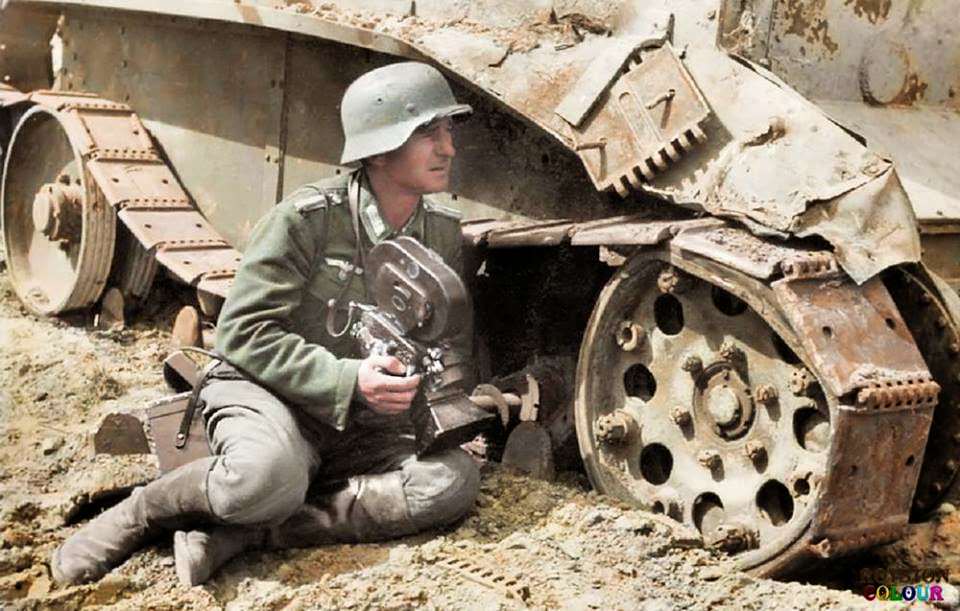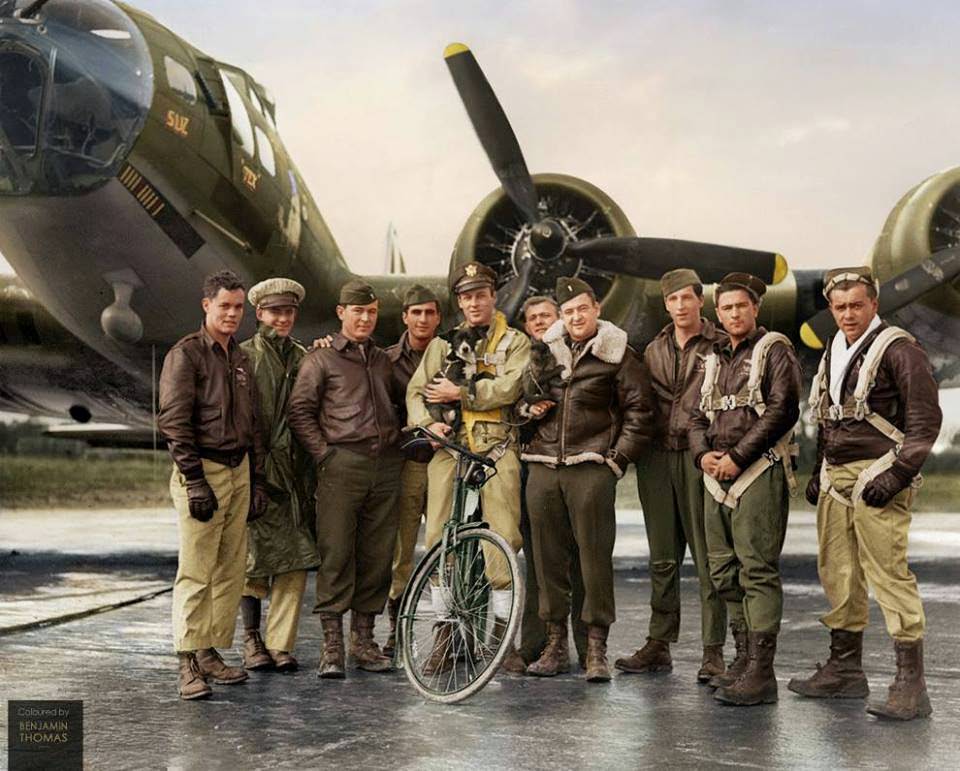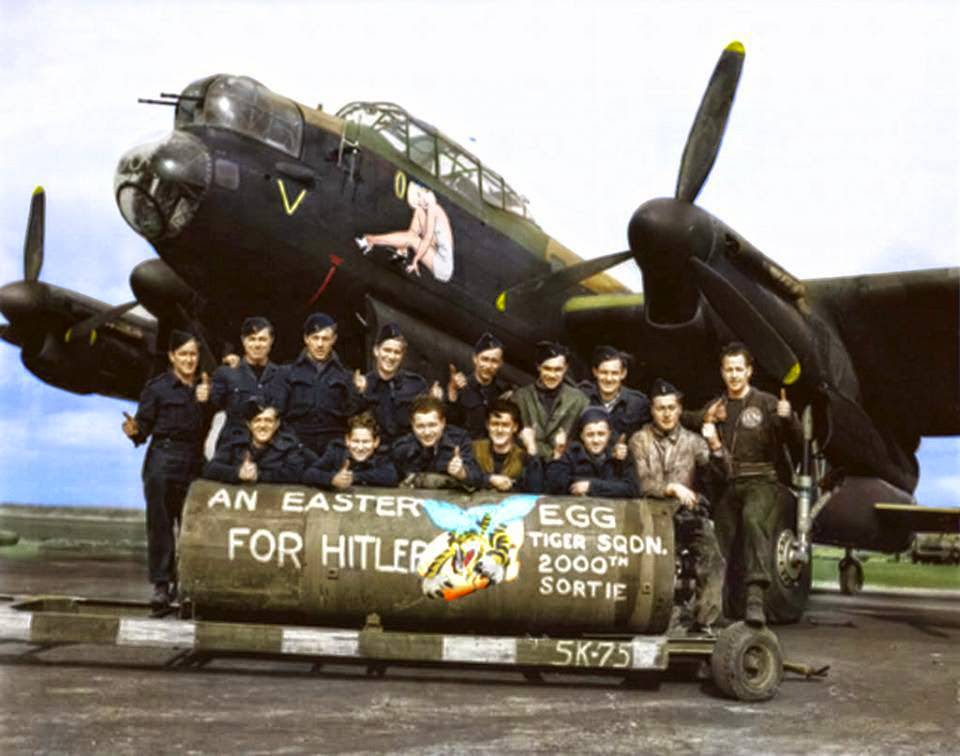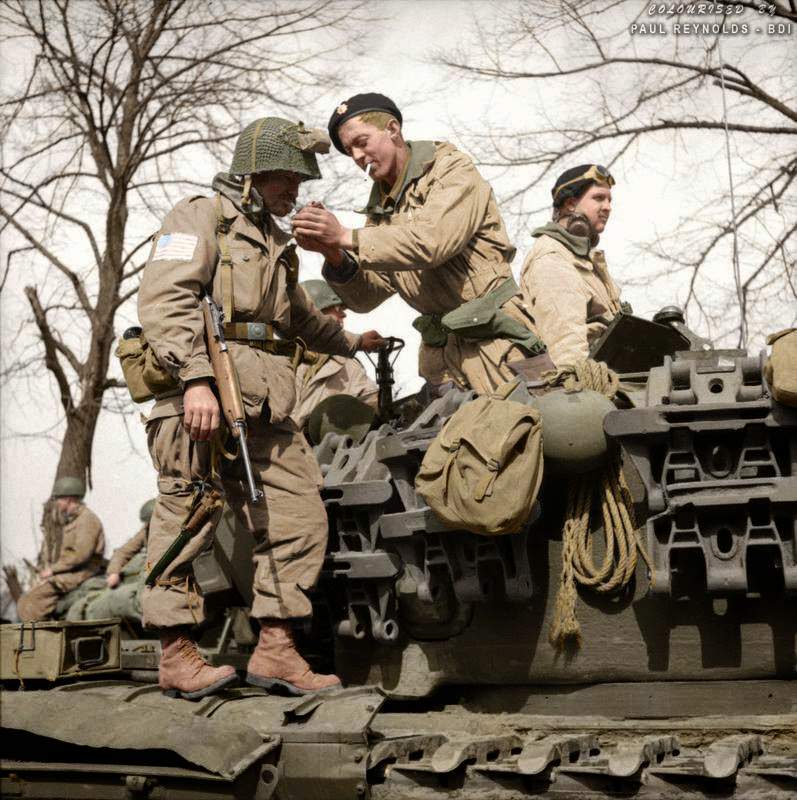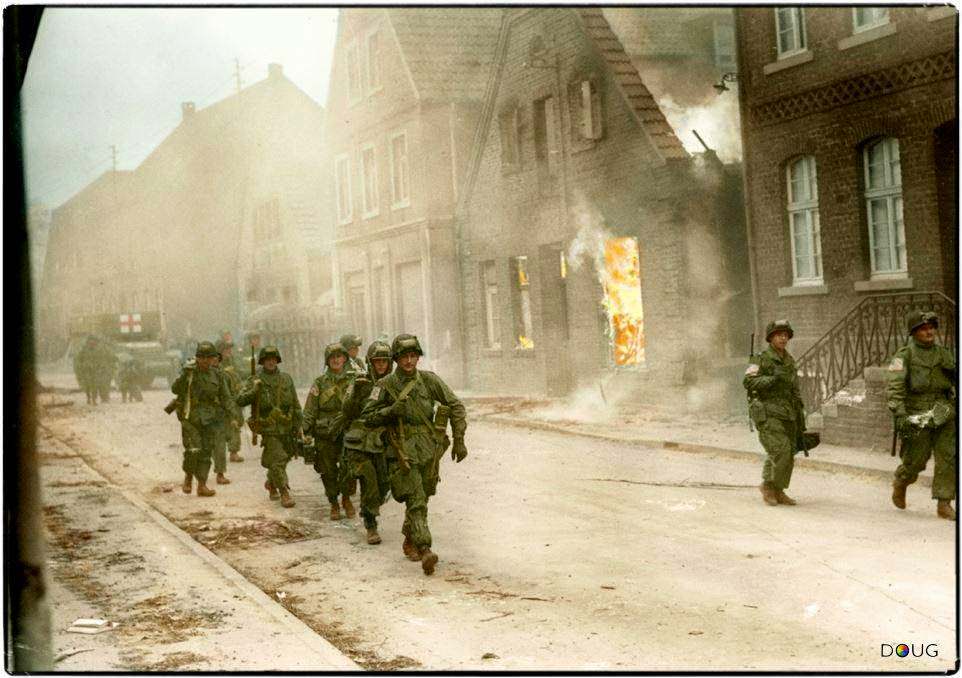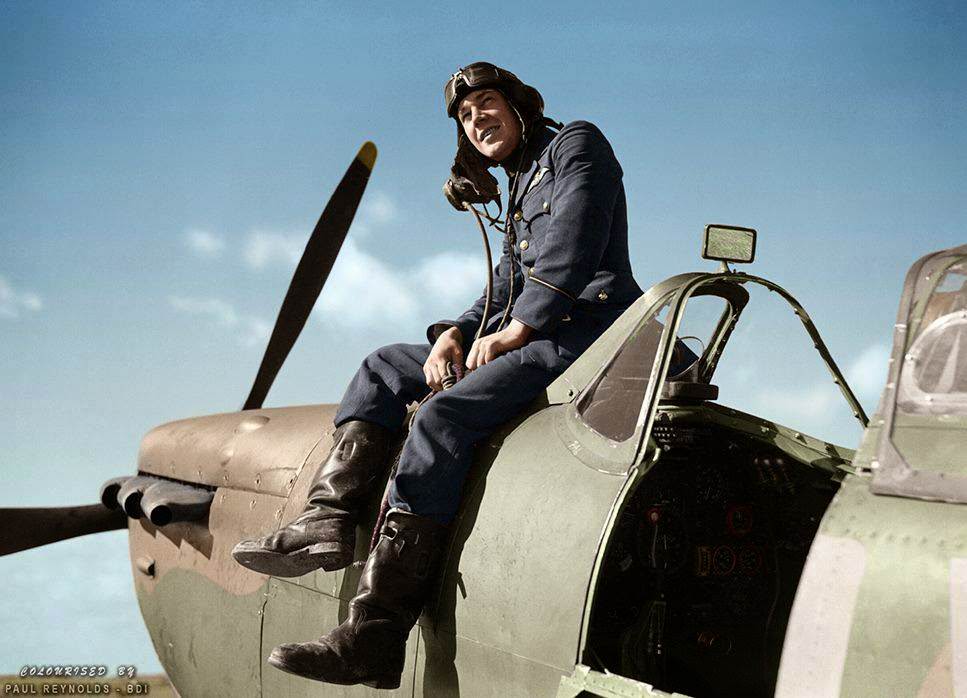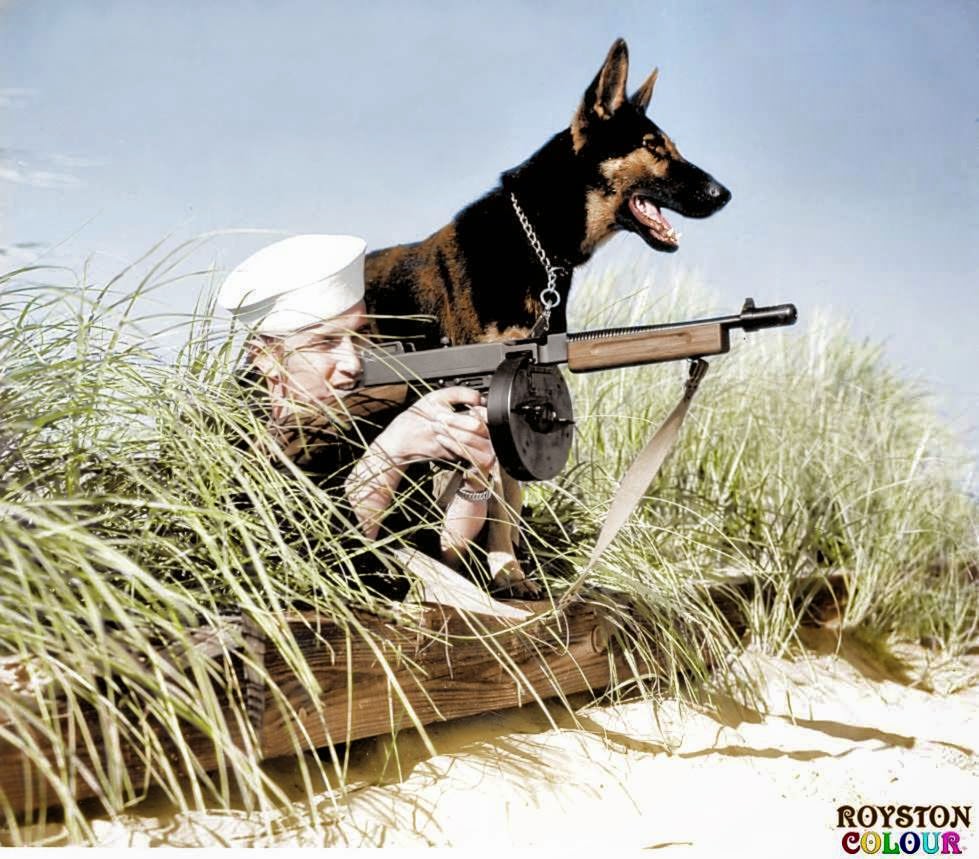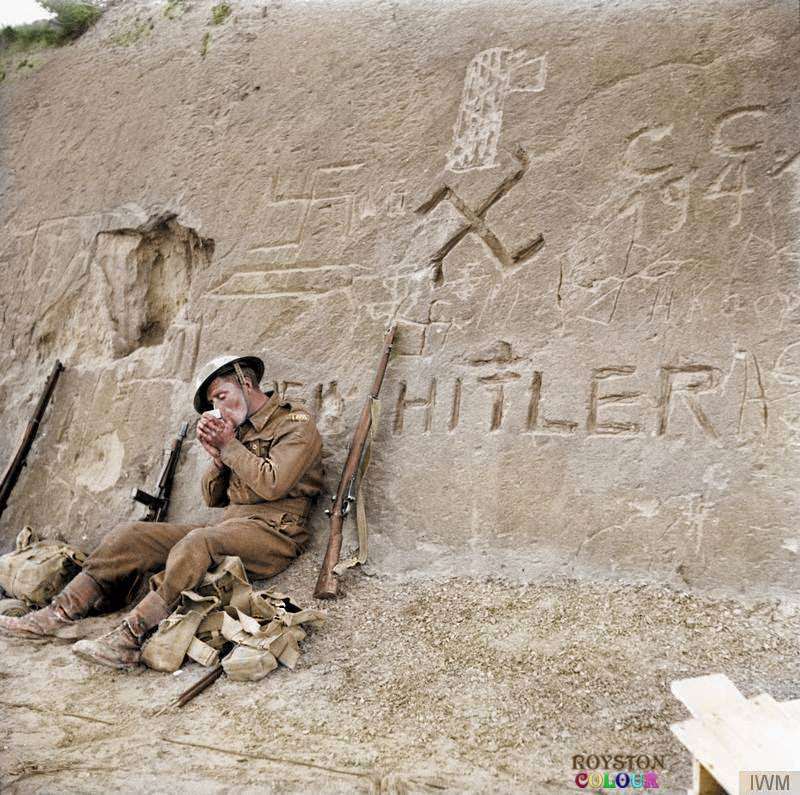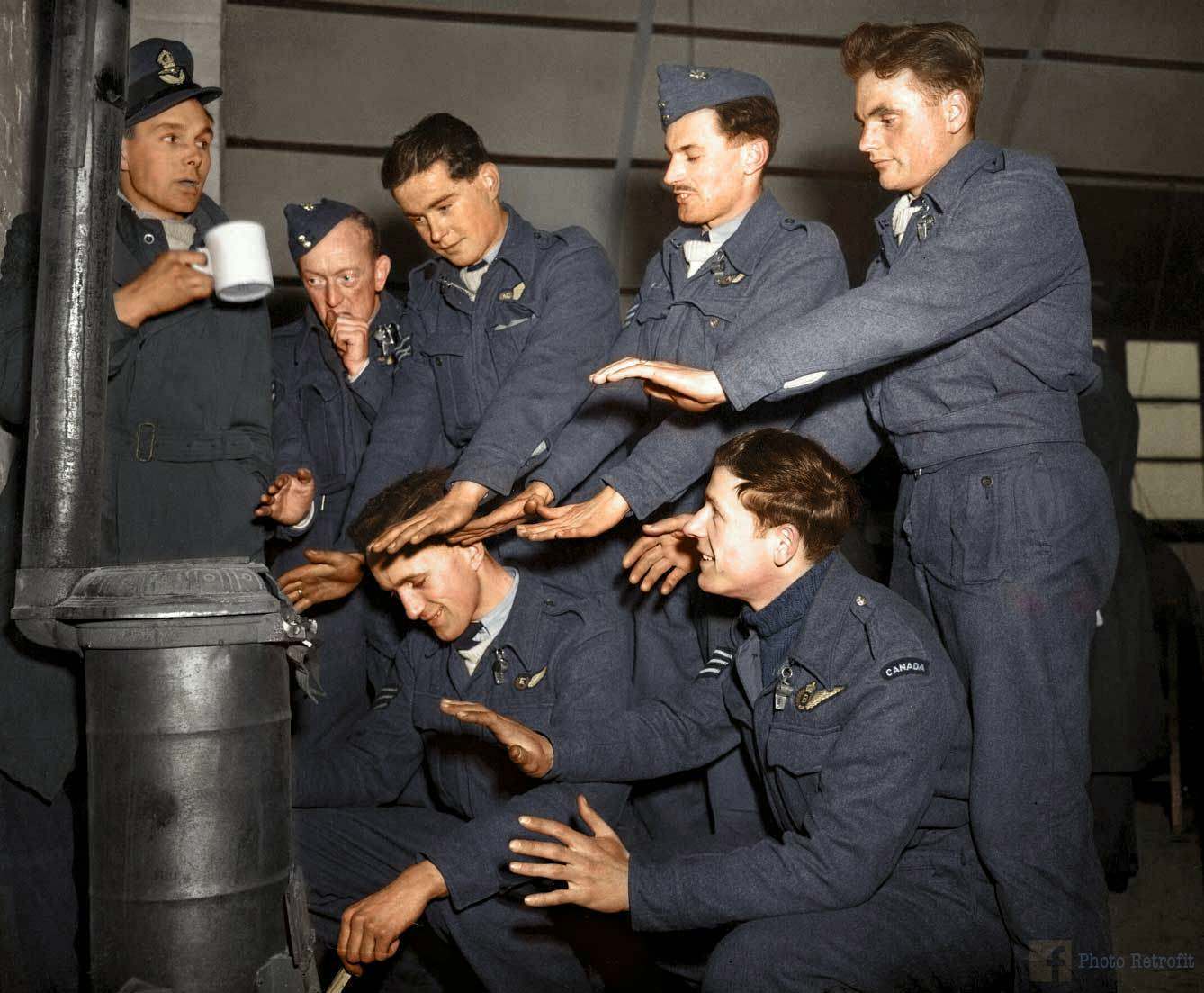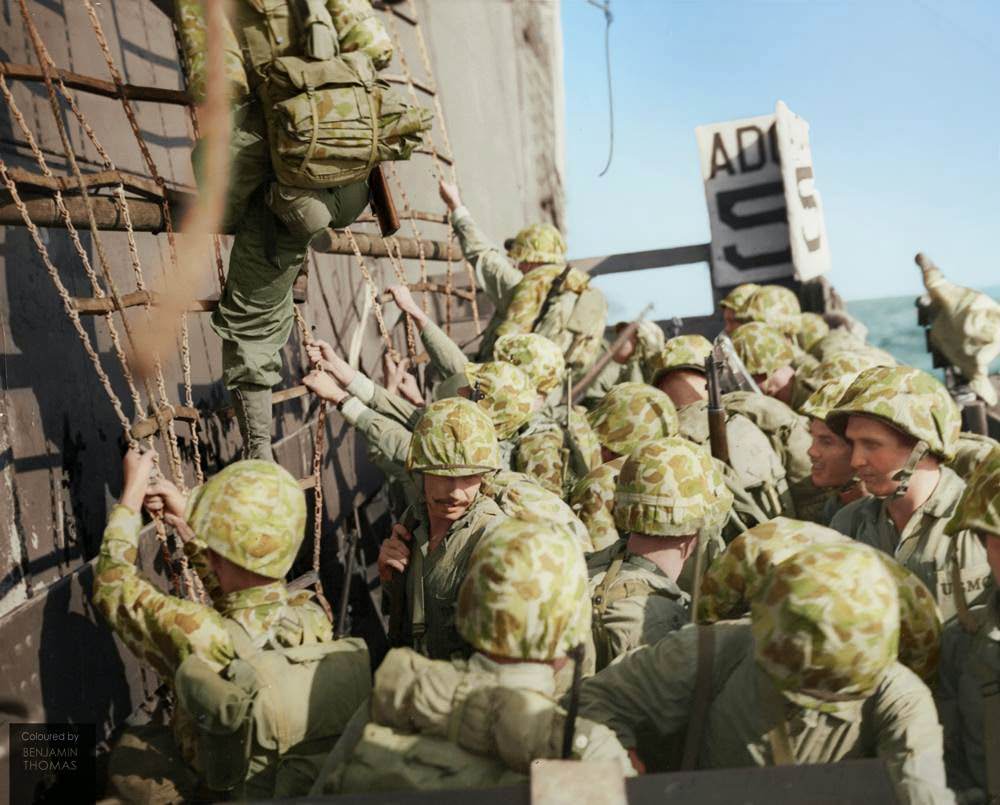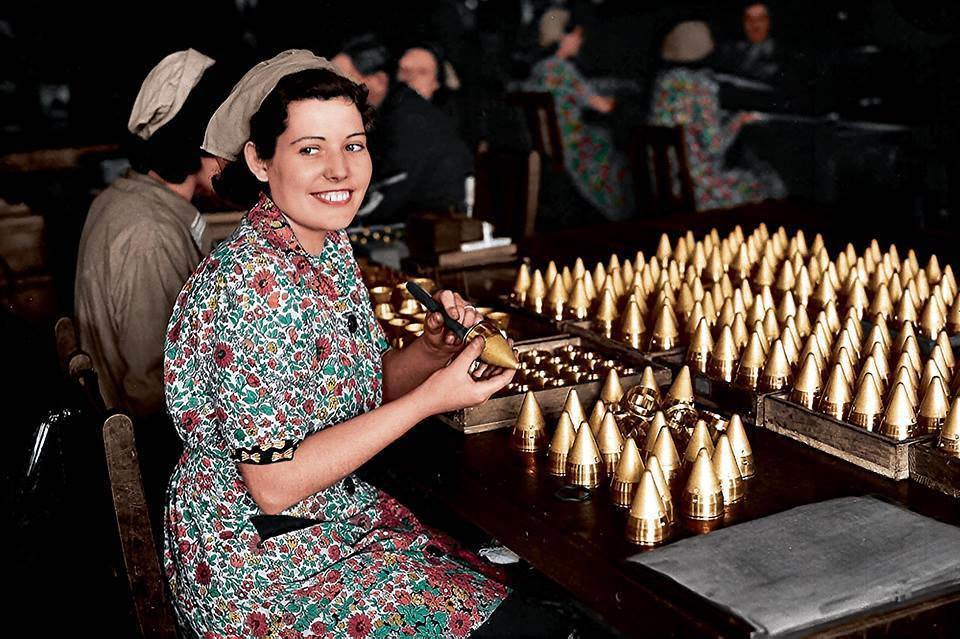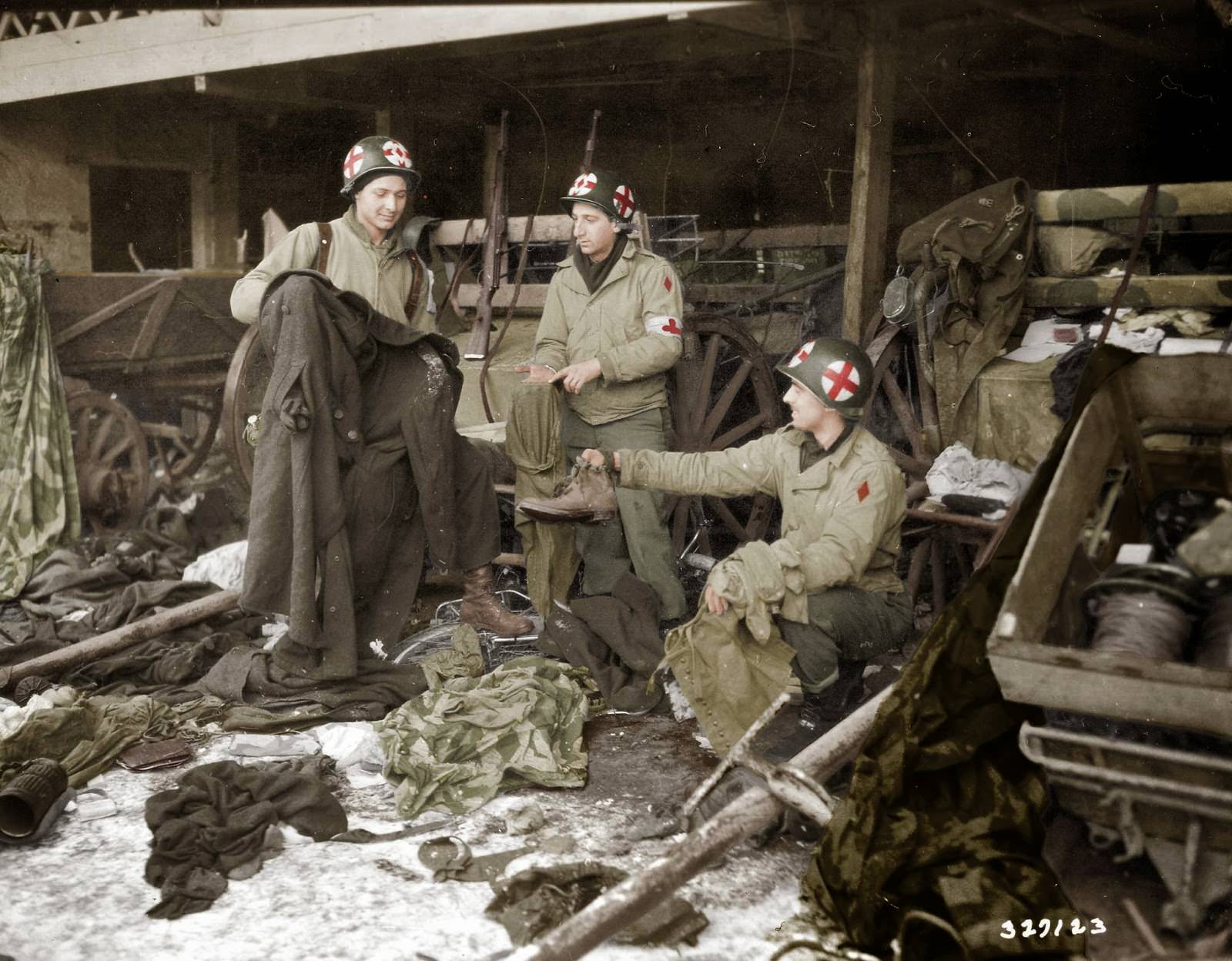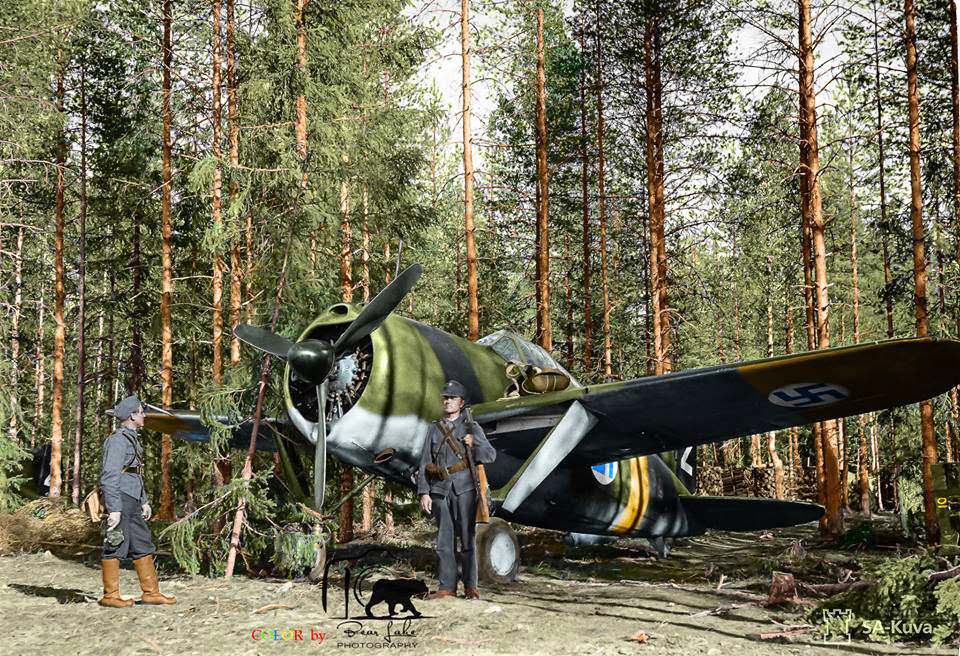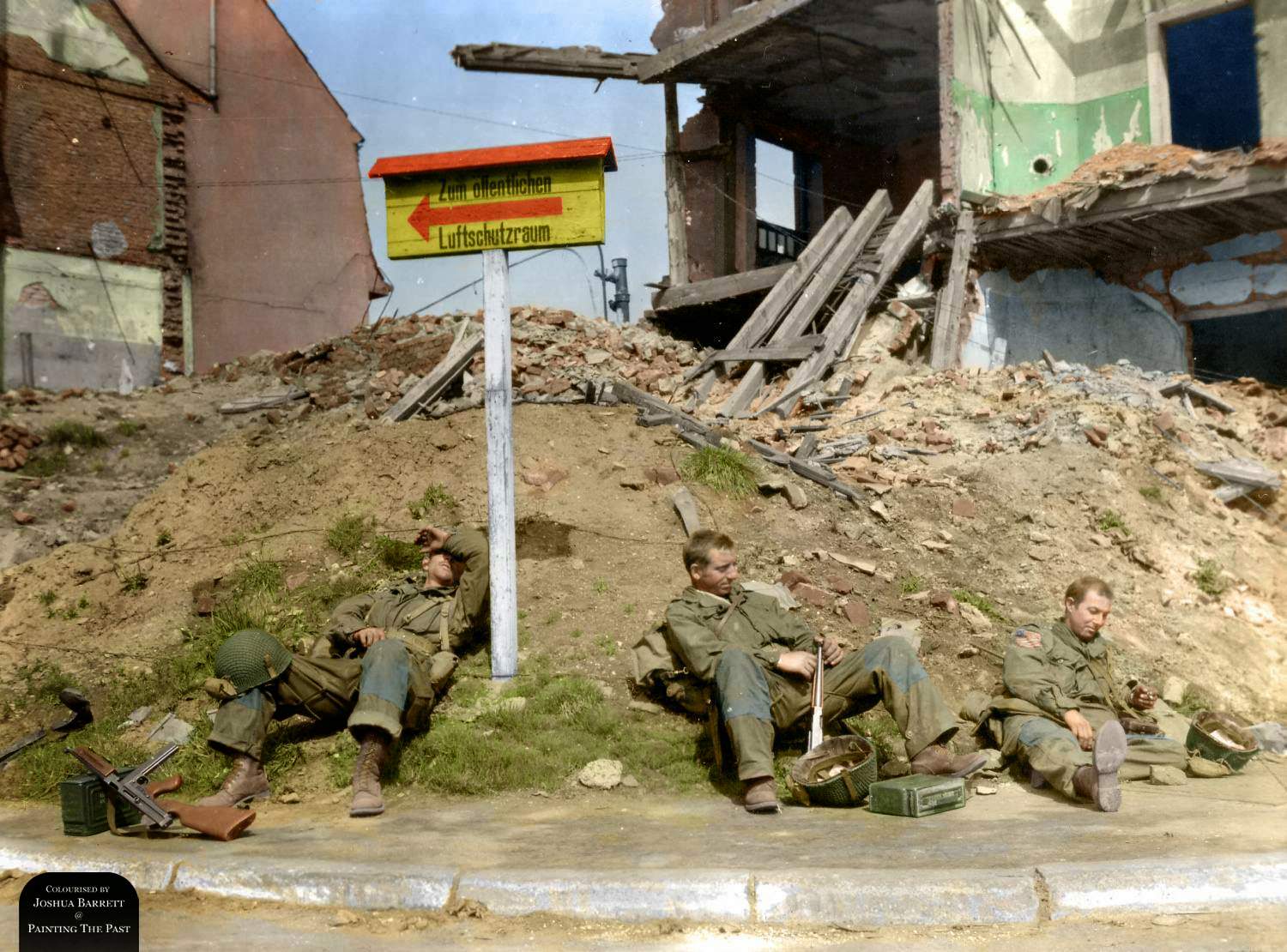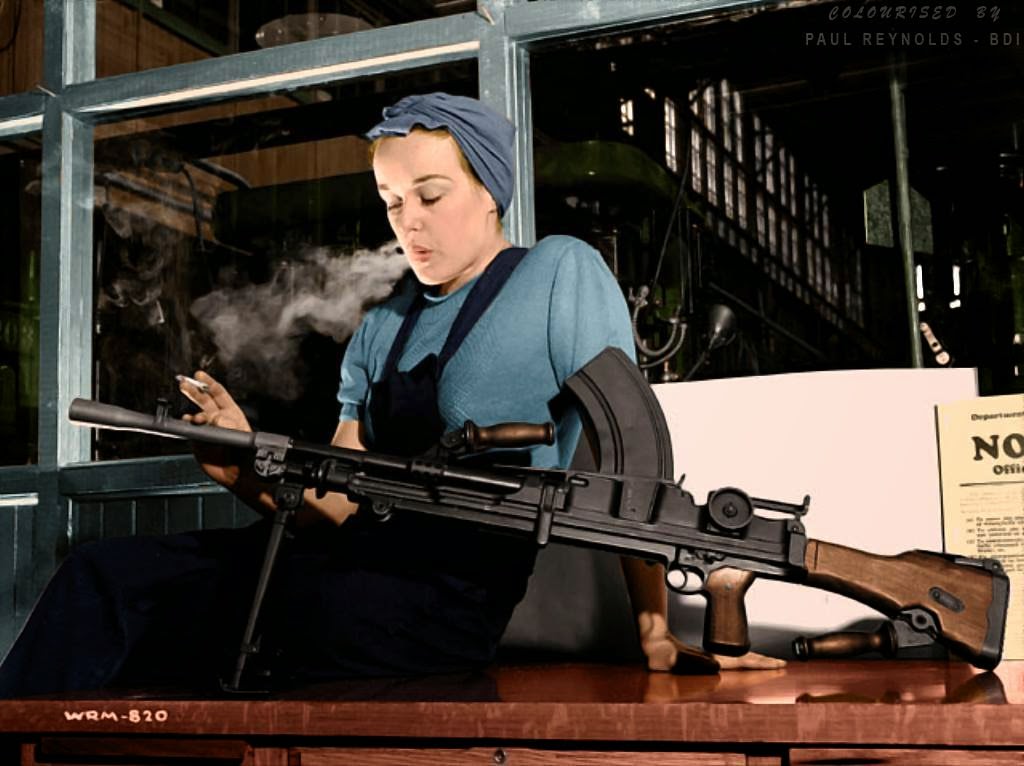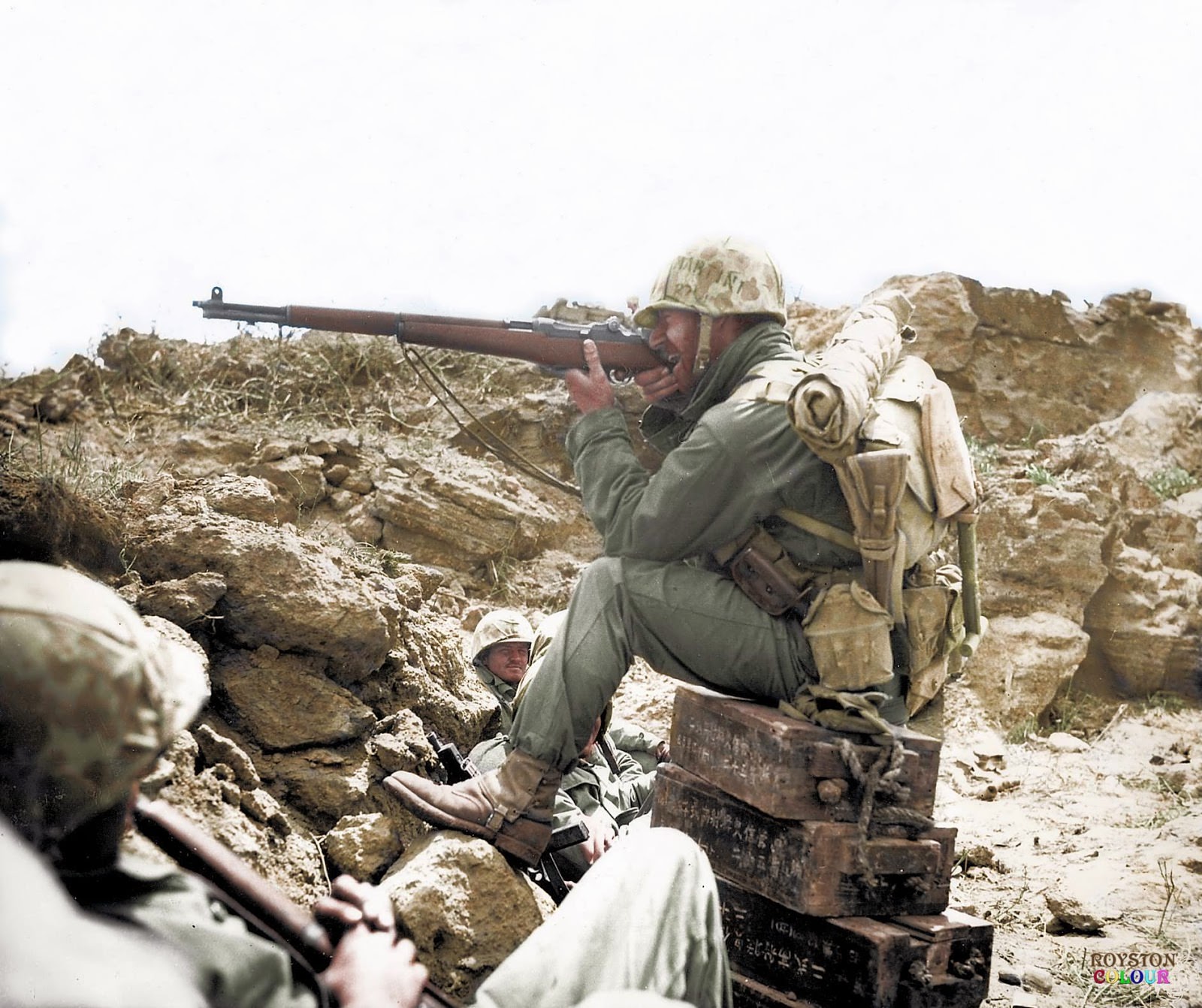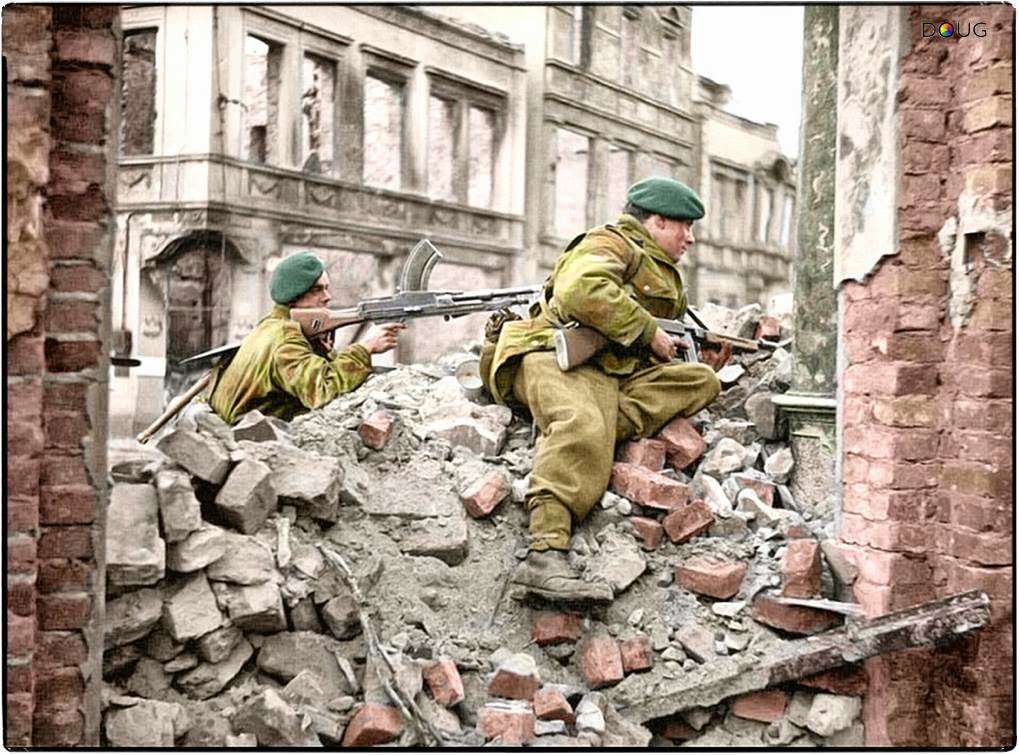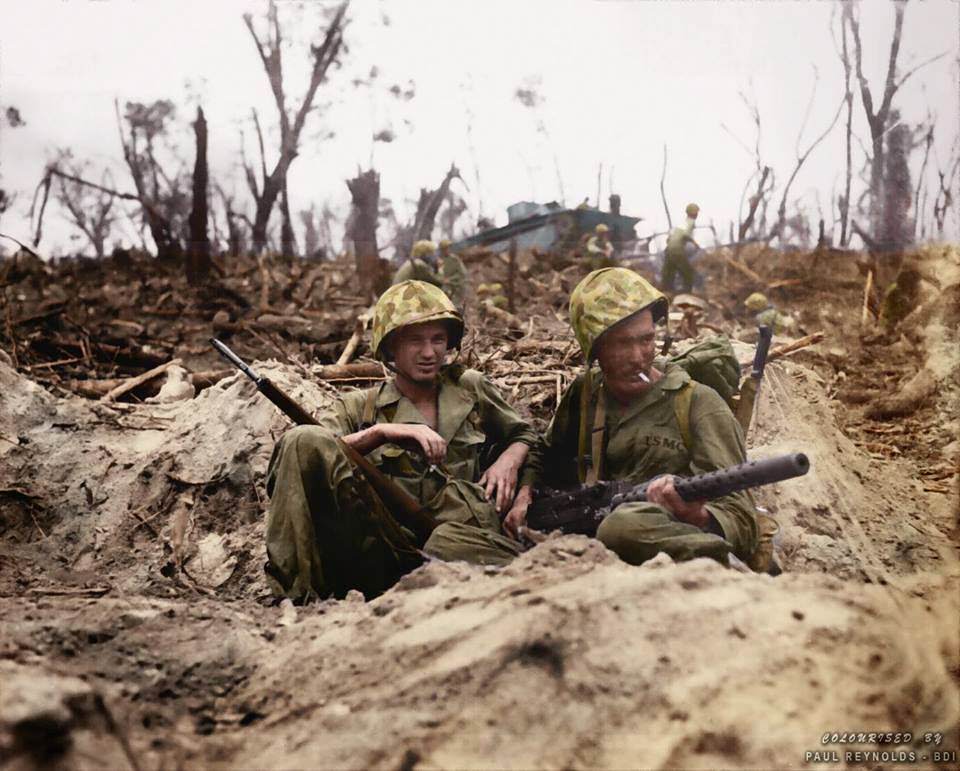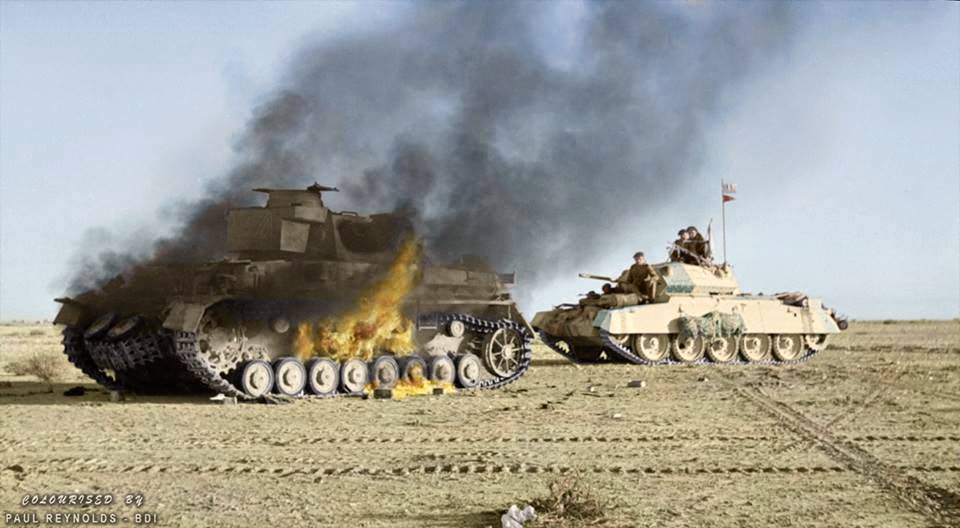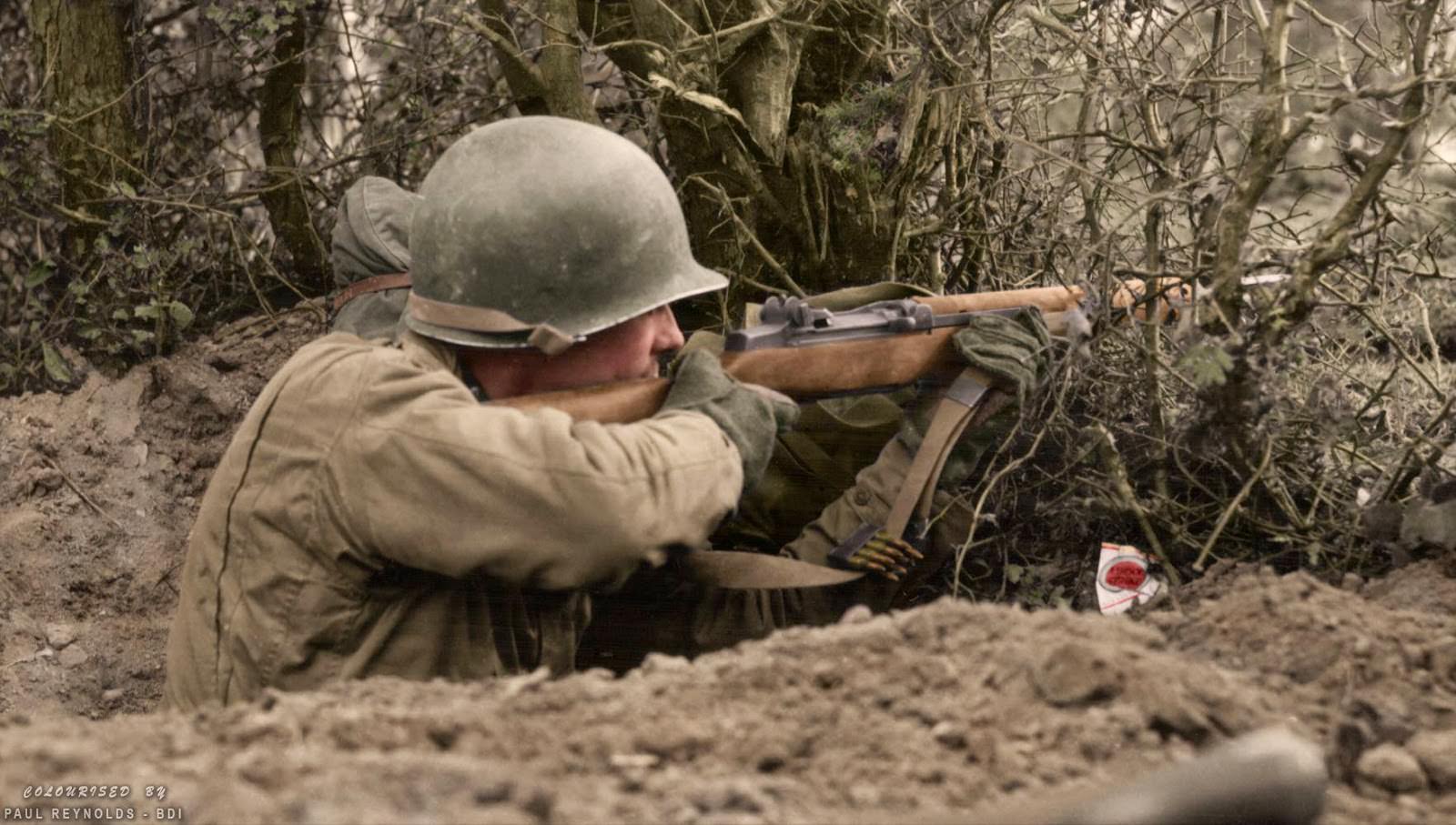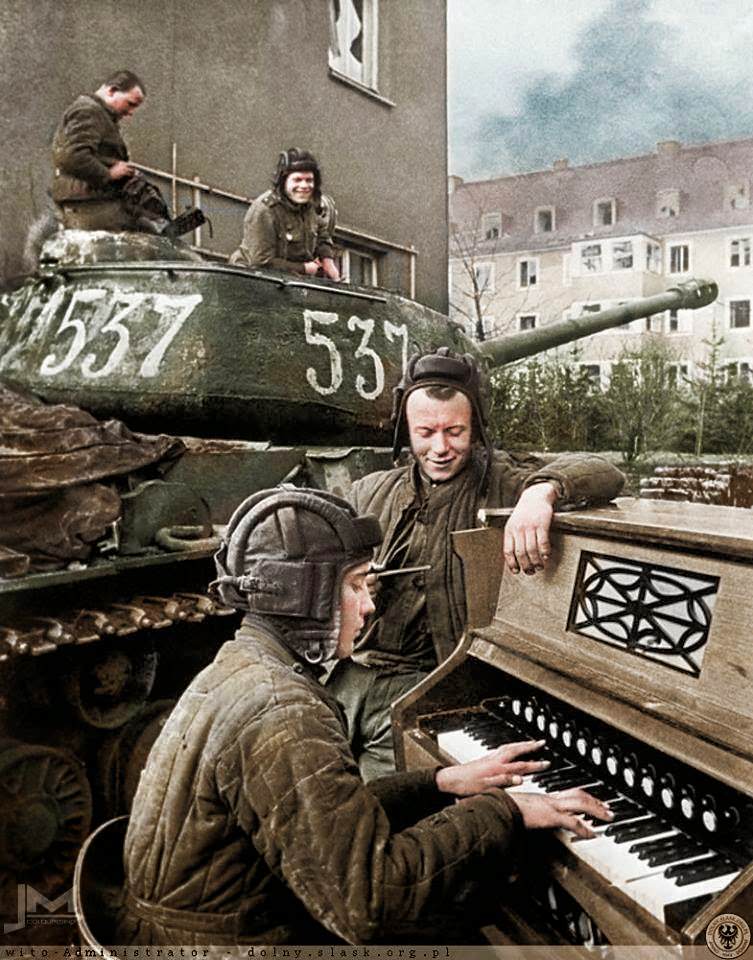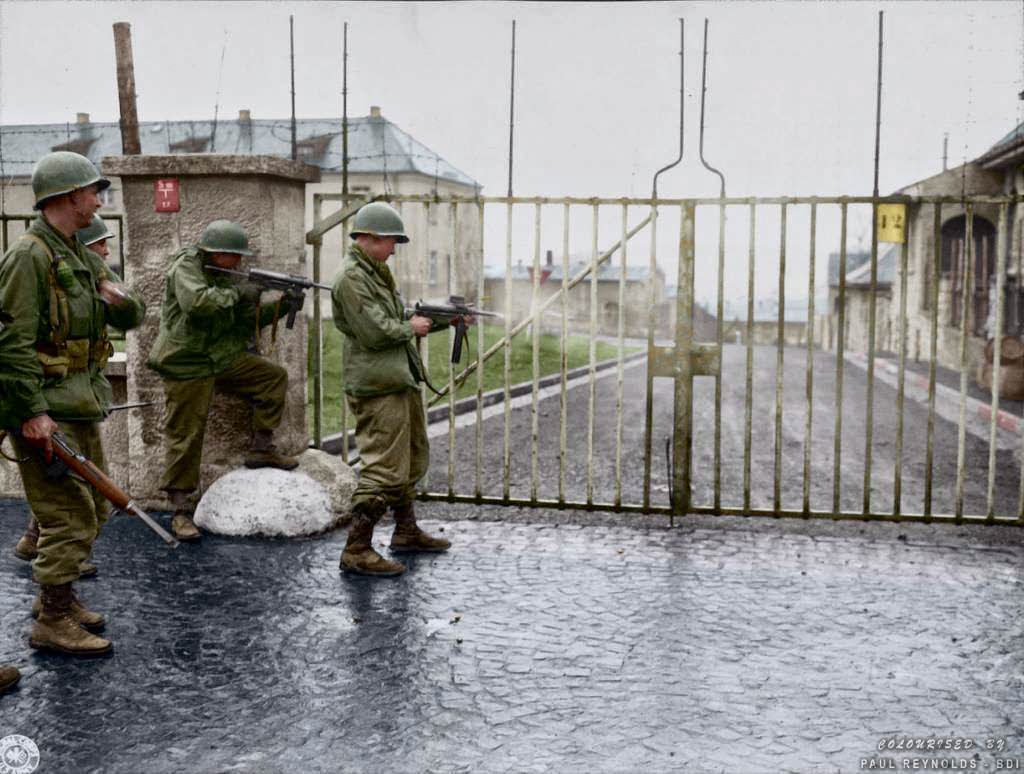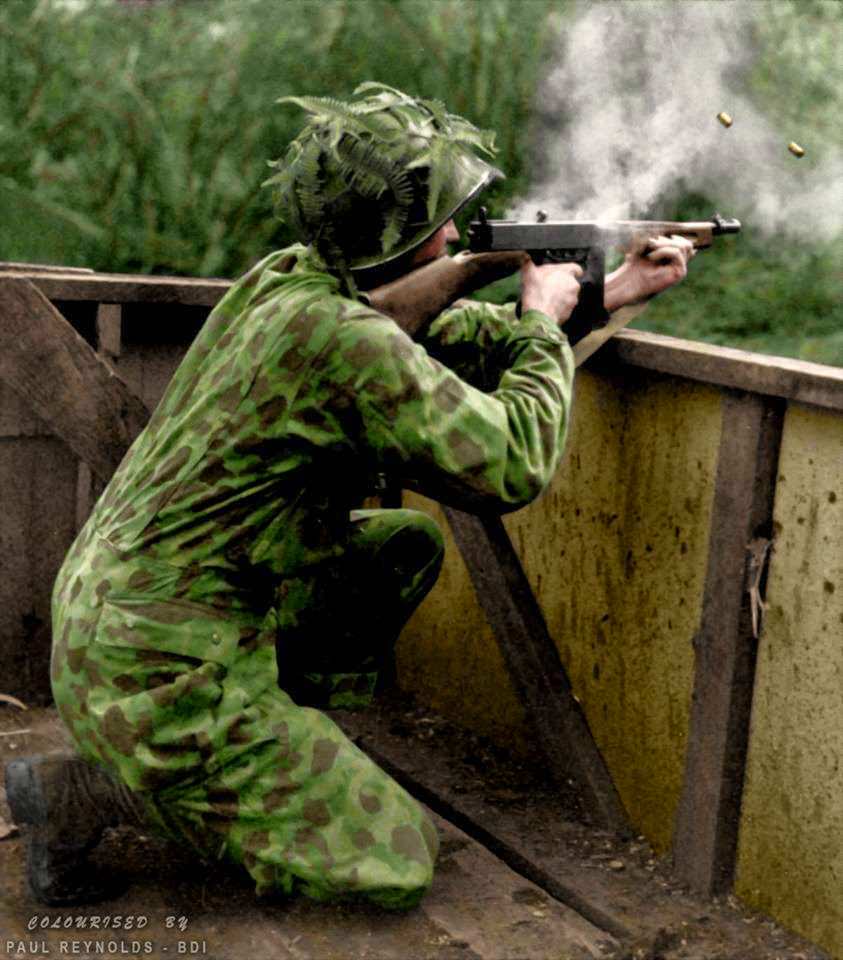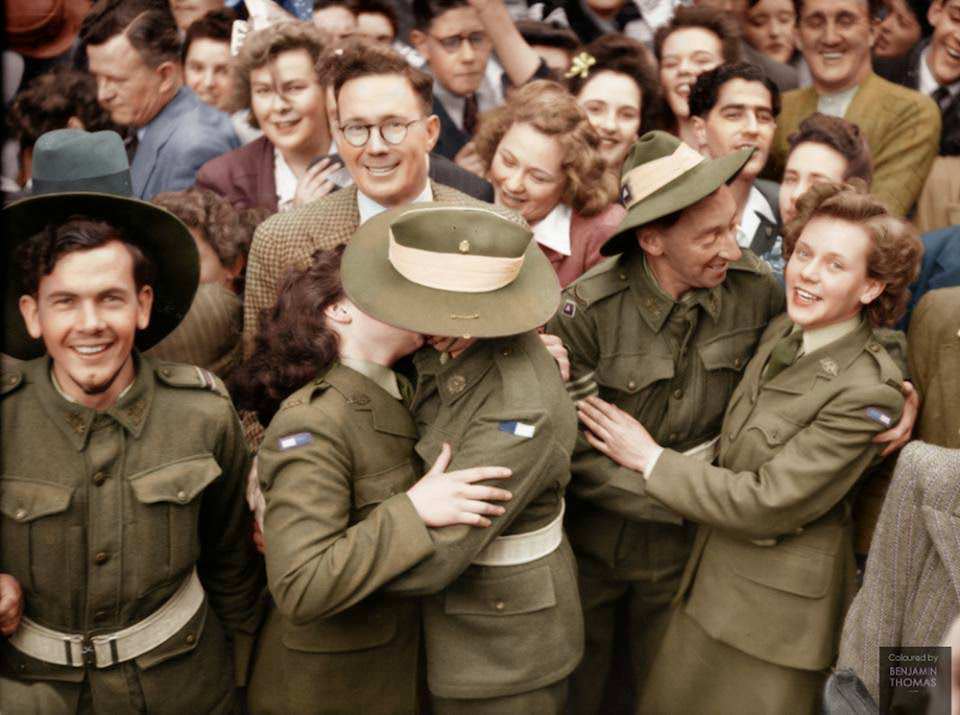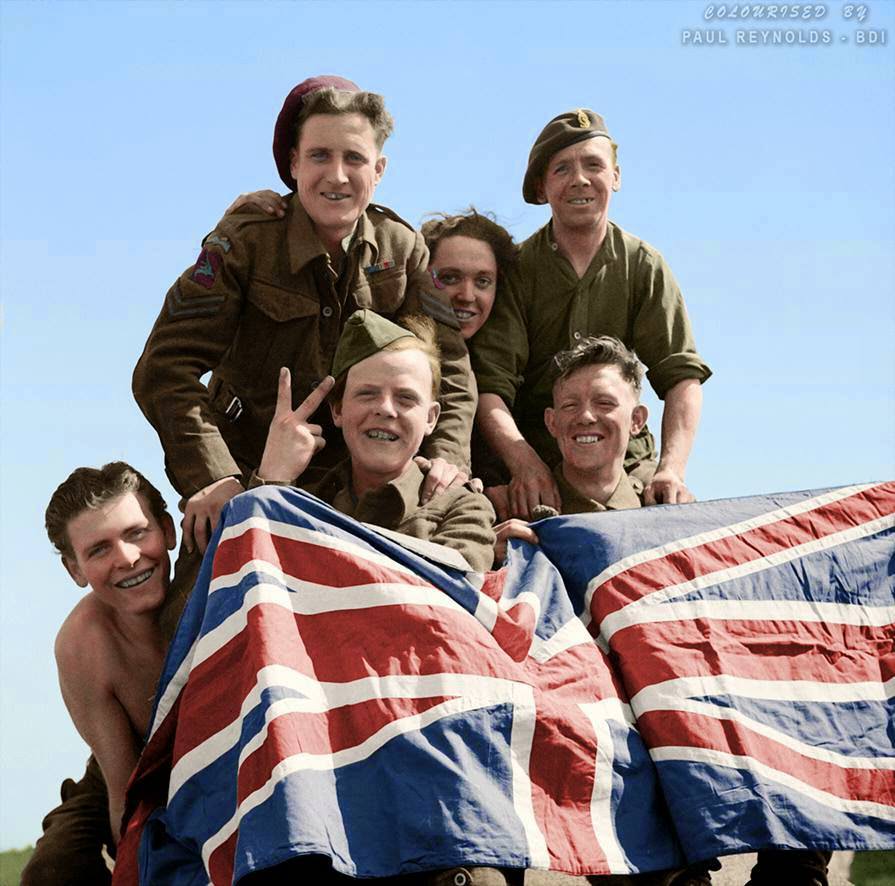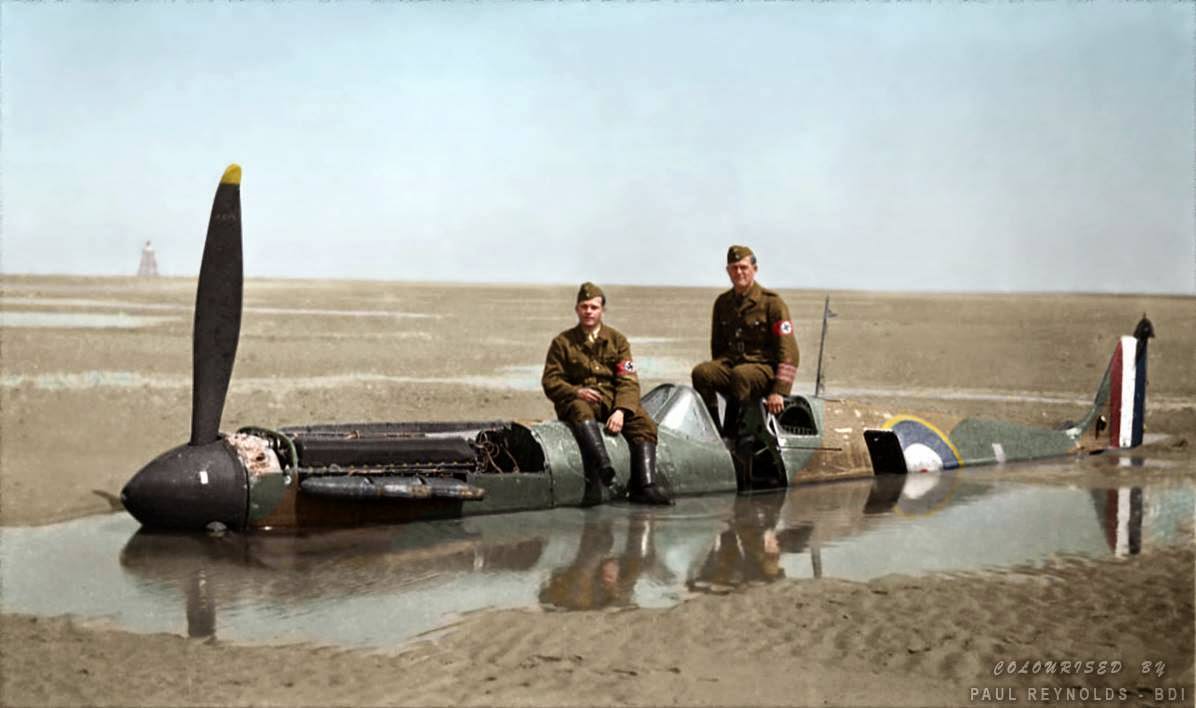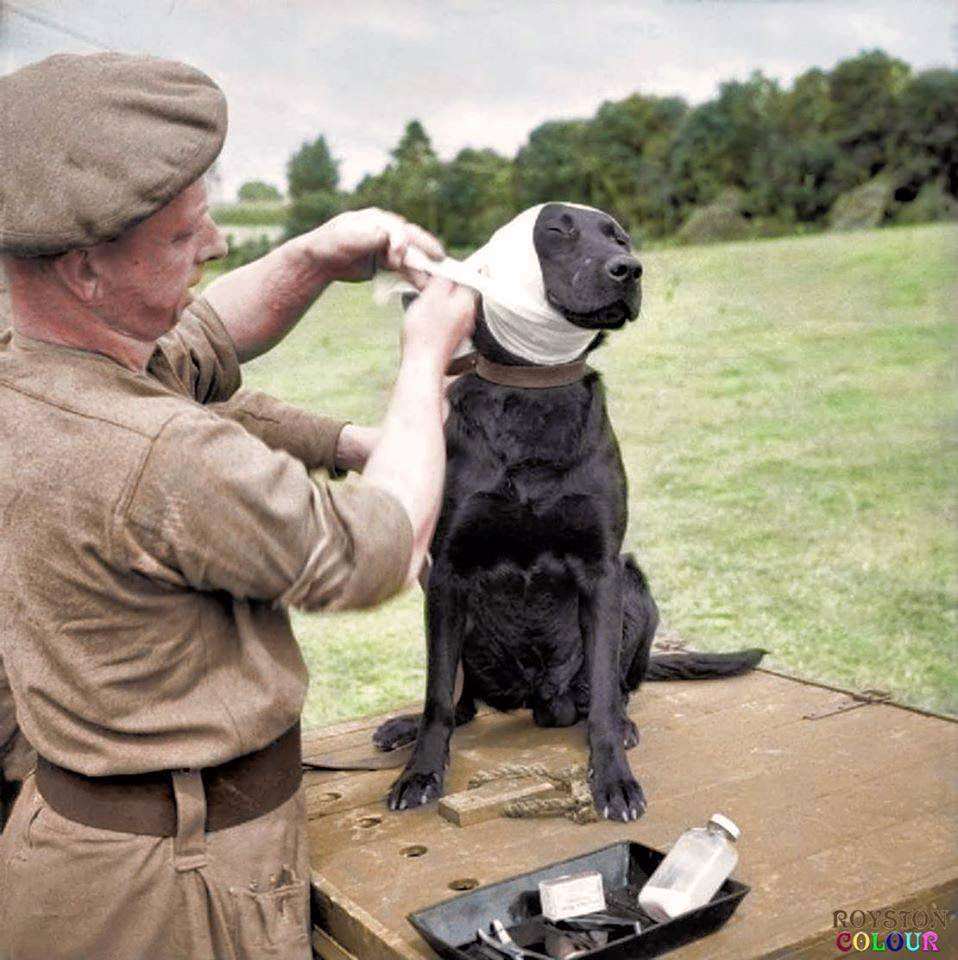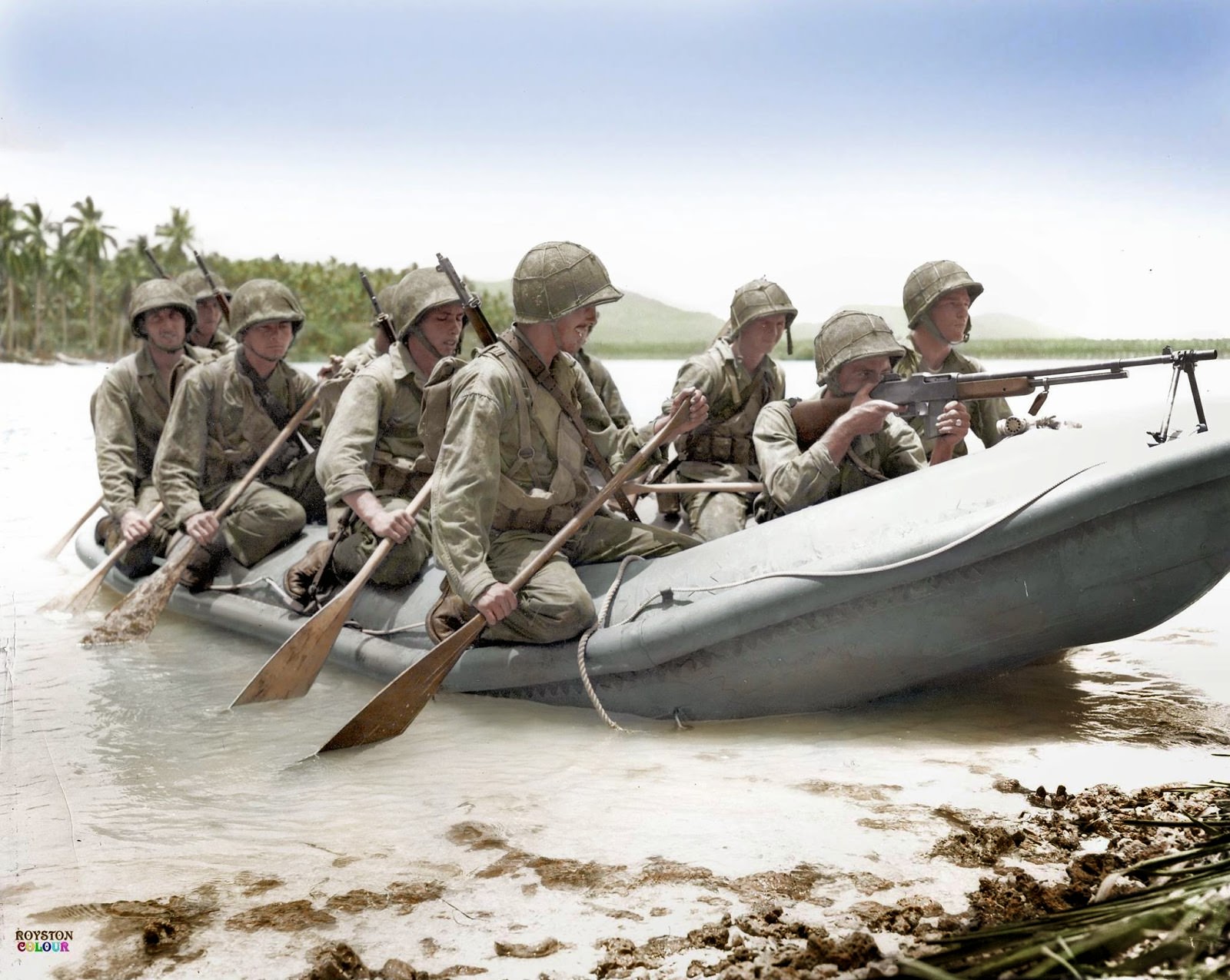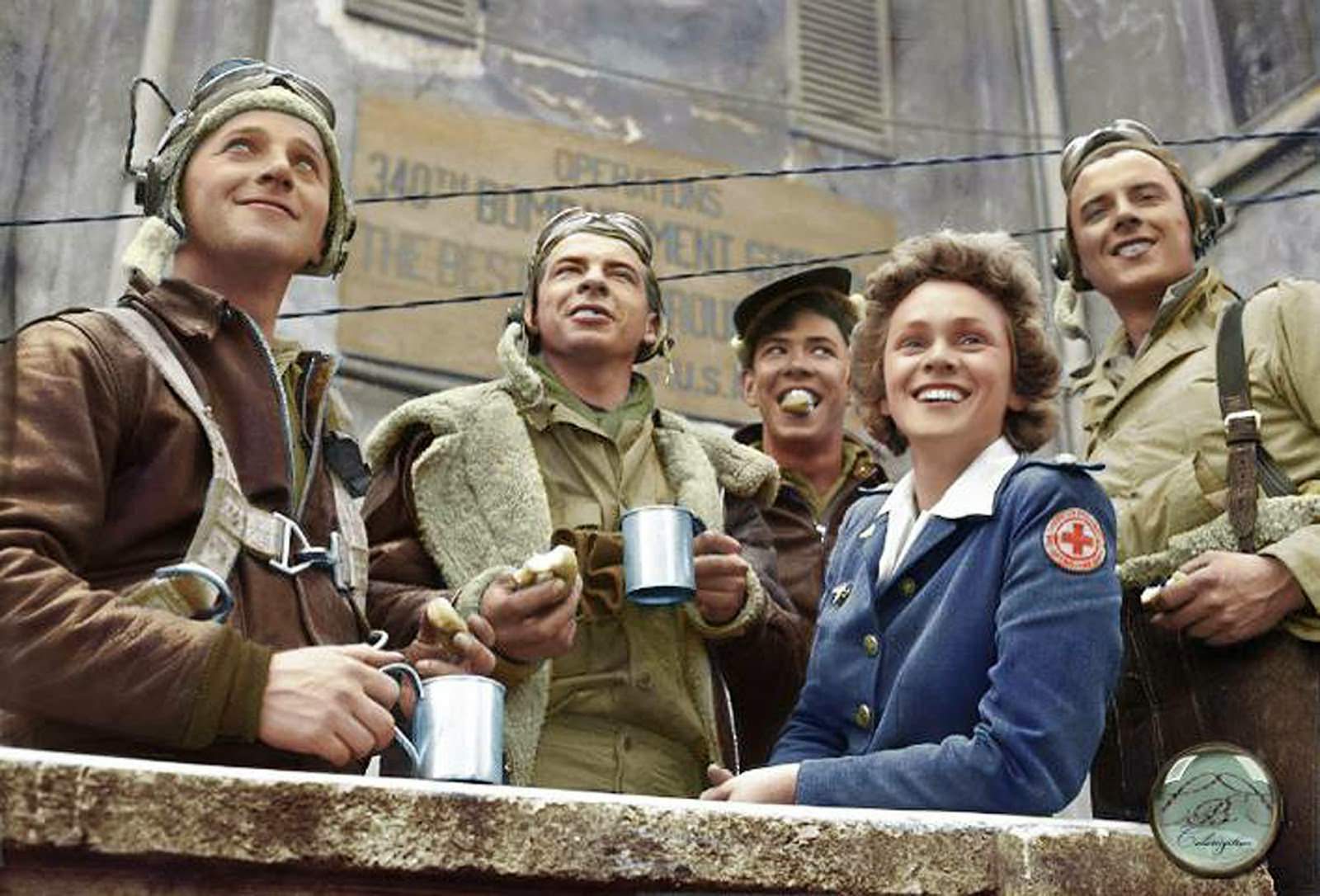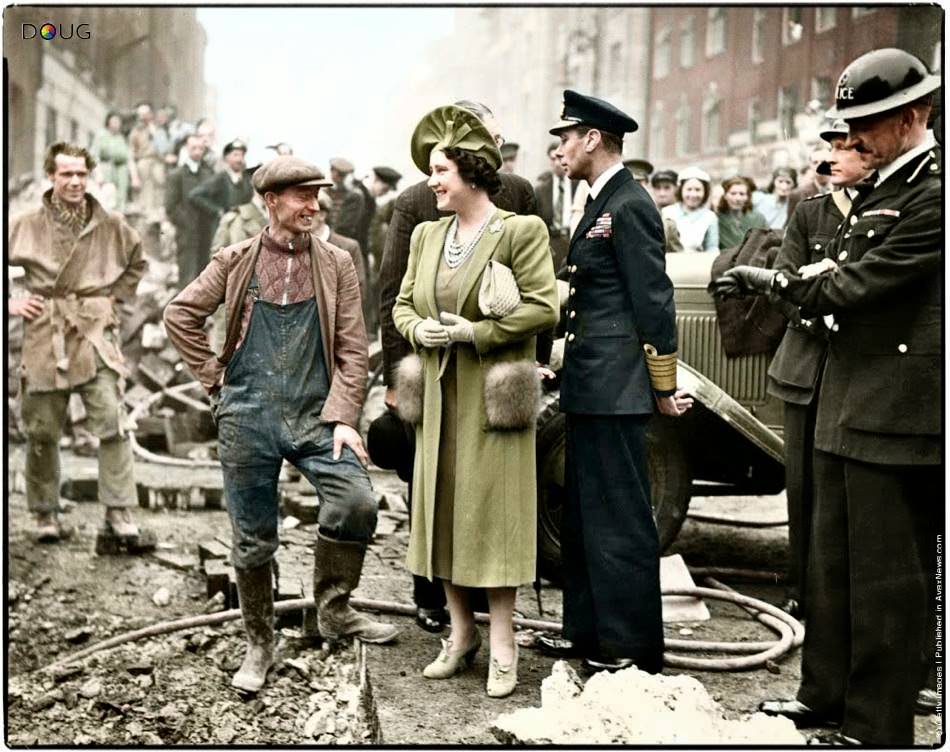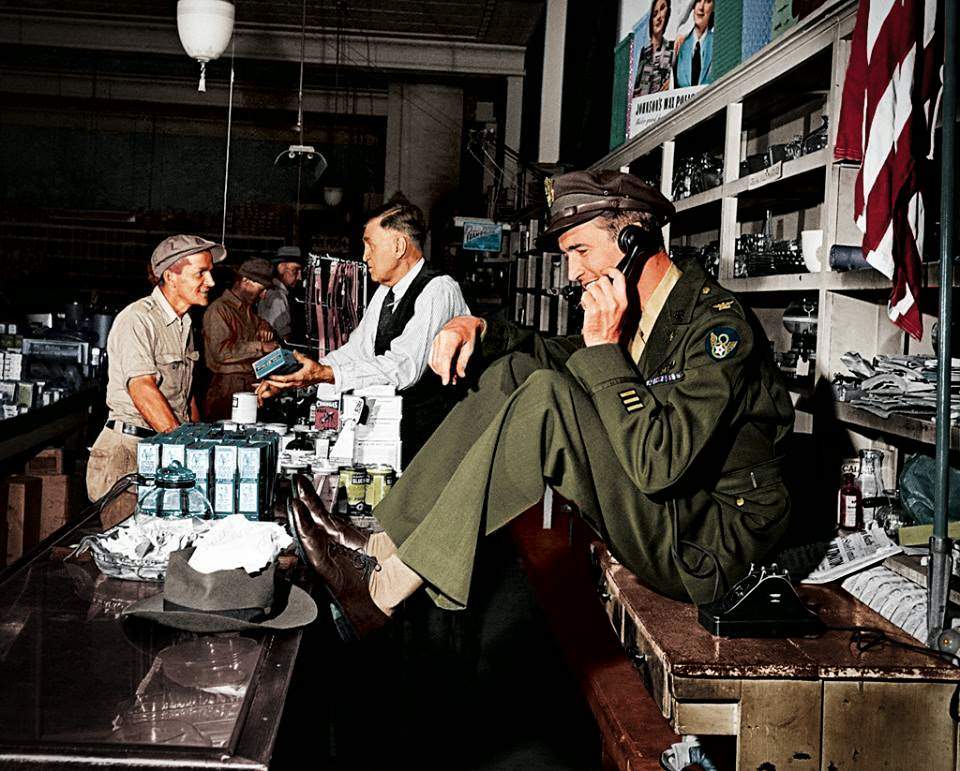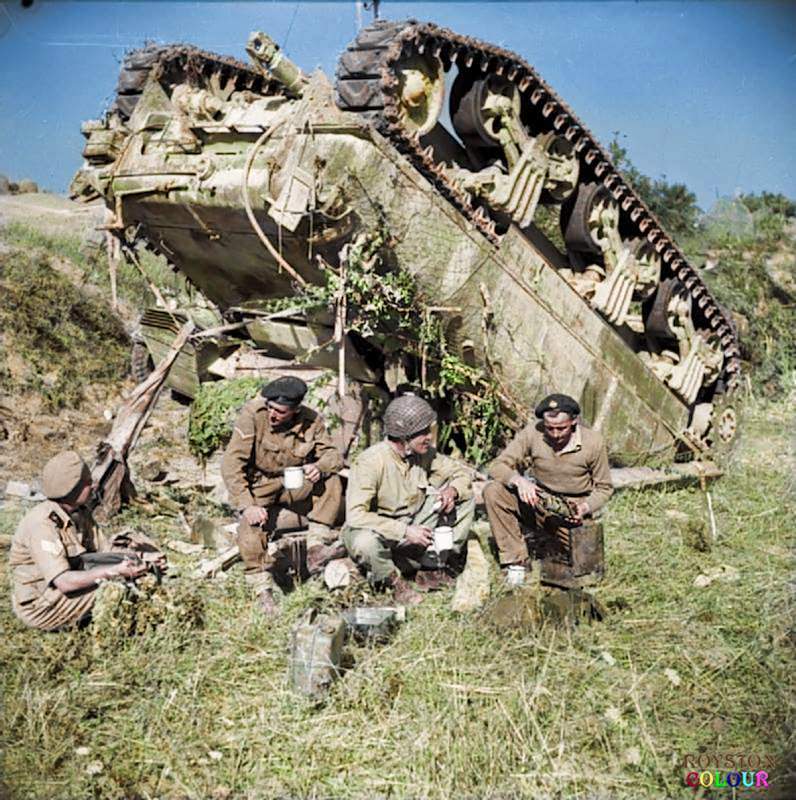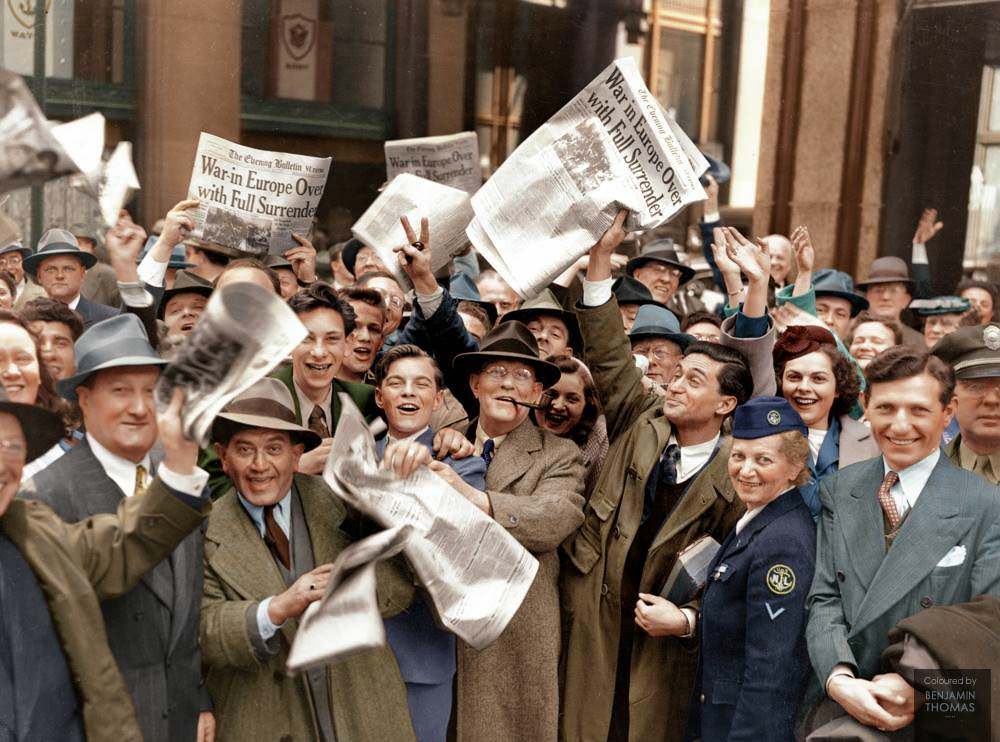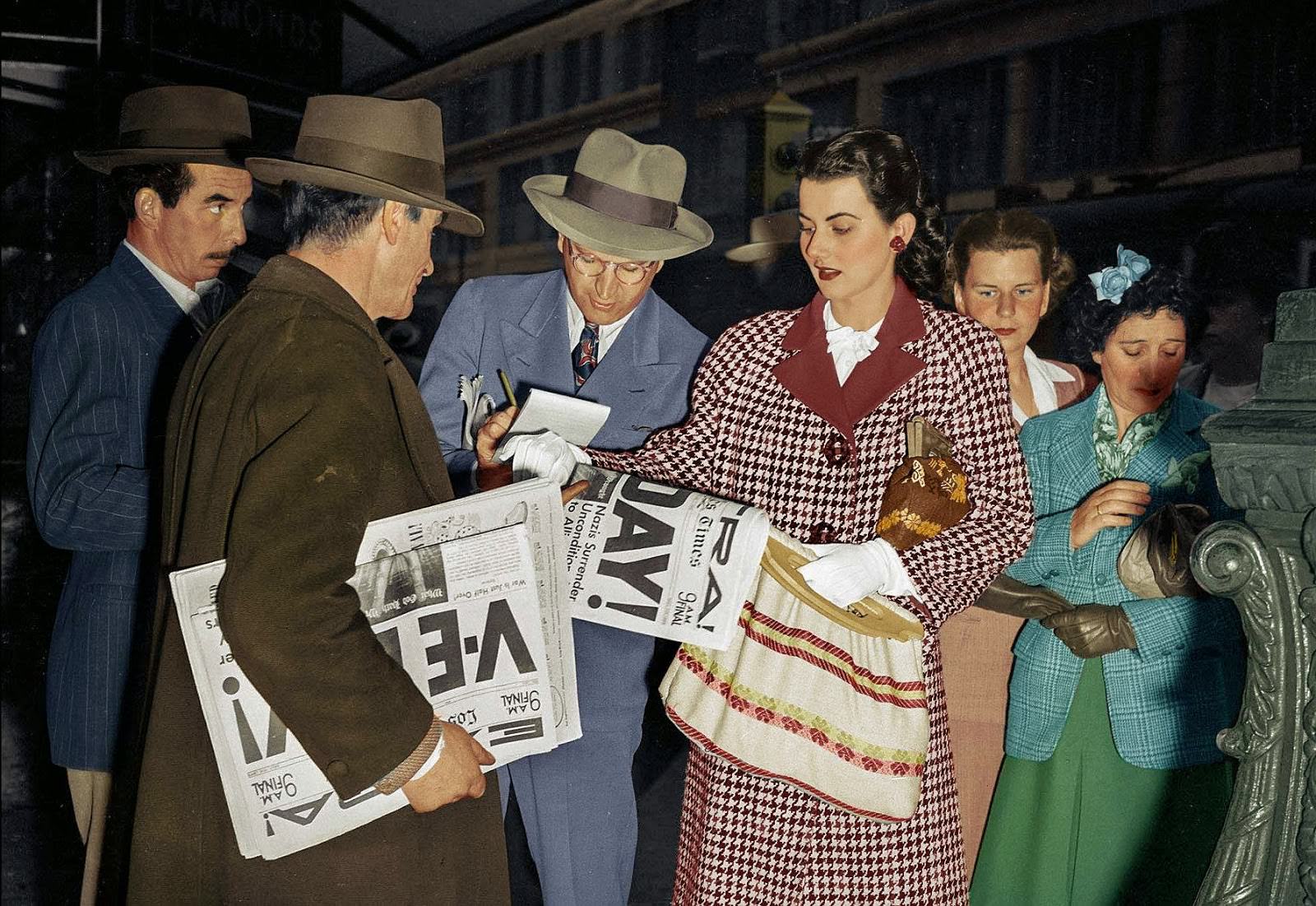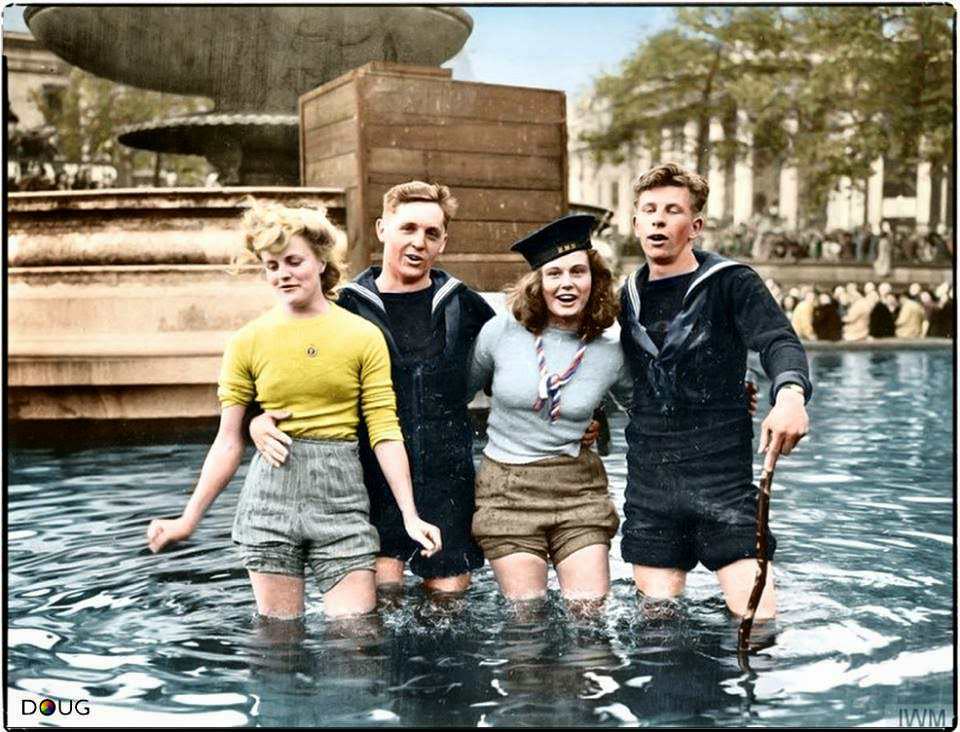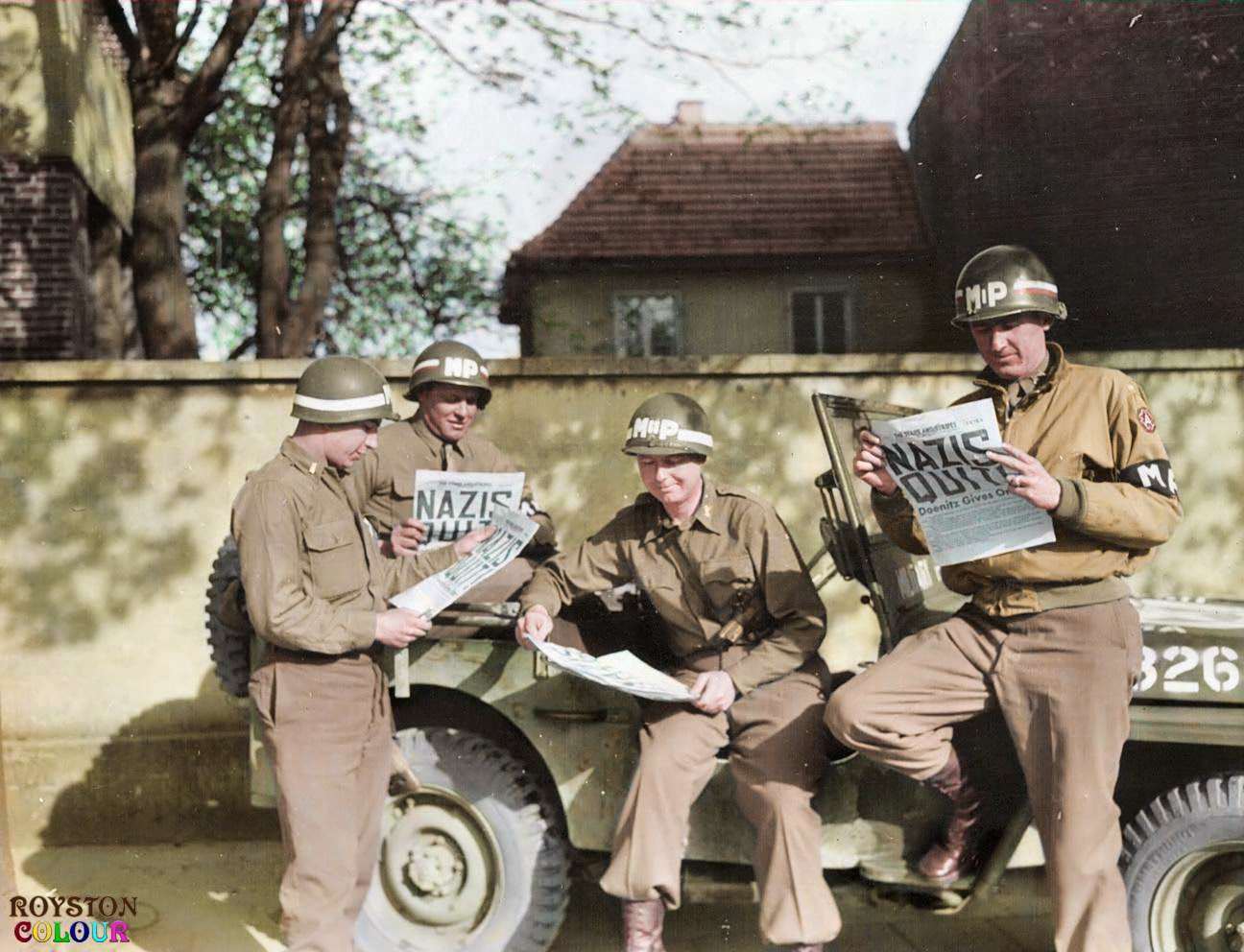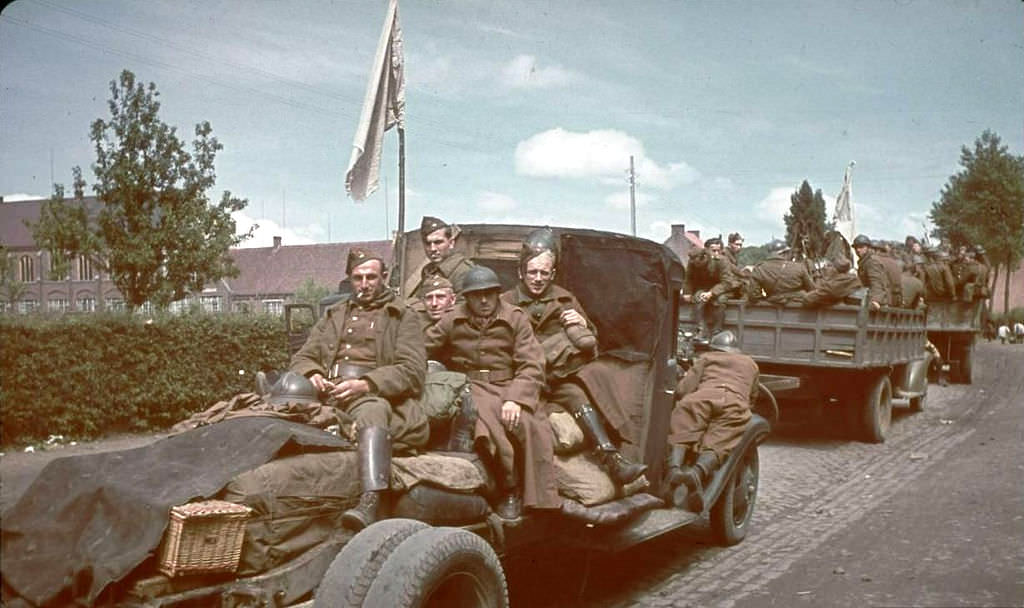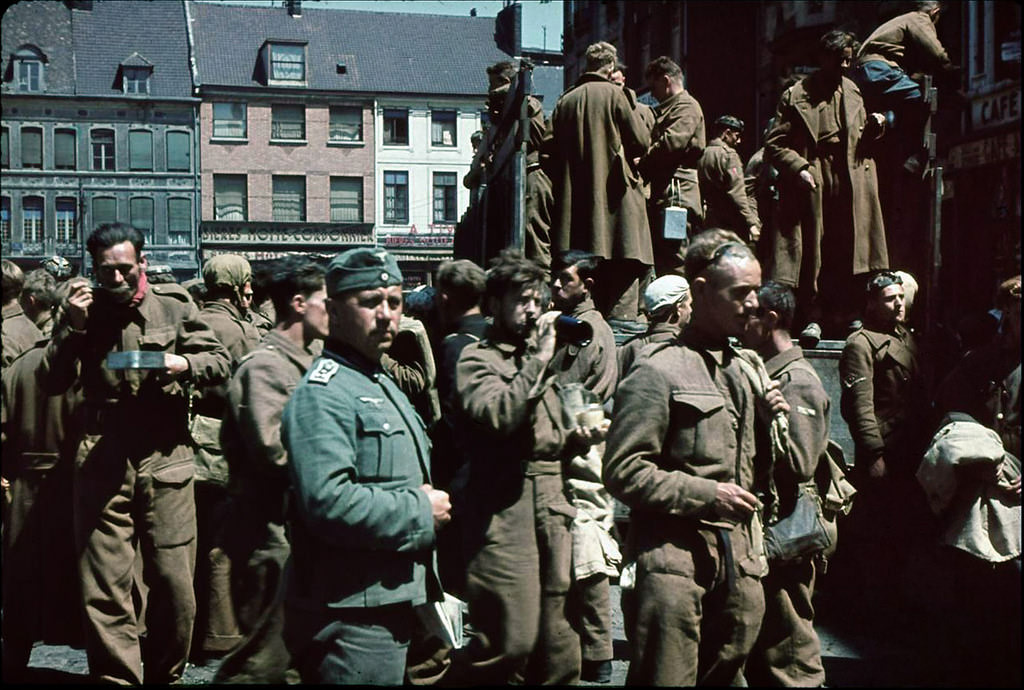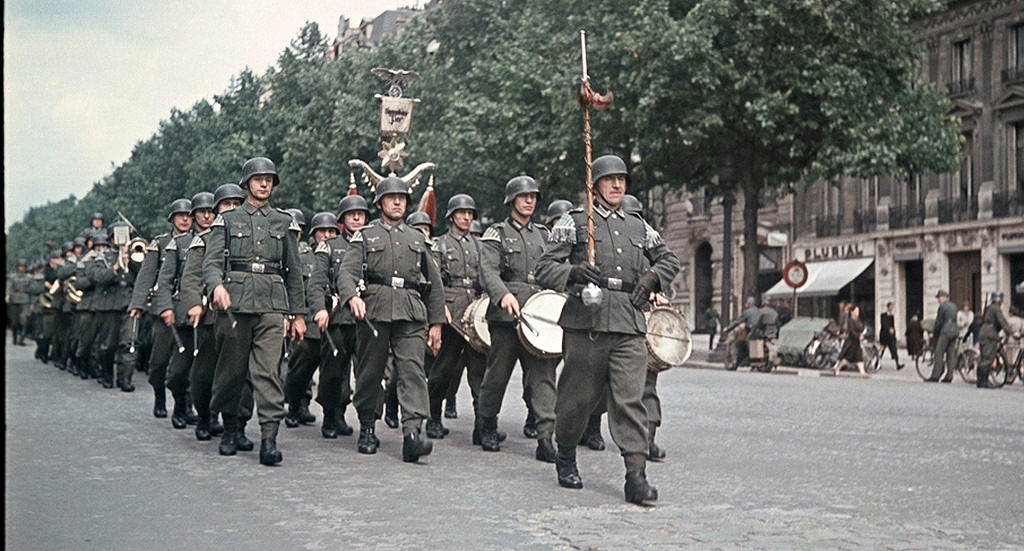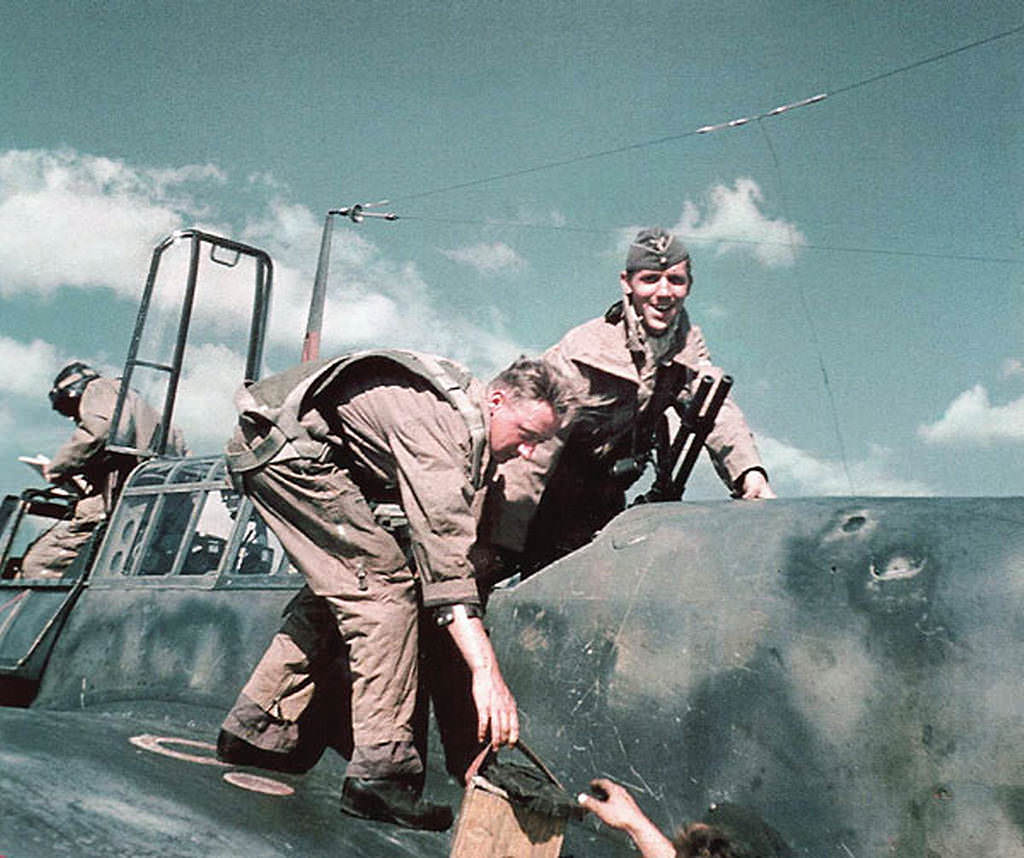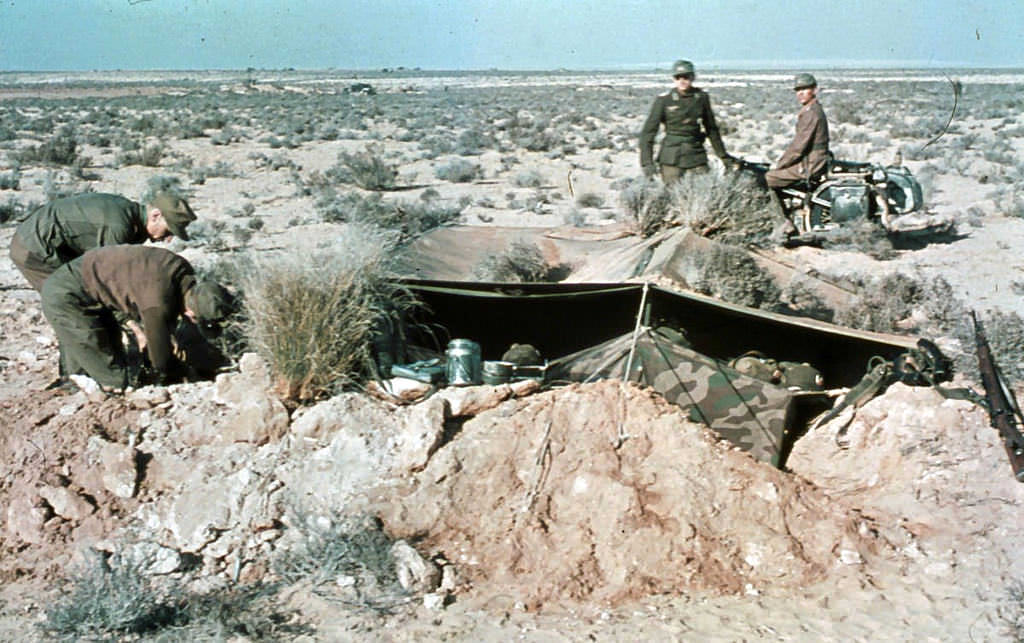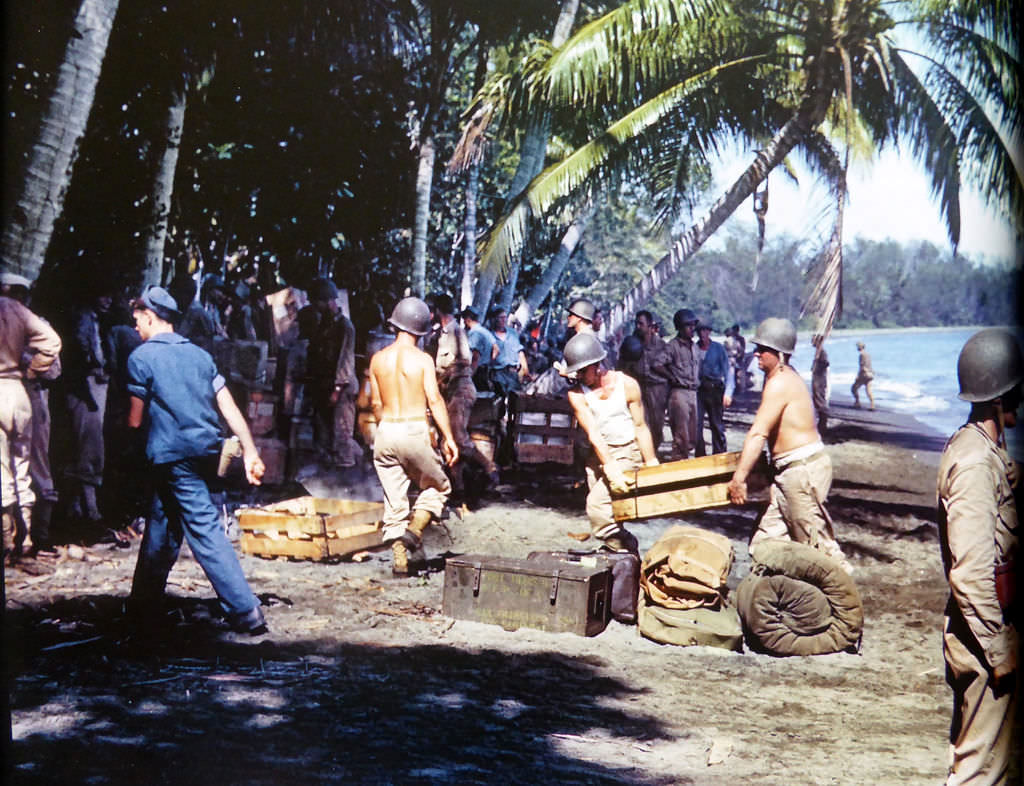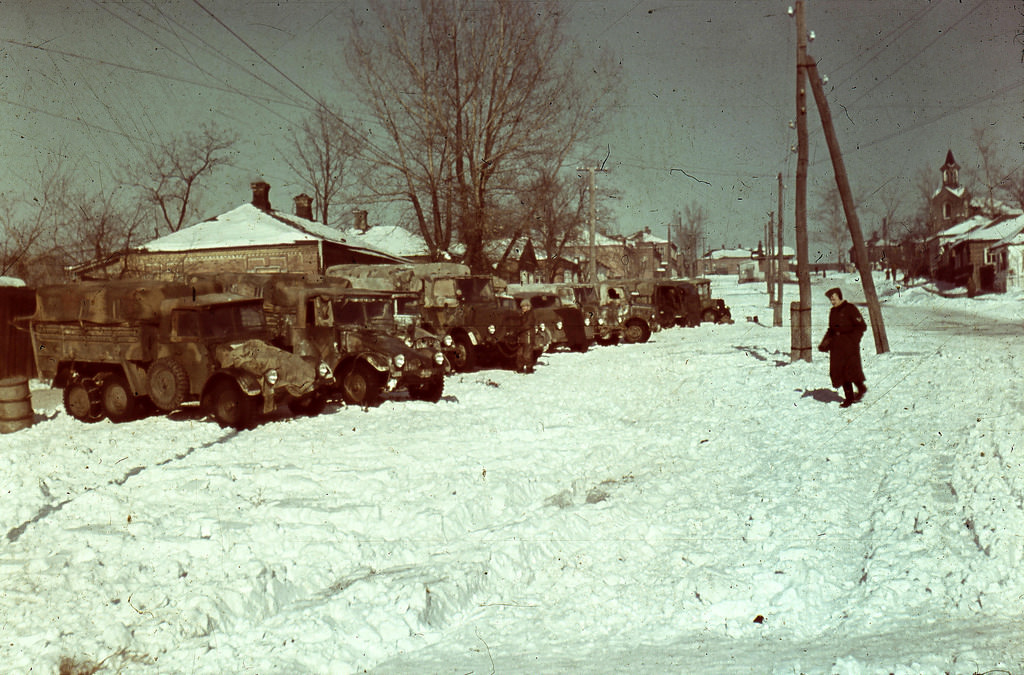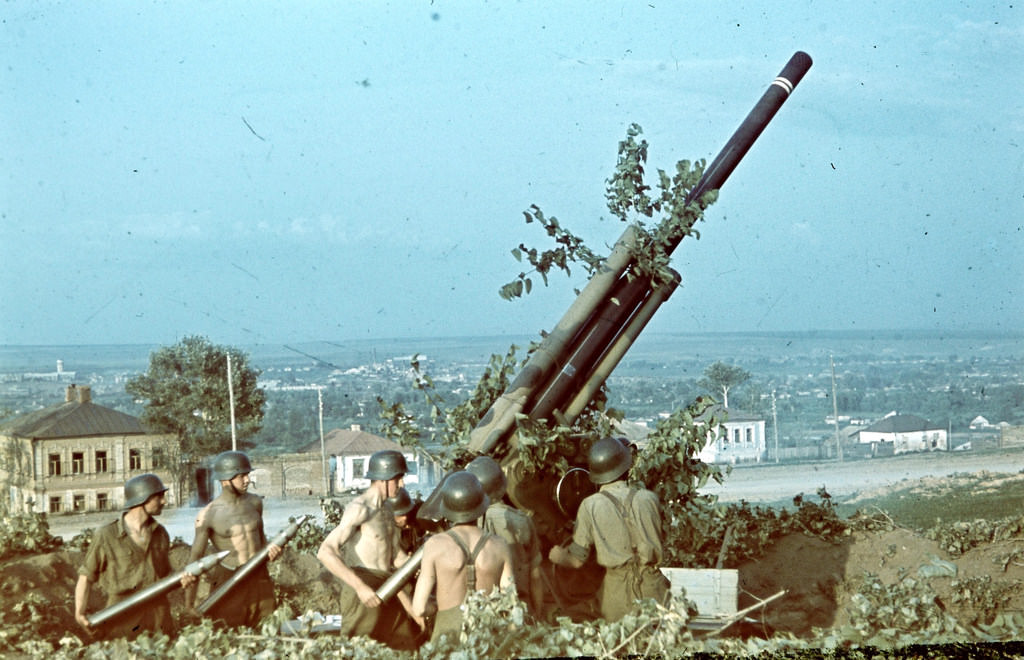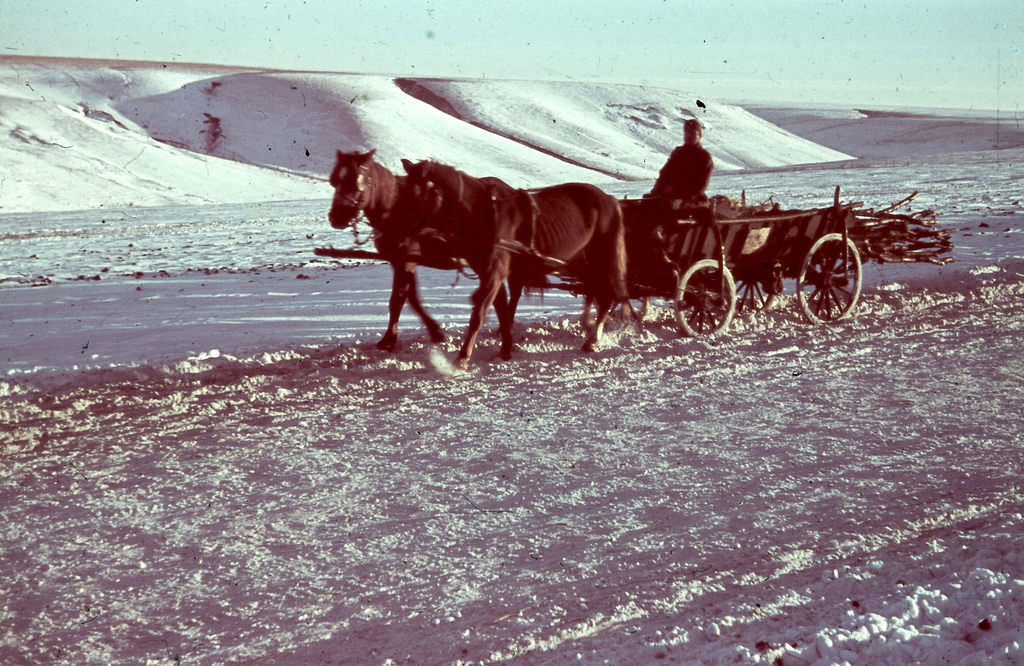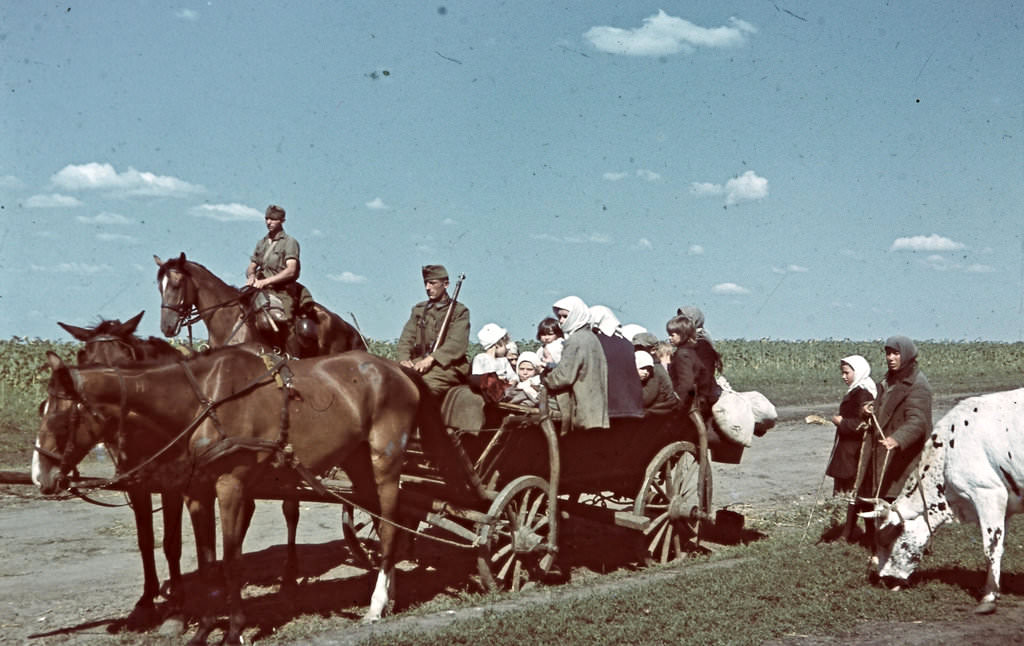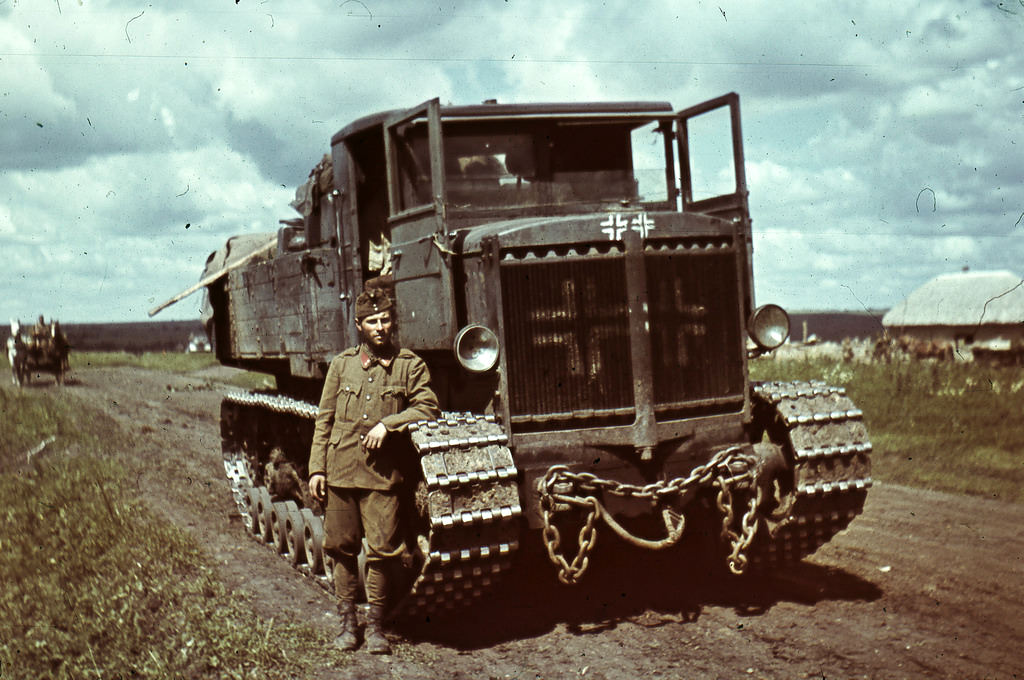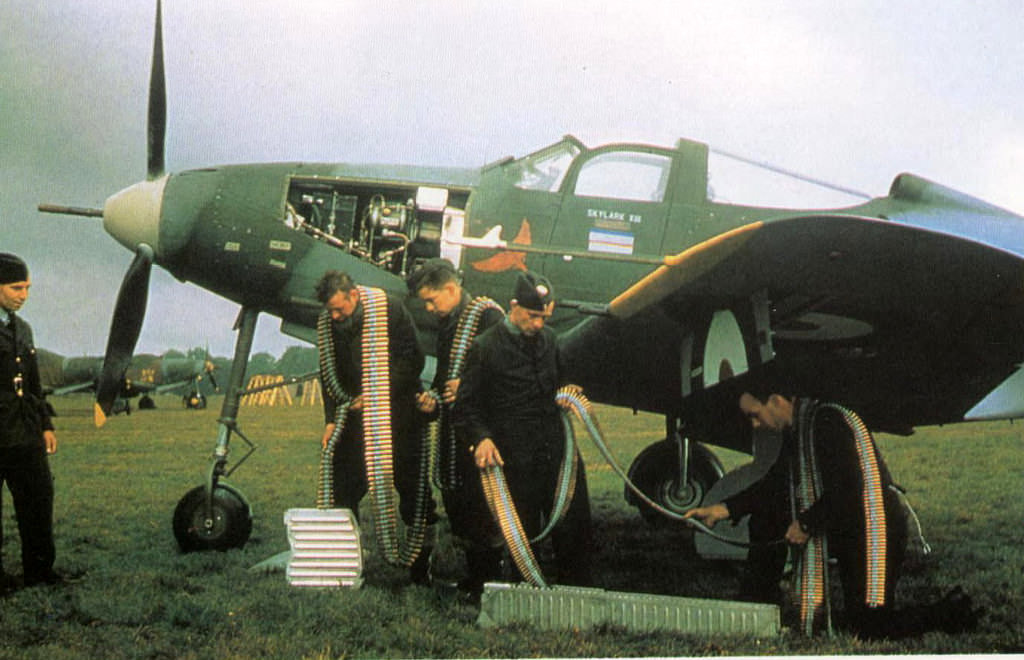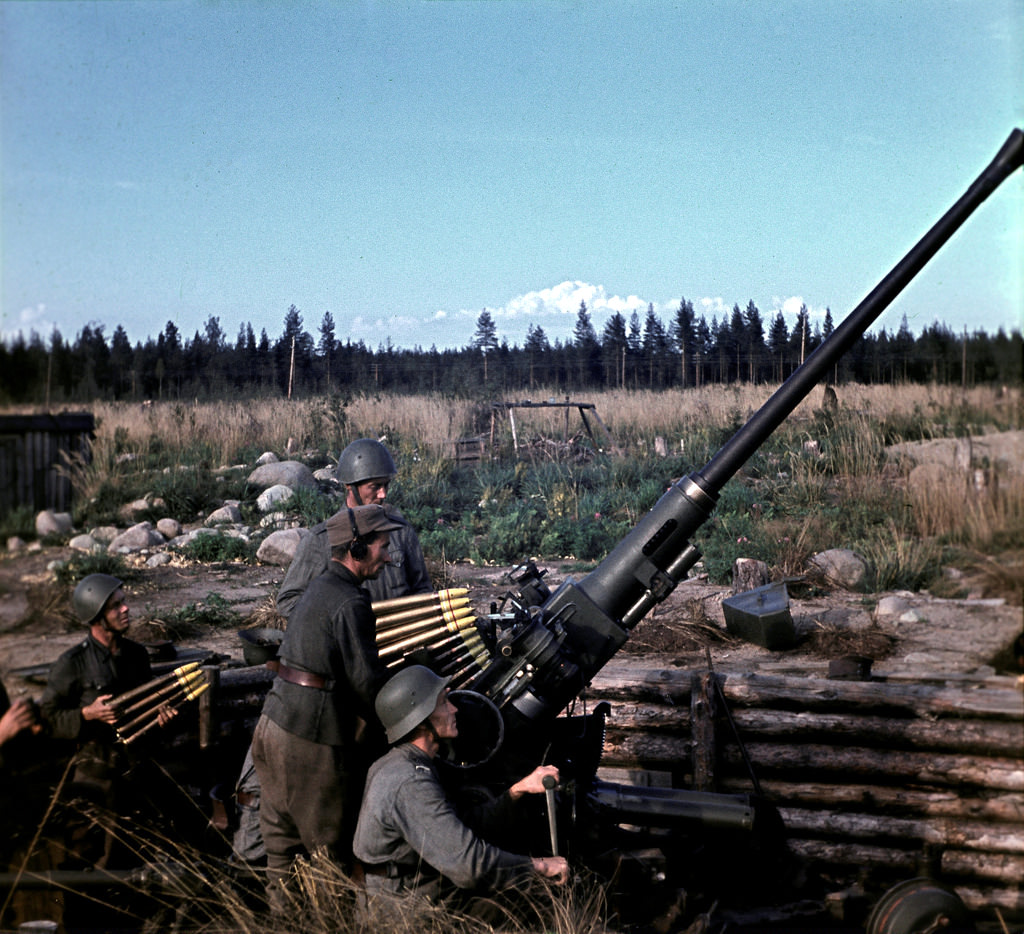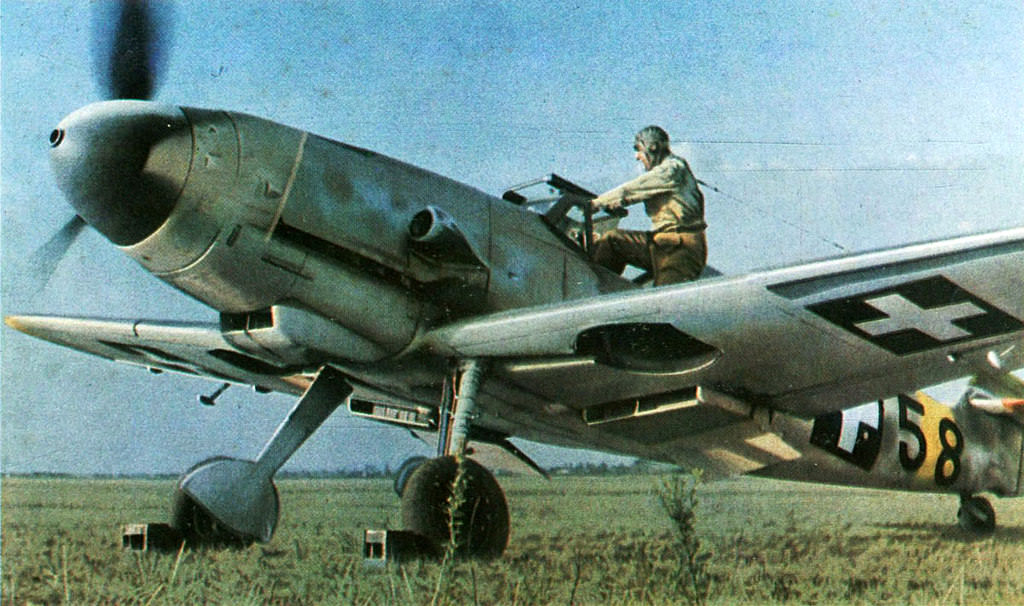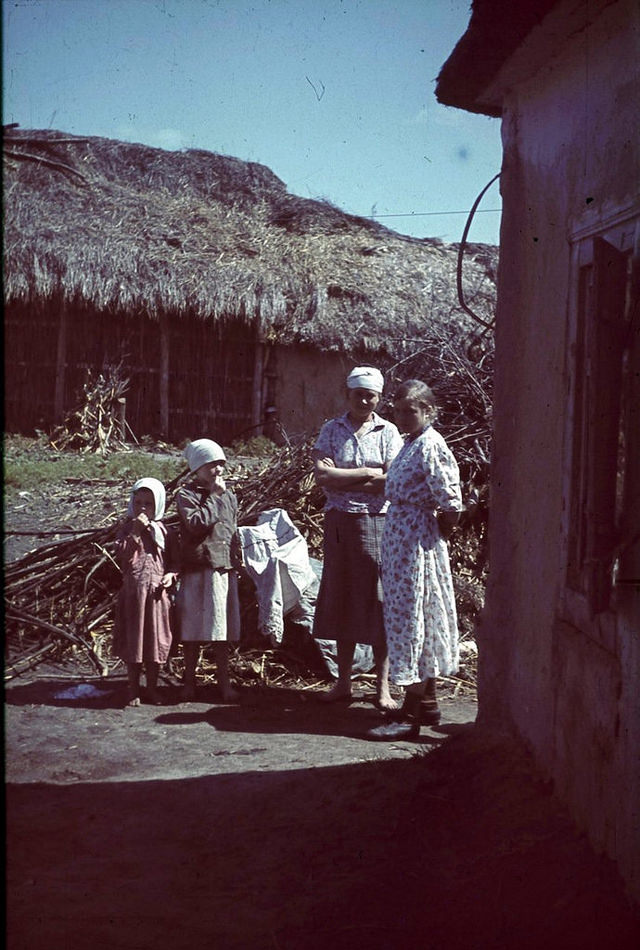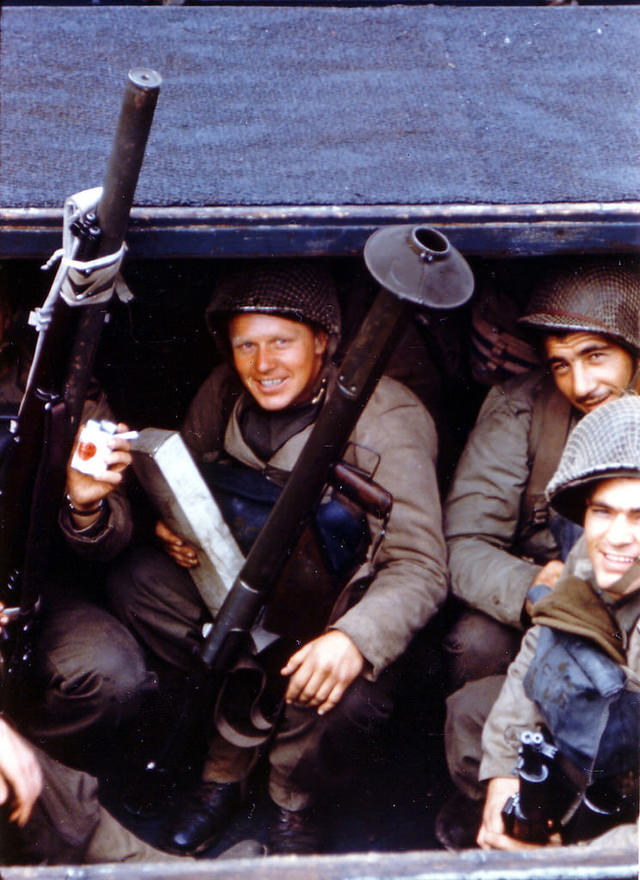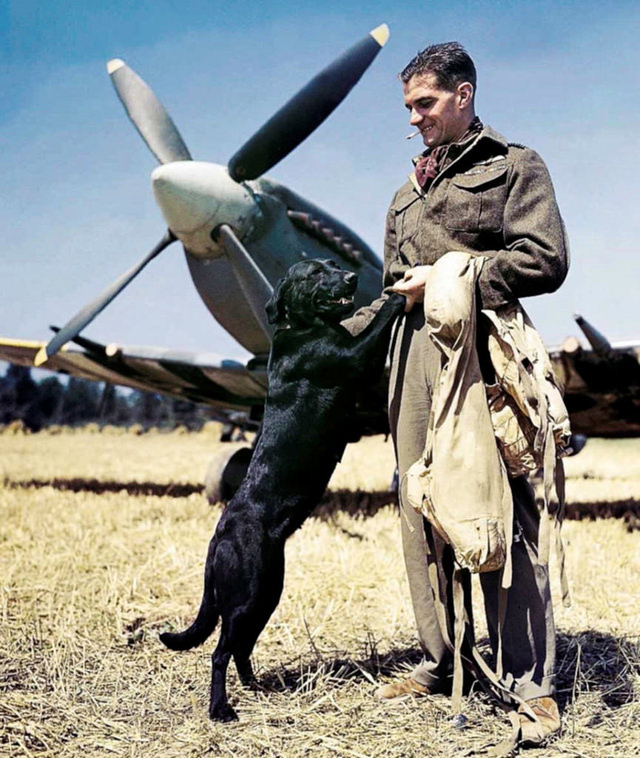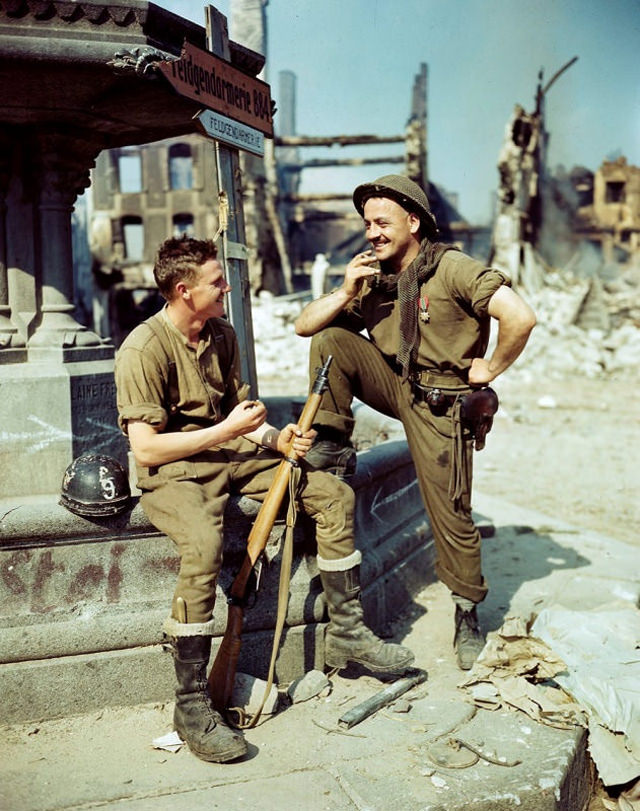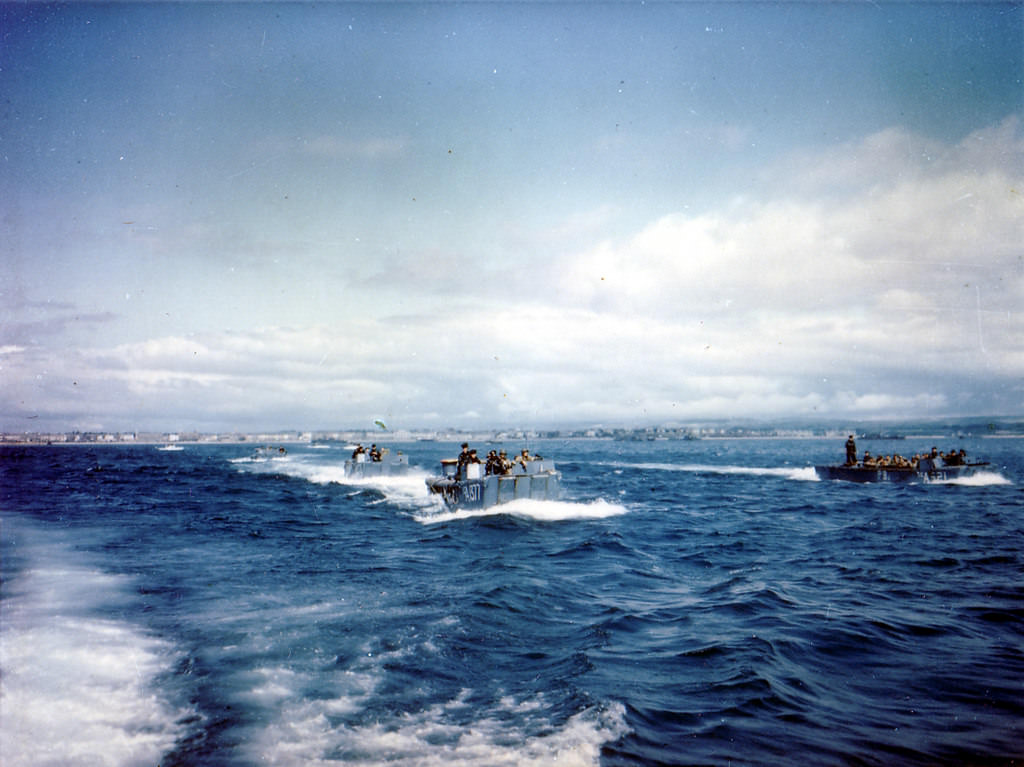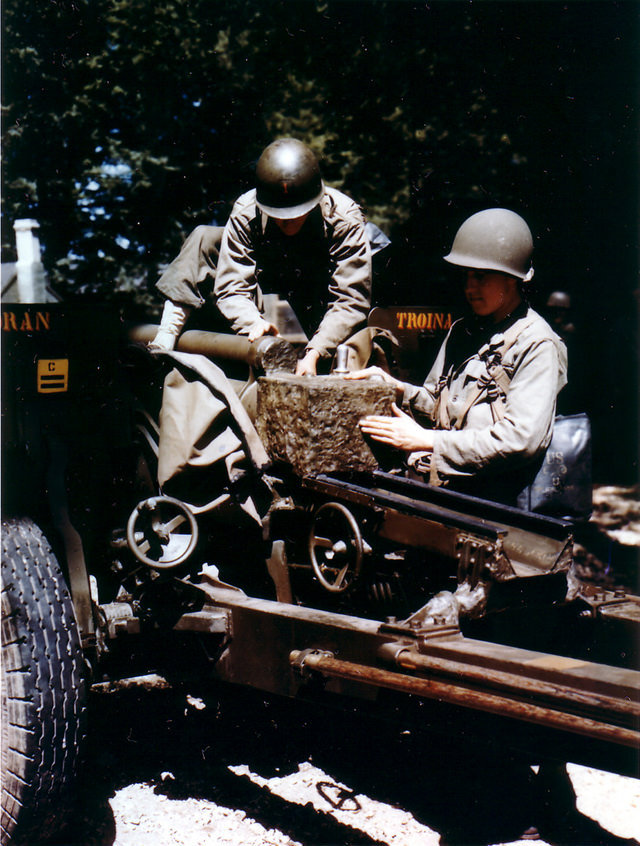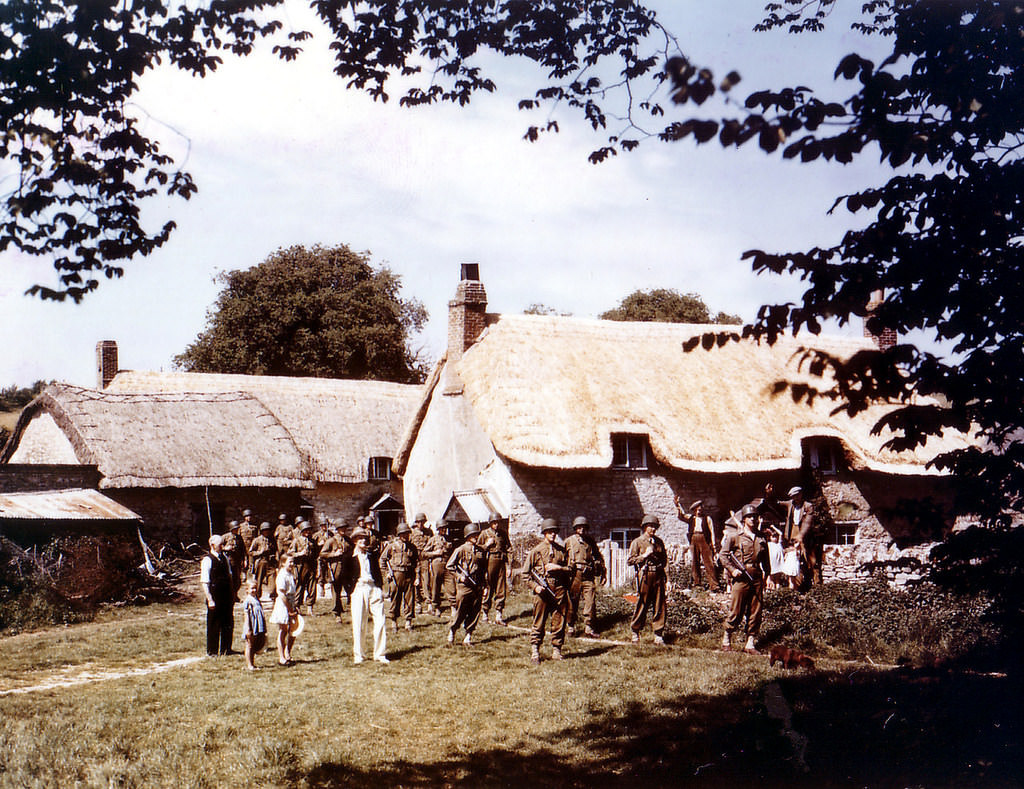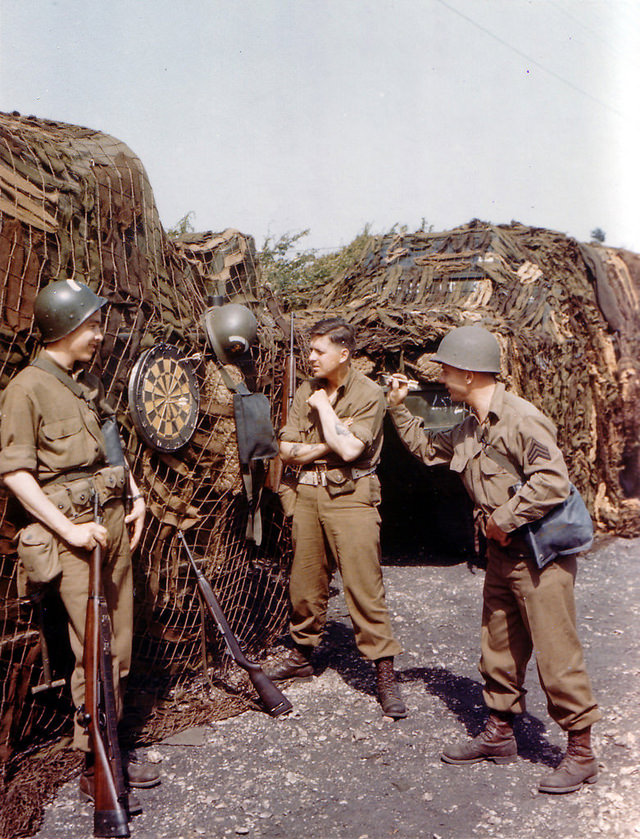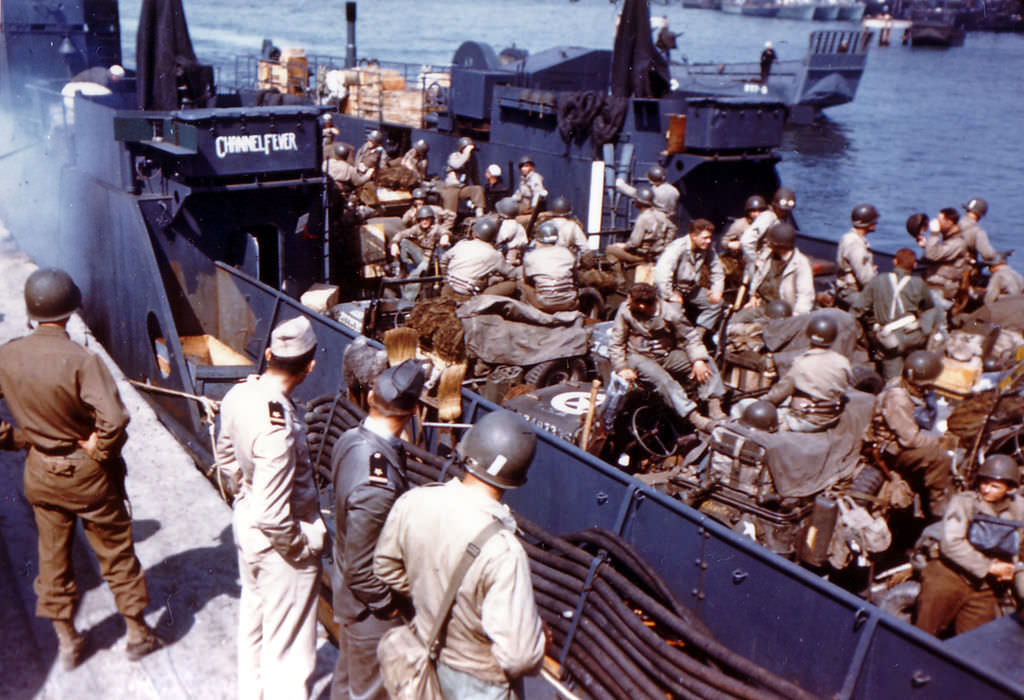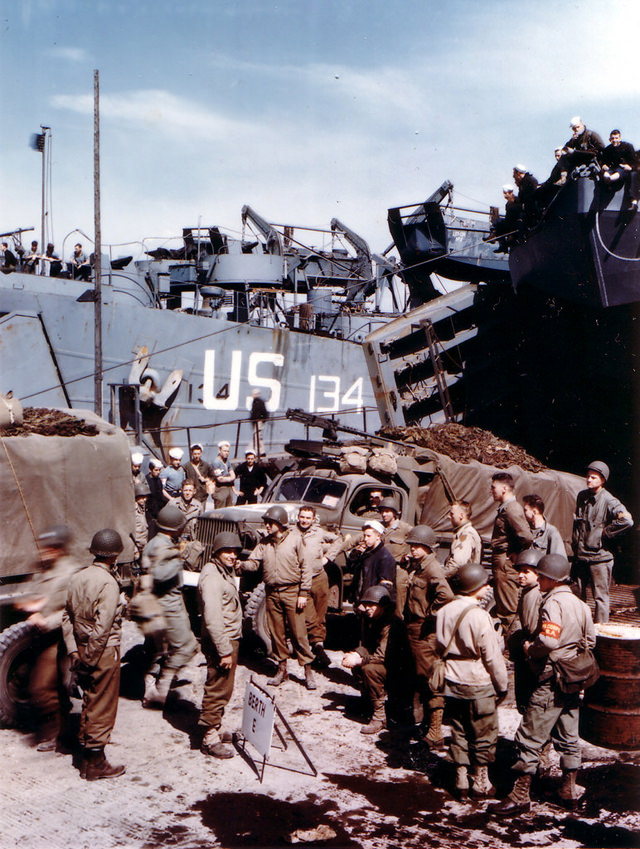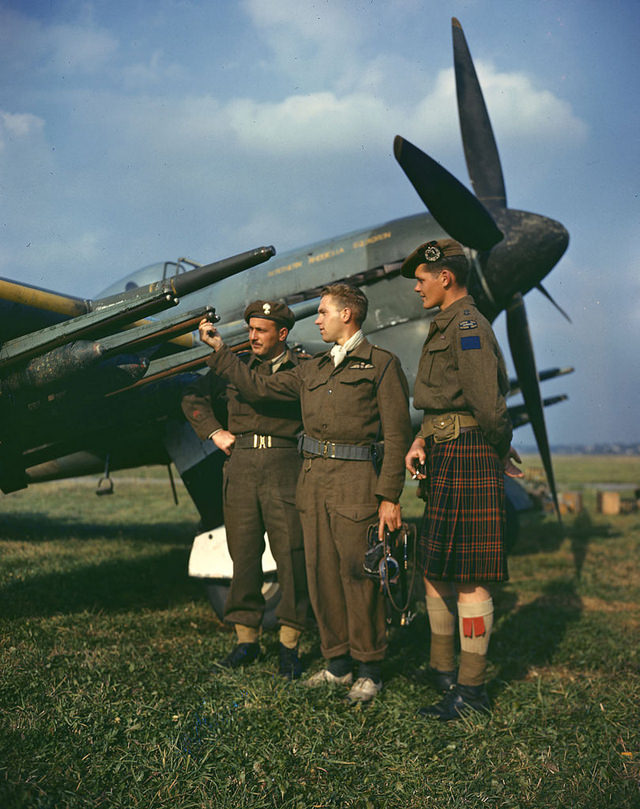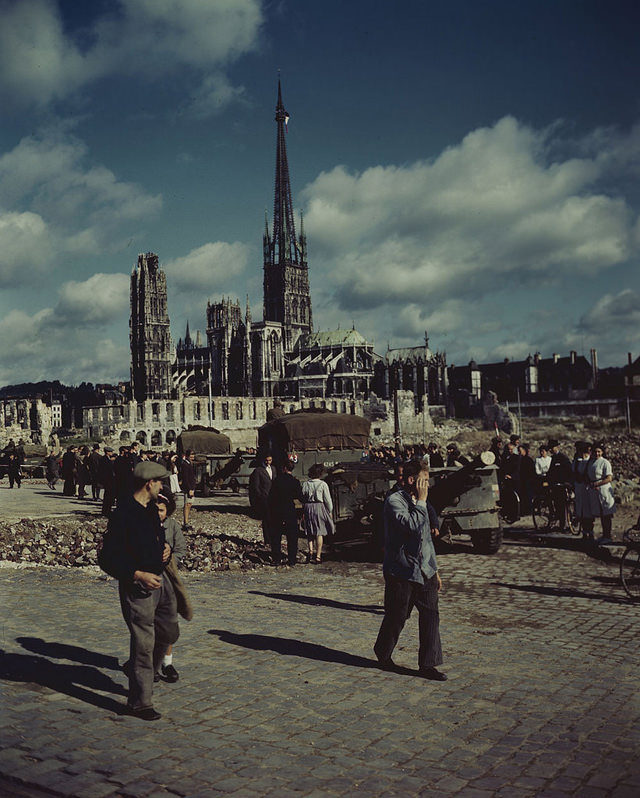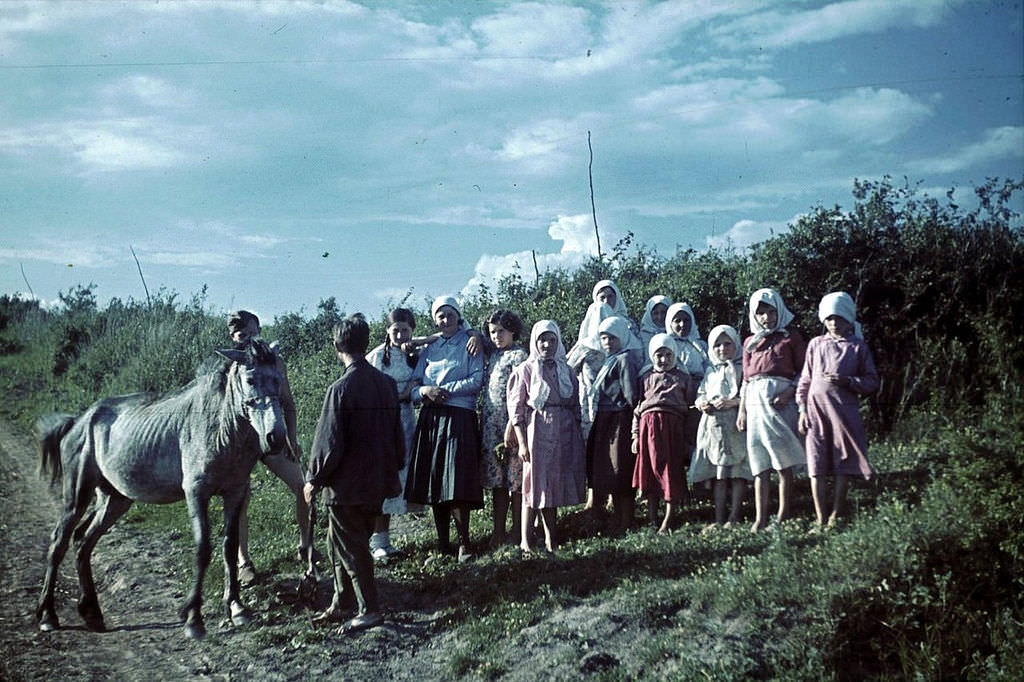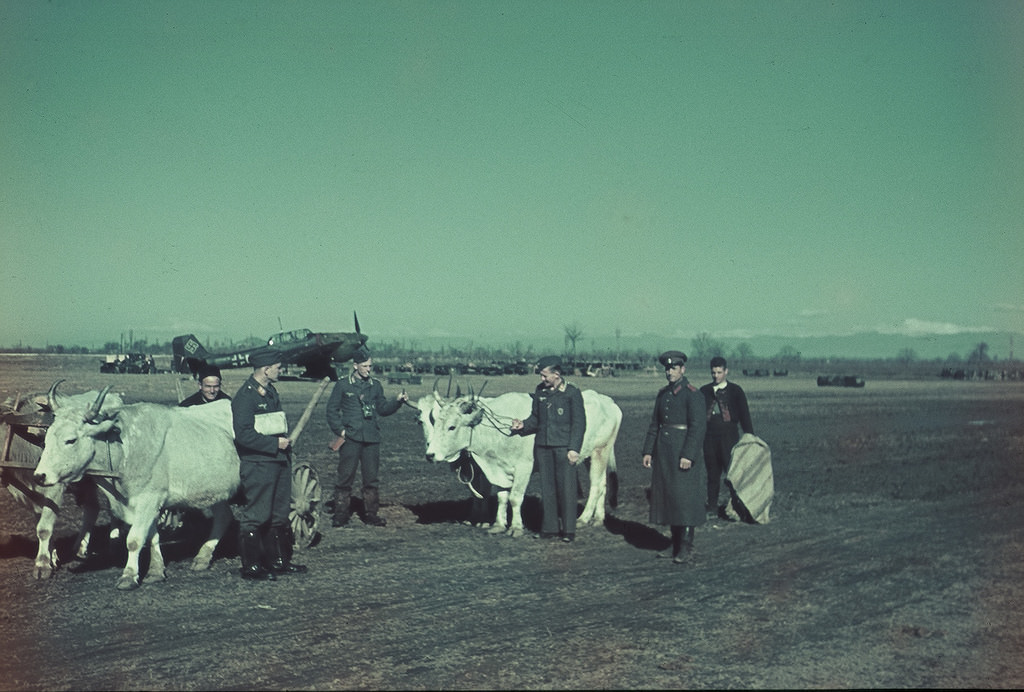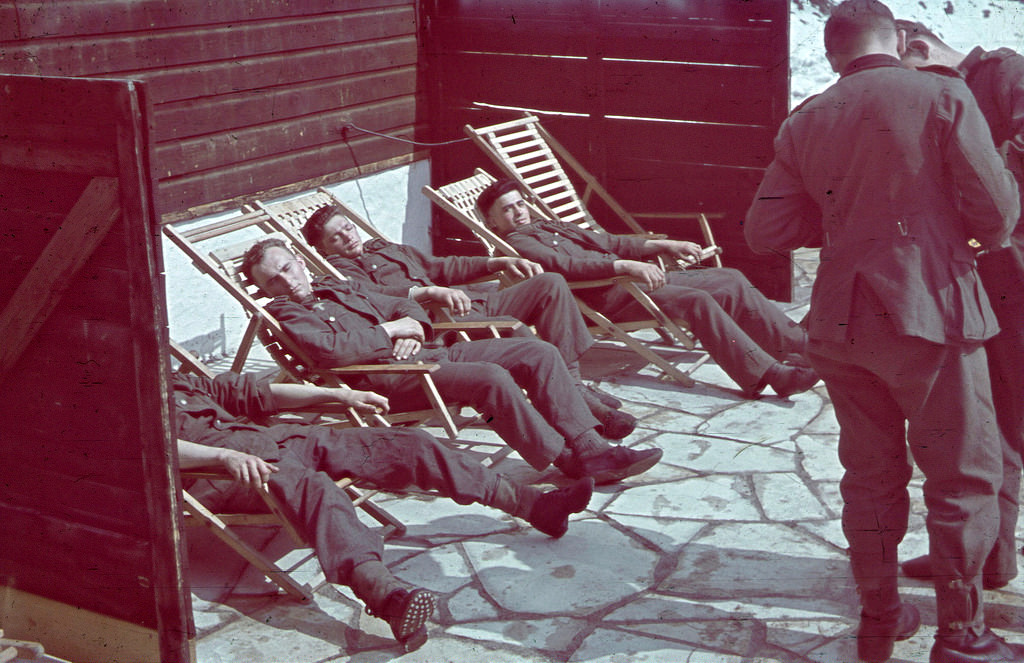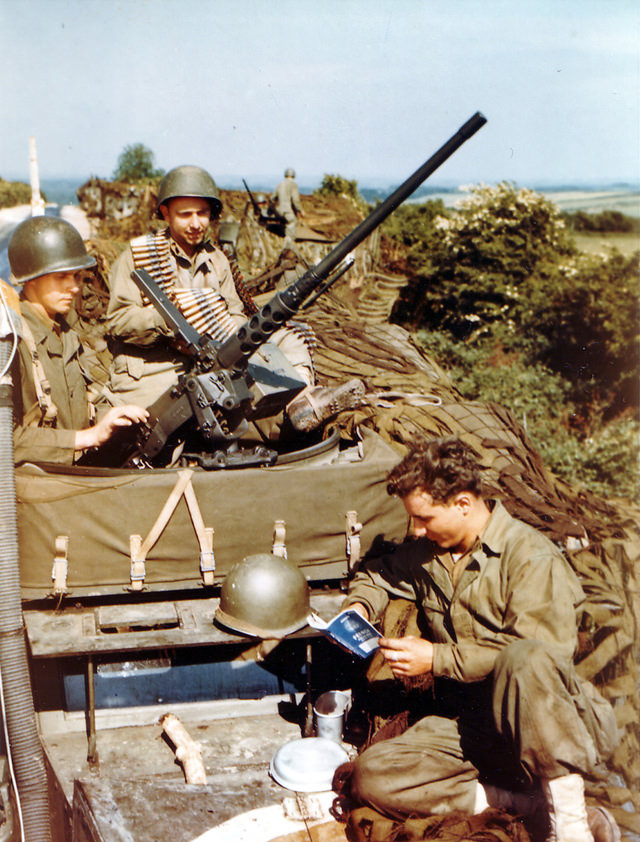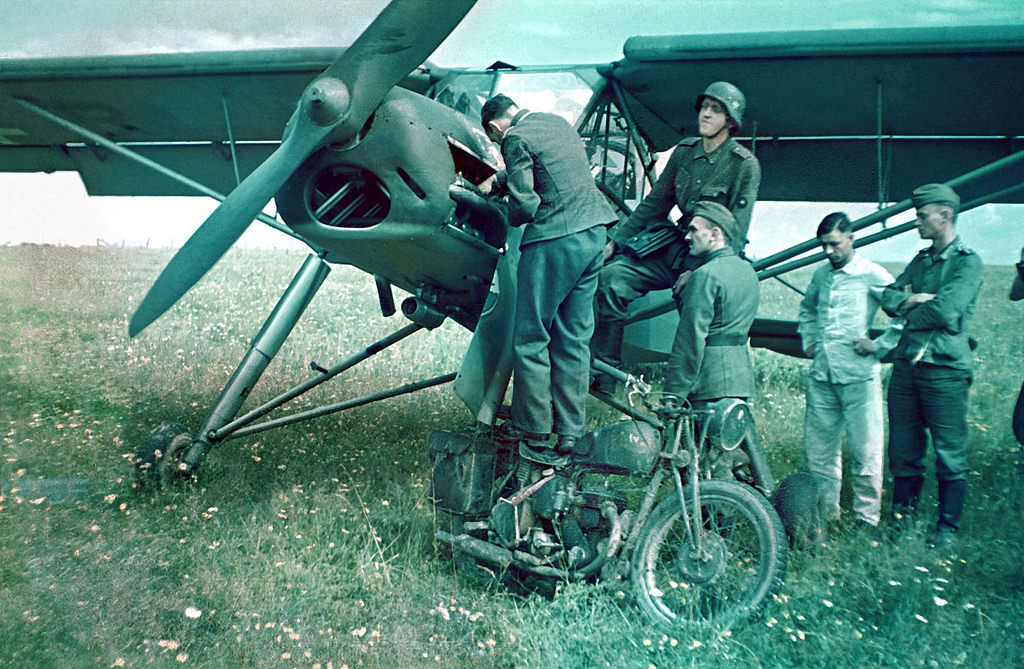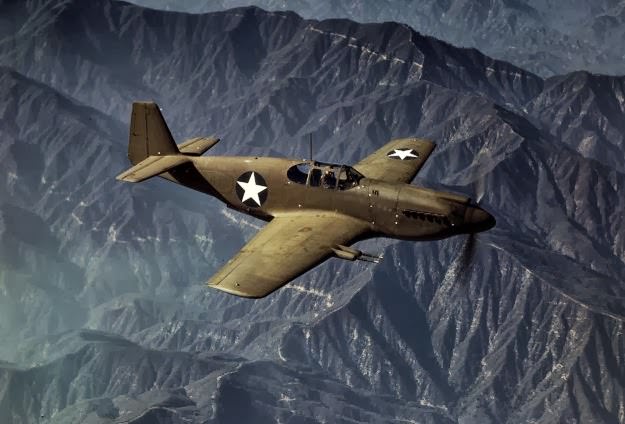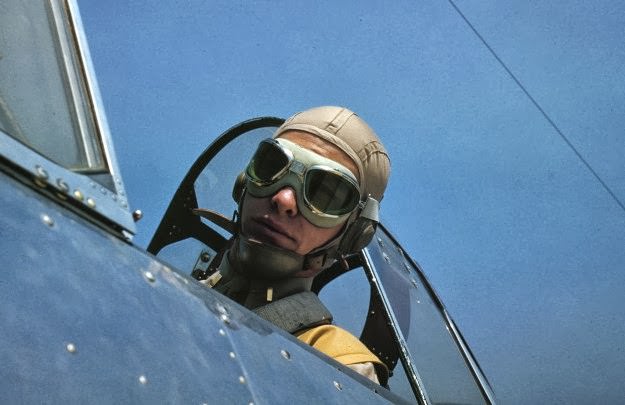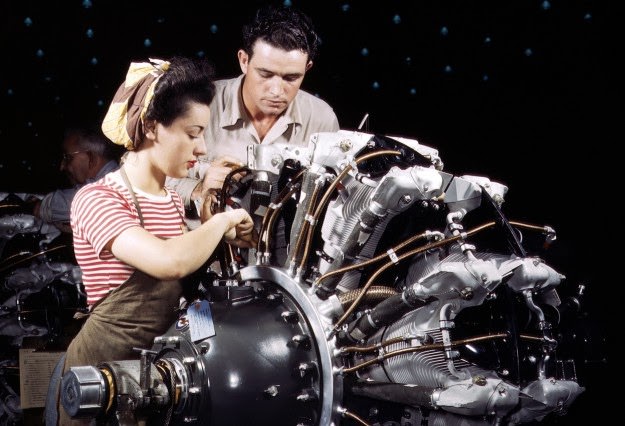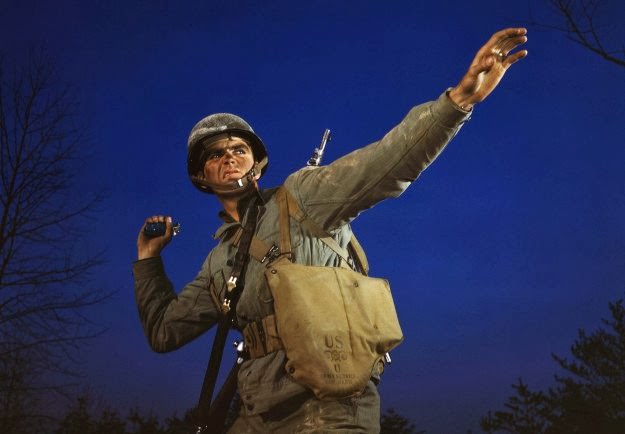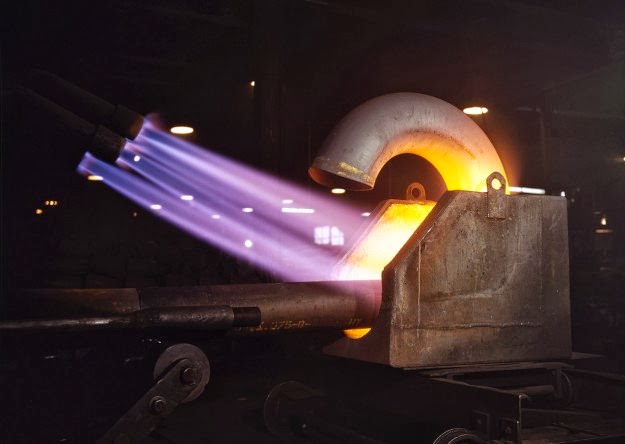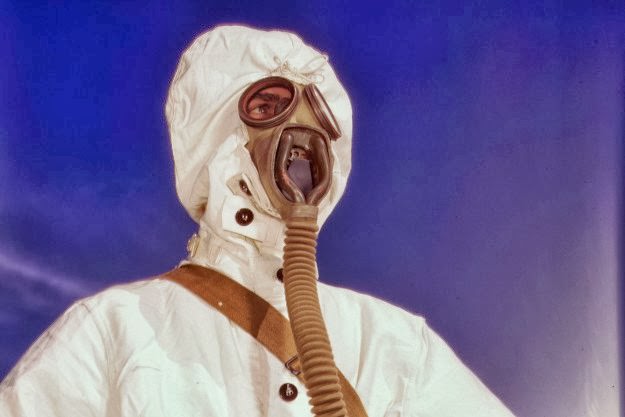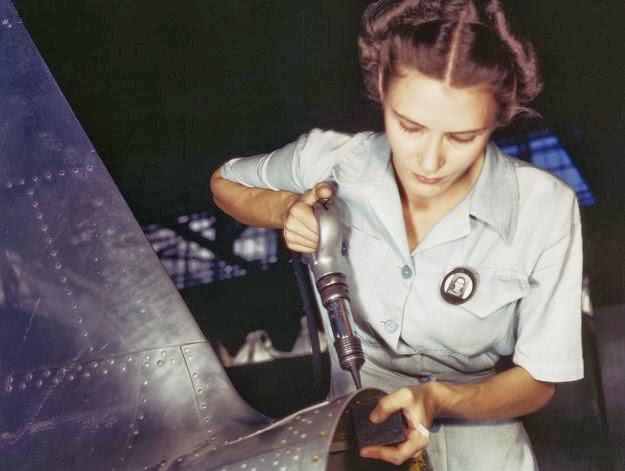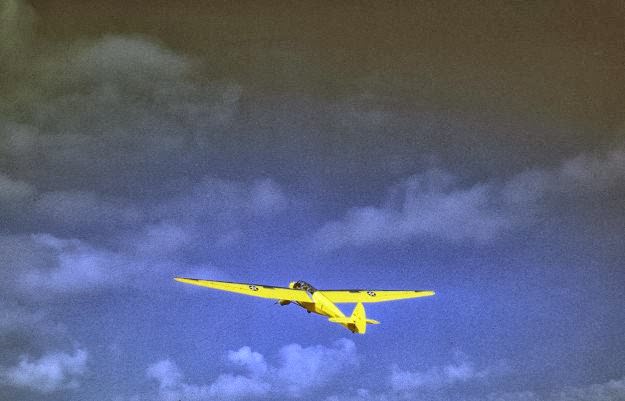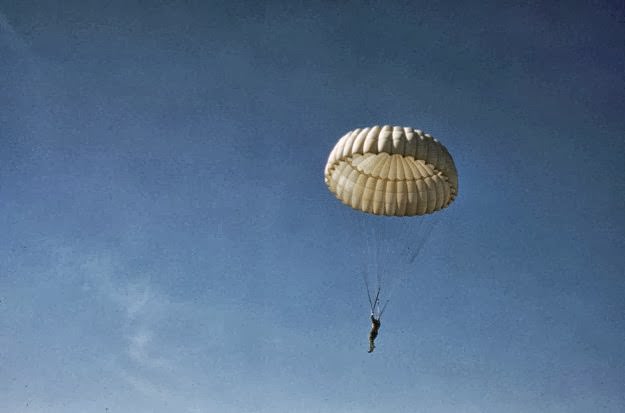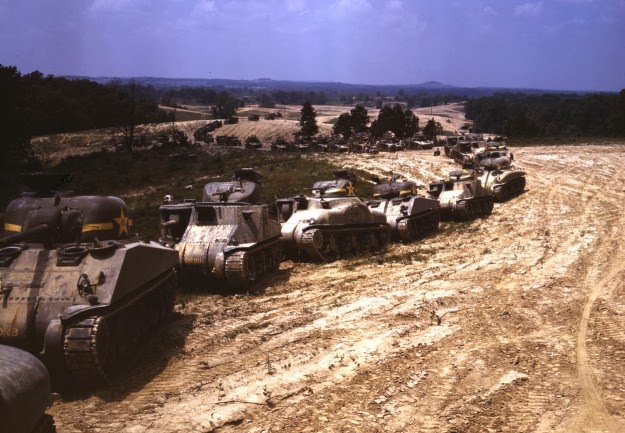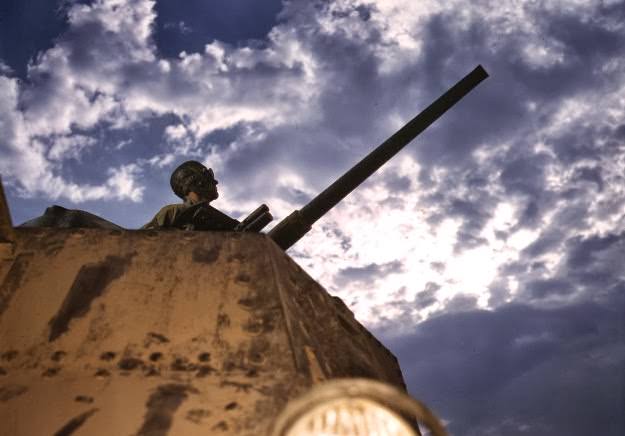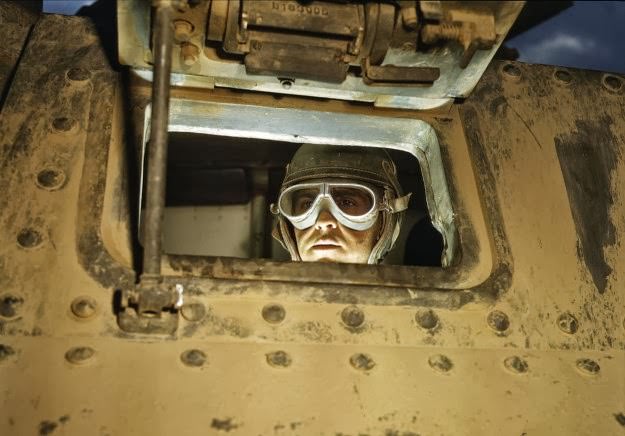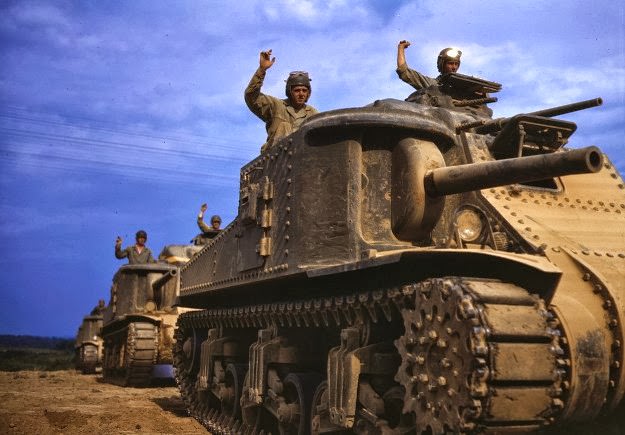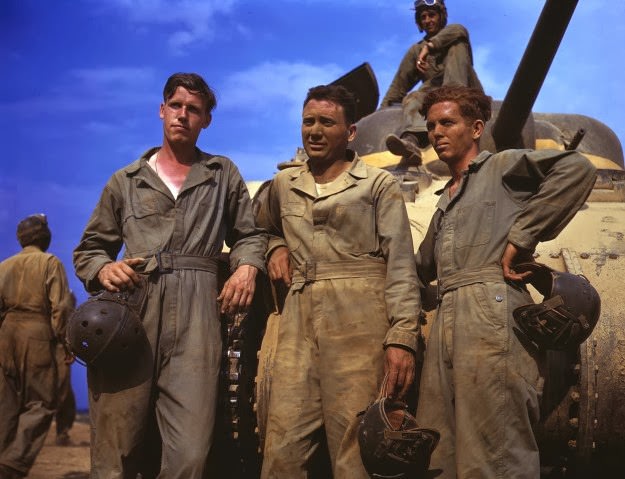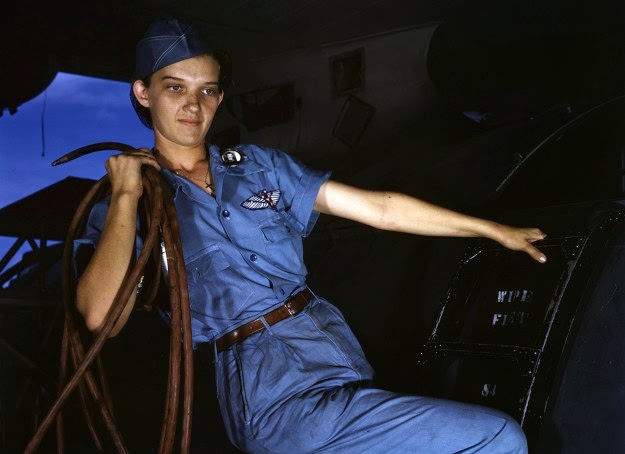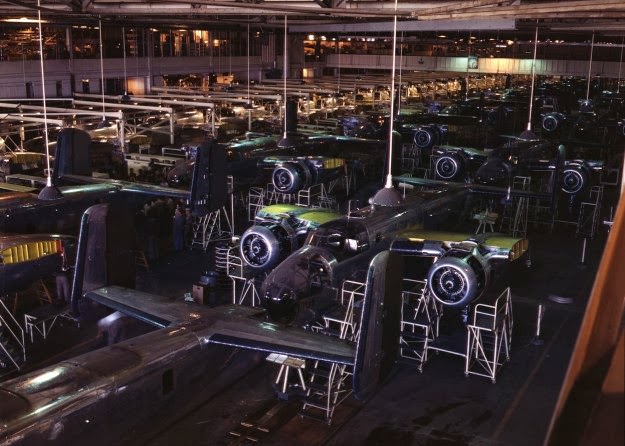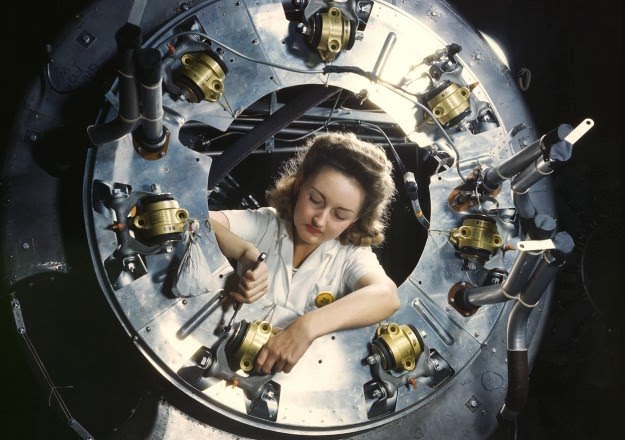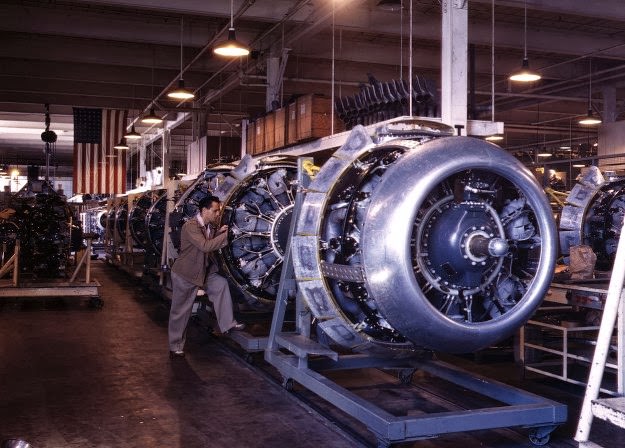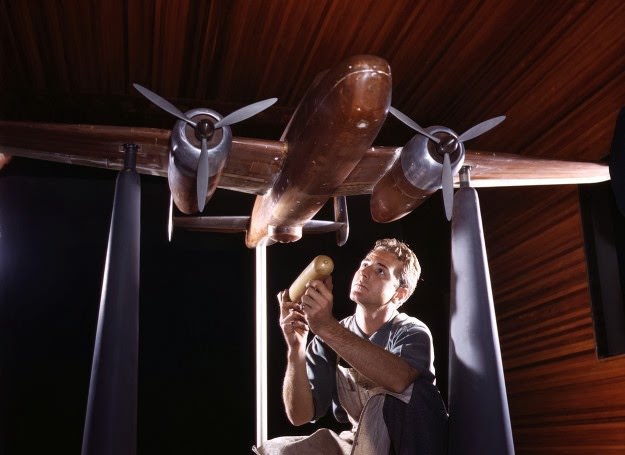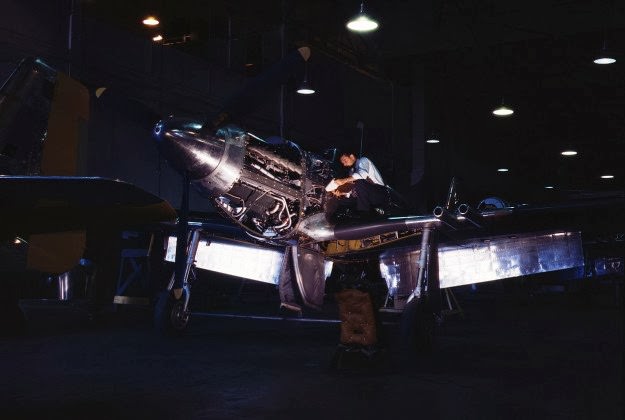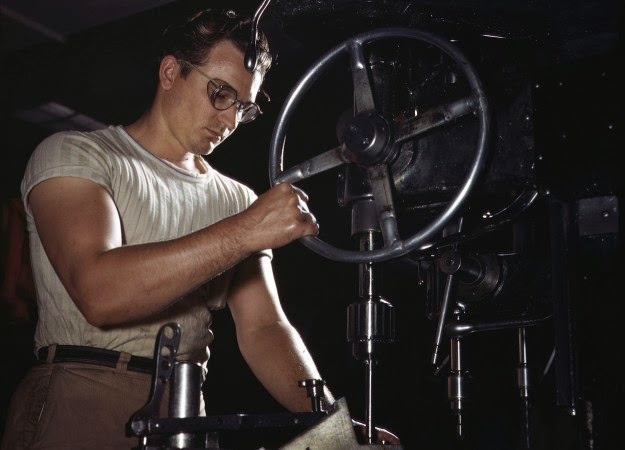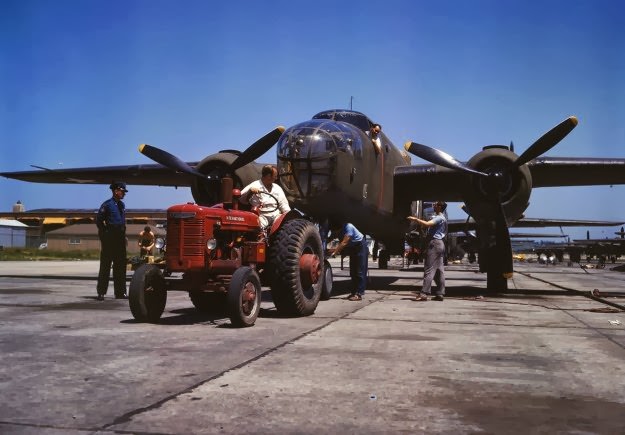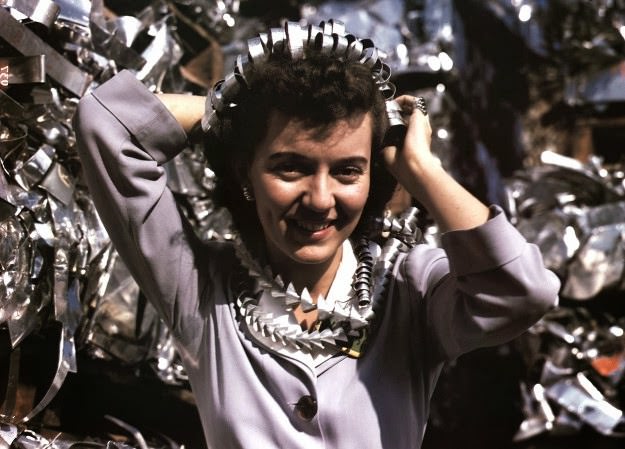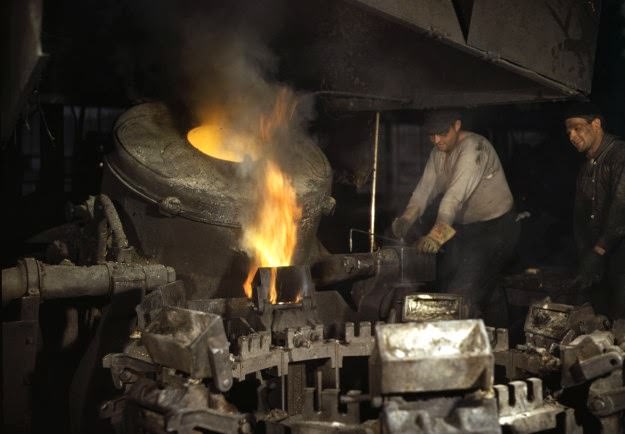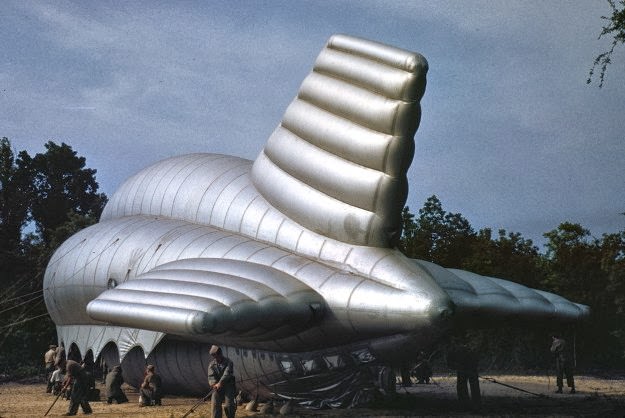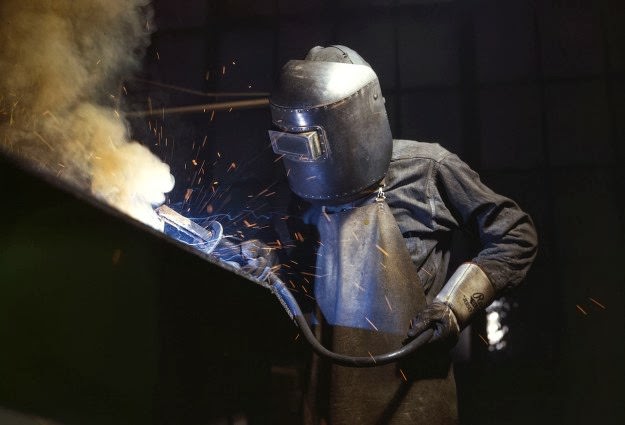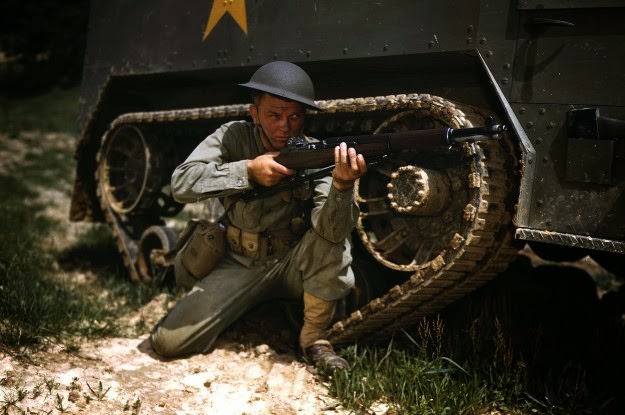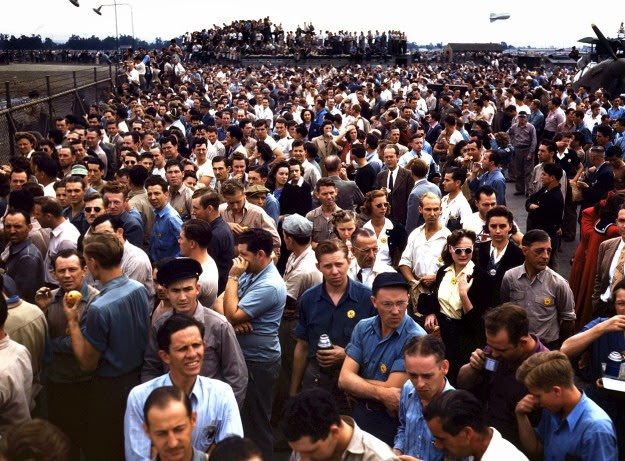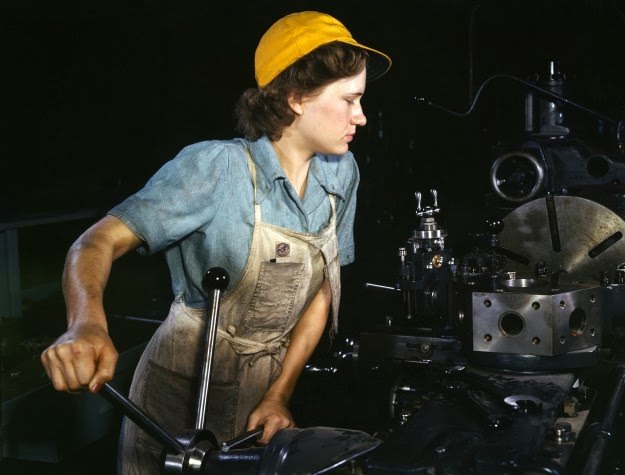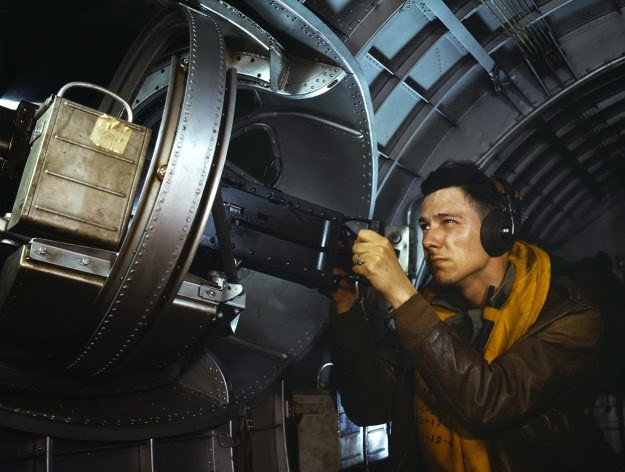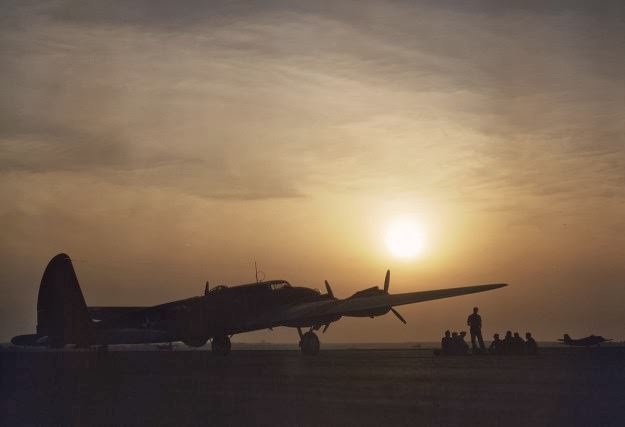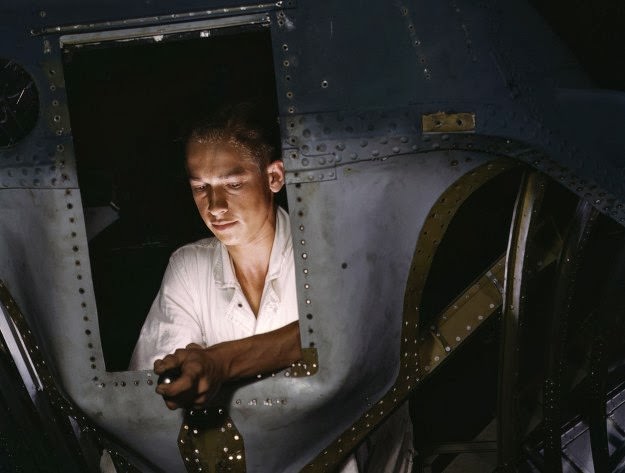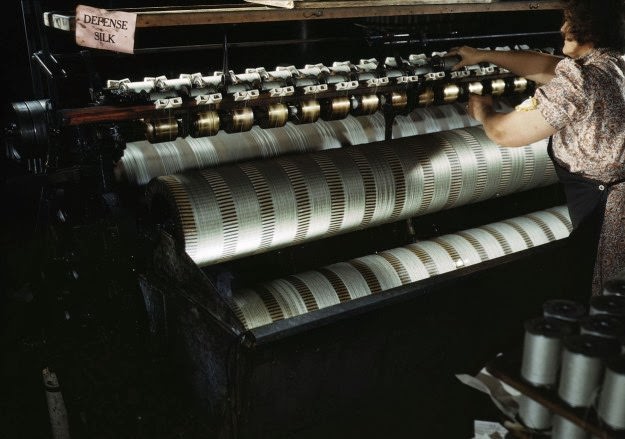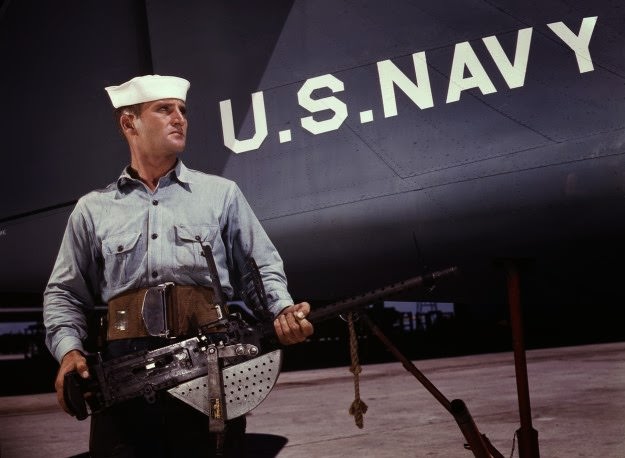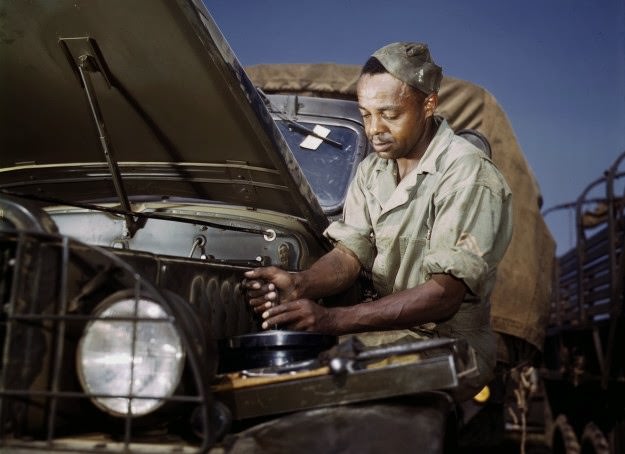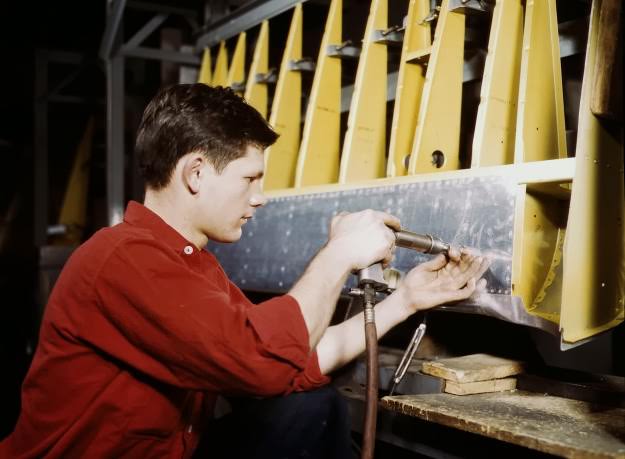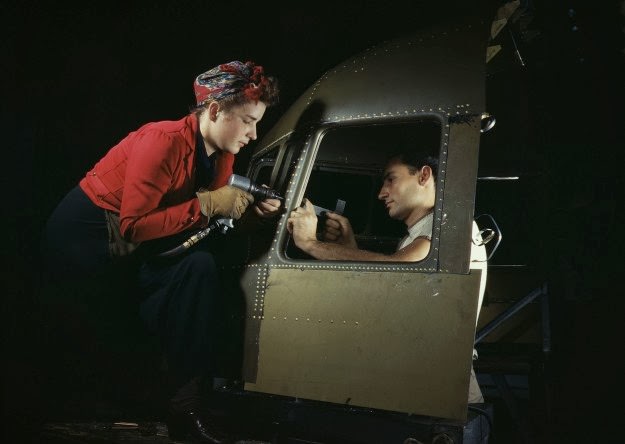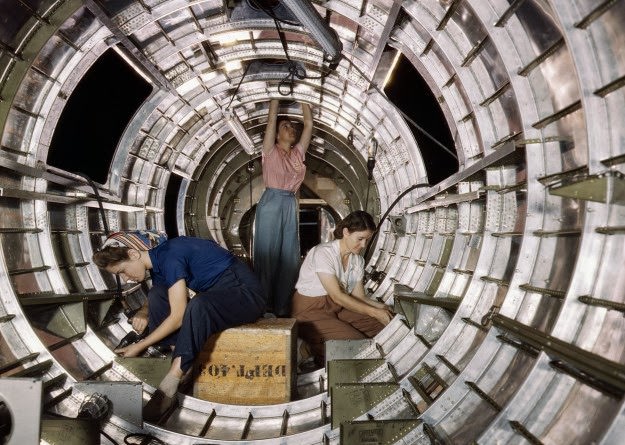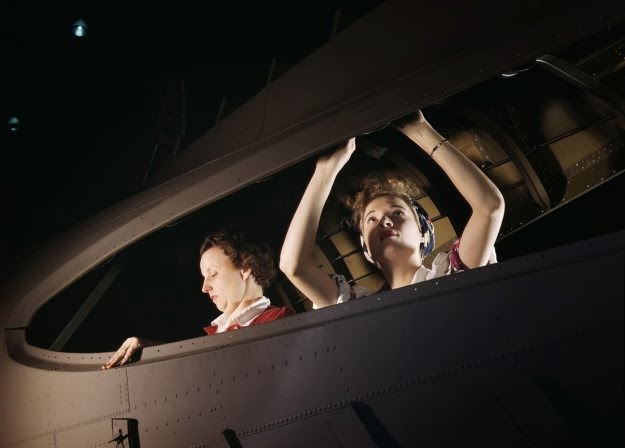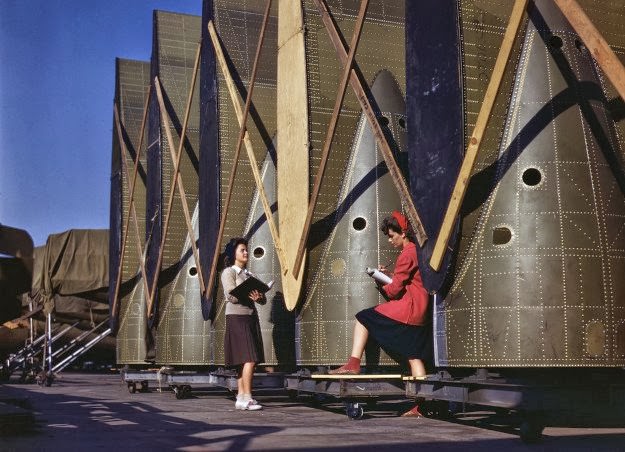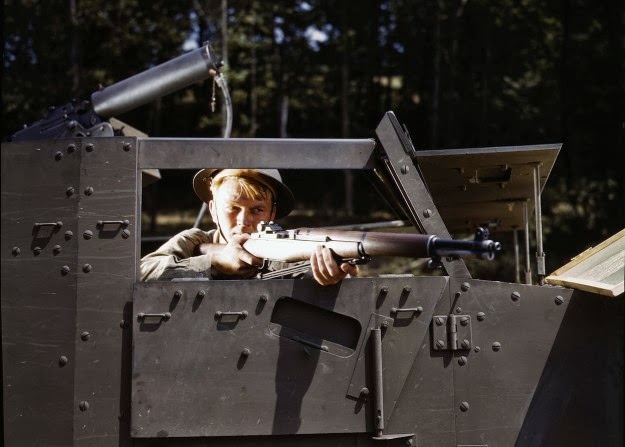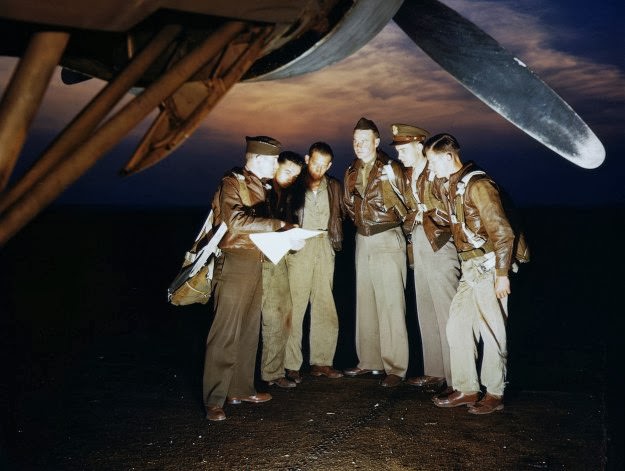World War II was a disastrous global war, started just after two decades of The Great War. The conflict involved virtually every part of the world, with over 30 countries, directly and indirectly, involved in the deadliest war. 75 million people died, including soldiers and civilians, which counts for 3% population at the time. Many civilians died because of deliberate genocide, massacres, mass-bombings, war crimes, diseases, and starvation. The Soviet Union alone lost around 27 million people, including 8.7 million militaries and 19 million civilians. Millions more were injured, and still more lost their homes and property. Here below is a collection of colorized photographs from WWII. These photographs show soldiers on battlefields, women working in factories making weapons, and many more.
#1 American servicemen drive in jeeps through an unidentified and nearly completely destroyed town, Italy, May 1944.
#2 While a patrol moves in from the rear, two United States Marines cover a Japanese sniper hiding in a church, below Shuri Castle on Okinawa, 1945.
#3 broken down and deserted Soviet T-35 heavy tank of the 8th Mechanized Corps. On the Dubno – Plycza highway, Rivne Oblast (province) of western Ukraine.
#4 Soviet artillerymen transporting a 76-mm divisional gun M1942 (ZiS-3) during the forced crossing of the Oder River, Germany, c. December, 1944
#5 Two soldiers standing on the tank and assessing the destructions.
#6 A pair of servicemen and a quartet of schoolboys sit on bridge over the Thames, Henley-on-Thames, England, May 1944.
#7 Supreme Allied Commander American General Dwight D. Eisenhower, his deputy, British Chief Air Marshal Arthur Tedder , and the principal commander of Allied ground forces in Europe, British General Bernard L. Montgomery, stand in a US armored vehicle as they review a tank exercise, Salisbury, England
#8 The flight deck crew prepares planes for launch from the USS Lexington (CV-16), en route near New Guinea, early April, 1944.
#9 Close-up, in-flight view of a Douglas SBD Dauntless piloted by American Lt. George Glacken (left) with his gunner Leo Boulanger, near New Guinea, early April, 1944.
#10 American troops unloading supplies on the shores of Guadalcanal Island in 1943.
#11 American soldier sits and eats his meal (which includes chicken, mashed potatoes, bread, and pineapple) atop rows of a stockpiled ammunition shells, England, May 1944.
#12 British and South African soldiers hold up Nazi trophy flag while combat engineers on bulldozers clear a path through the debris of the bombed-out city of Cassino in 1943.
#13 A US Army Corps of Engineers solider packs 1/2 pound tins of the explosive TNT under one end of an abandoned German tank in preparation for detonation during military operations in the El Guettar Valley, Tunisia, early 1943.
#14 Cadets at Corpus Christie Naval Air Training Station.
#15 An American soldier sits behind the wheel of a Willys MB jeep, shortly before the United States joined World War II, 1941.
#16 Crew removing plane which has made a slight crash landing aboard the aircraft carrier Enterprise CV-6 during the US Navy’s Pacific Fleet maneuvers in 1940.
#17 Crew aboard the aircraft carrier Enterprise CV-6 listening to instructions during the US Navy’s Pacific Fleet maneuvers around Hawaii in 1940.
#18 Photographers standing in front of Pappy’s Pram, a B-26 Marauder at base, 1943.
#19 An Avenger aircraft from the squadron VT-26, after engine failure and a catapult mishap on board the aircraft carrier USS Bataan CVE-29. March 13, 1944.
#20 Spectators from all over the world pick vantage positions on the deck of the USS Missouri, in Tokyo
#21 Wounded troops lying on stretchers aboard a lighter in Munda Point, New Georgia. There were more than 36 million casualties during the War in the Pacific.
#22 Captured wounded Japanese soldier surrounded by Marines on Kwajalein Atoll, Marshall Islands. During World War II, it’s estimated that between 19,500 and 50,000 members of the Imperial Japanese military surrendered to the Allies.
#23 Marines torch a Japanese defensive in Iwo Jima’s Mount Suribachi by using flamethrowers in 1945. These military tools were an effective weapon for burning out entrenched fighters who would have otherwise continued to fight, costing more lives. Pictured are Pvt. Richard Klatt and PFC Wilfred Voegeli
#24 A Supermarine Spitfire Vc ‘Tropical’ JK707 MX-P serving with 307th Fighter Squadron, 31st Fighter Group operated by 12th USAAF. The regular pilot was 1st.Lt. Carroll A.
#25 A Finnish soldier practices maneuvers in the winter snow at a military dog training school during the Finnish-Soviet Continuation War. Hämeenlinna, Finland. February 1941.
#26 A Chinese Nationalist soldier guards a row of Curtiss P-40 ‘Warhawks’ flown by the ‘Flying Tigers’ of the American Volunteer Group (AVG). July, 1942.
#27 Squadron Leader J.A.F. MacLachlan, the one-armed Commanding Officer of No 1 Squadron RAF, standing beside his all-black Hawker Hurricane Mark IIC night fighter, ‘JX-Q’, at Tangmere in West Sussex, England
#28 T/5 William E. Thomas and Pfc. Joseph Jackson prepare a gift of special “Easter Eggs” for Adolf Hitler and the German Army. Scrawling such messages on artillery shells in World War II was one way in which artillery soldiers could humorously express their dislike of the enemy.
#29 The strain and fatigue of 23 days on the line is shown by Marines of Combat Team ‘C’, 2/7th US Marines, 1st Marine Division seen here displaying Japanese battle flags captured during the Battle of Cape Gloucester. 14-15th January 1944
#30 On October 1, 1940, Private Jack Bernard and other volunteers in The British Columbia Regiment (Duke of Connaught’s Own Rifles) were marching smartly down Eighth Street in New Westminster to board a ship and sail off to war.
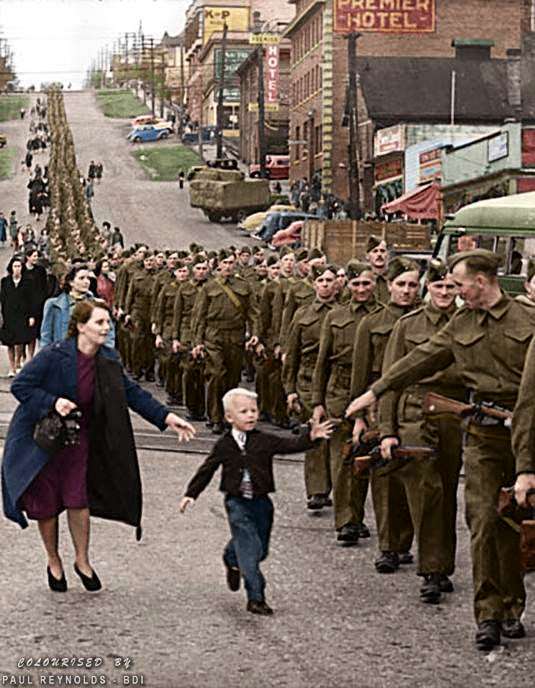
Suddenly, Bernard’s five-year-old son broke free of his mother’s grasp and sprinted into the military formation to take his smiling father’s hand. In that instant, an alert Vancouver Daily Province photographer, Claude Dettloff, snapped the shutter. Soon, his unforgettable image of little Warren “Whitey” Bernard was being printed by leading publications throughout North America. It was later used in Canada’s war bond drives with the plea, “help bring my Daddy home.” Jack Bernard survived the war and was reunited with his son in 1945
#31 US pilot stands up in the cockpit of his plane on the tarmac on Midway Naval Base, Midway Islands, 1942.
#32 A group of Curtiss P-40 Warhawks escorted a pair of Consolidated B-24D Liberators on a flight near the Aleutian islands, Alaska, 1944.
#33 The crew of a B-26 Marauder outside their plane, nicknamed Ginger, 1944.
#34 American servicemen moving a large bomb at an ammunition dump in 1944.
#35 A soldier sleeping in the sun.
#36 American Army trucks parked next to the St. Lucia fountain in 1943.
#37 A worker at Electric Boat Co. in New London, Conn. in 1943.
#38 An American gun crew in camouflaged emplacement awaiting orders to fire during the desert fighting between German and American forces in the El Guettar Valley in 1943.
#39 El Guettar Valley, Tunisia in 1943.
#40 Members of the flight and ground crews of a B-17 bomber named ‘Honey Chile II’ make adjustments to their plane prior to a mission, Polebrook, Northamptonshire, England, fall 1942.
#41 Curtiss Wright’s chief test pilot H. Lloyd Child (center) writes on a clipboard as he stands with other pilots on a tarmac near the companies manufacturing plant, Buffalo, New York, 1941.
#42 Three American Marines in dress uniforms talk aboard an unidentified ship during the US Navy’s Pacific fleet maneuvers near Hawaii, September 1940.
#43 US soldiers of the 7th Infantry Division attacking a Japanese blockhouse on Kwajalein in the Marshall Islands in 1944. The troops began capturing the islands by landing their forces on the beaches.
#44 U.S. Marines firing an M1919 Browning machine gun during the fighting on the island of Peleliu.
#45 U.S. Army soldiers on Bougainville, an island in Papua New Guinea, taking cover behind an M4 Sherman tank in February 1943.
#46 Men of the US 1st Marine Division fighting just beyond White Beach, Peleliu in September 1944.
#47 US marines huddled on the beaches during the Battle of Tarawa in World War Two, Kiribati, 1943.
#48 Deceased US soldiers are wrapped in their national flag and carefully lowered down onto a ship by comrades ready for burial.
#49 Soldiers make their way across the barren landscape in Kwajalein, Marshall Islands, 1944.
#50 US 1st Cavalry Division crossing the Pasig River, Manilla in February 1945. Around 41,500 US troops were declared missing or dead during the Pacific War.
#51 US troops make their first strike on the Japanese Home Islands at Iwo Jima in 1945. The battle lasted for five weeks and contained some of the most bloody and brutal fighting of the whole war.
#52 Survivors of USS Indianapolis en route to hospital after being rescued in August 1945. After the sailor’s ship was sank by Japanese tornadoes, sharks swarmed the survivors in the wreckage.
#53 A U.S. Marine shares his water bottle with a stray kitten found under a burned-out Japanese tank on Tarawa in 1943.
#54 This picture was taken during The Battle of Saipan, where the Allied invasion fleet left Pearl Harbor in 1944. Tragically, 30,000 troops and Japanese civilians were declared dead following the conflict.
#55 Alligator landing vehicles heading toward defenses on Peleliu in September 1944.
#56 Men wade through the water near Butaritari Beach, Makin Atoll in November 1943.
#57 US Marines under heavy fire from enemy Japanese positions during the beginning of the Battle of Peleliu in 1944.
#58 Two Marines from the 2nd Battalion, 1st Marine Regiment during fighting at Wana Ridge during the Battle of Okinawa, May 1945.
#59 Marines firing mortar shells in the Solomon Islands.
#60 US Marines on the beach of Namur Islet, Kwajalein Atoll.
#61 A US marine takes aim while sitting on Japanese ammunition boxes.
#62 Marines from the H Battery, 3rd Battalion set up artillery in the Solomon Islands just off Blue Beach
#63 Private First Class N. E. Carling stands beside the American M4 Sherman medium tank ‘Killer’ on Kwajalein Atoll.
#64 Men of the US First Marines Division at Cape Gloucester, New Britain, Bismarck Archipelago, late December 1943.
#65 A US Navy Douglas SBD-3 Dauntless of bombing squadron VB-8 on the deck of the aircraft carrier USS Hornet (CV-8) during the Battle of Midway in 1942.
#66 Troops and their tanks in New Guinea in April 1944.
#67 Focke Wulf FW-190A6 Nº20 of 4./Jagdgeschwader 54 (JG 54) on the airfield at Immola in Finland. 2nd of July 1944
#68 A crew member cleaning the barrel of an Sd.Kfz. 251/9 – Schützenpanzerwagen (7.5 cm KwK 37 L/24) “Stummel” on the East Front, c. Summer 1942.
#69 Boeing B-29 Superfortress 42-24592 “Dauntless Dotty” 869th Bomb Squadron, 497th Bomb Group, 73rd Bomb Wing, 20th Air Force. 24th of November 1944.
#70 Soviet Air Force officers, Rufina Gasheva (848 night combat missions) and Nataly Meklin (980 night combat missions) decorated as ‘Heroes of the Soviet Union’ for their service with the famed ‘Night Witches’ unit during World War II.
#71 A Kriegsberichter (war correspondent) holding an Arriflex 35 2 1942 camera 35mm ACR 0292 and he is leaning against a knocked out Soviet BT-5 light tank. c.1940/41
#72 S Air Force pilot 2nd Lieutenant Robert Wade Biesecker with his crew of the 569th Bombardment Squadron, 390th Bomb Group, US Eighth Air Force, standing by ‘Honey Chile’, their B-17 Flying Fortress bomber (serial 42-31027), at RAF Framlingham, a US Eighth Air Force Bomber Command station in England,
#73 F/L J. F. Thomas and the crew of Avro Lancaster Bomber ‘B’ MkI ‘Victorious Virgin’ RF128 QB-V of RCAF 424 Squadron “Tiger” Squadron on the 21st of March 1945.
#74 A paratrooper from the American 17th Airborne Division gets a light from a Churchill tank crewman of 6th Guards Armoured Brigade near Dorsten in North Rhine-Westphalia, Germany, 29th of March 1945.
#75 Troops of the 17th U.S. Airborne Division, First Allied Airborne Army, march past a blazing building in Appelhülsen, Germany, as they advance toward the city of Münster, nine miles to the northeast.
#76 Flying Officer Leonard Haines of No. 19 Squadron RAF sits by the cockpit of his Supermarine Spitfire Mk.Ia (QV-?) at Fowlmere, near Duxford. September 1940
#77 Dog Beach Patrol’, (possibly on Parramore Beach, Virginia, US. October 1943)
#78 Allied Soldier takes a break during the approach to Tripoli, Libya beside a swastika and the words ‘Heil Hitler’ that have been carved into a rocky hillside during January 1943
#79 The crew of Avro Lancaster “C for Charlie” of No. 44 (Rhodesia) Squadron RAF, try to warm themselves in their Nissen hut quarters at Dunholme Lodge, Lincolnshire, England, after returning from a raid on Stuttgart, 2nd of March 1944
#80 United States Marines climbing down the nets into landing craft during the Battle of Peleliu, September-November 1944.
#81 Girls working on shell caps in a munitions factory, somewhere in England. 25th of May 1940
#82 Medics of the US. 5th Infantry Division examining GI clothing found with German-captured equipment after the liberation of the area, near Diekirch in Luxembourg on the 20th of January 1945
#83 A Finnish Brewster Buffalo 239 fighter (BW-352) of (Squadron) Lentolaivue/24 at Selänpää airfield. 24th June 1941
#84 Three troopers of the 507th Parachute Infantry Regiment, 17th Airborne Division taking a break after 5 days frontline fighting. From left to right : Pvt William H. Sandy (ASN 13032007) from Charlottesville, VA, Sgt Dehaven Nowlin (ASN 15046241) from Goshen, KY and Pvt Howard Fredericks (ASN 39241668
#85 Veronica Foster, (b.1922 – d.2000) popularly known as “Ronnie, the Bren Gun Girl”, was a Canadian icon representing nearly one million Canadian women who worked in the manufacturing plants that produced munitions and materiel during World War II
#86 An American Marine aiming his Garand M1 rifle, whilst perched on Japanese ammunition crates on the Island of Iwo Jima, c. February/March 1945
#87 Royal Marines from 45 (RM) Commando, 1st Commando Brigade on the look-out for snipers among the ruins in Osnabrück, Lower Saxony, Germany. 4th of April 1945
#88 Marine Pfc. Douglas Lightheart (right) cradles his .30 caliber M1919 Browning machine gun in his lap, while he and Marine Pfc. Gerald Thursby Sr. take a cigarette break, during mopping up operations on Peleliu on 14th September 1944.
#89 A British Crusader tank passes a burning German Panzer IV tank during ‘Operation Crusader’. Cyrenaica (the eastern province of Libya). Winter 1941
#90 Lucky Strike” c. 1944. The United States was the only country to equip its troops with an auto-loading rifle as the standard infantry weapon of WWII.
#91 Crew members of Nº537 Soviet IS-2 tank of the 87th Guards Heavy Tank Regiment take a break in Breslau (now Wrocław in Poland) 27th April 1945
#92 US troops from Combat Command B of the U.S. 14th Armored Division entering the Hammelburg Prison in Germany by opening the main gate with bursts of their M3 “Grease Guns”. Hammelburg, Germany. April 6, 1945
#93 A US Marine wearing his camouflage suit fires a Thompson sub-machine gun during Jungle Training – 1942
#94 Australian soldiers mingle with a section of the crowd gathered in Martin Place during the Victory in the Pacific celebrations, Sydney, 15 August 1945
#95 British Prisoners of War celebrate their liberation from Stalag X1B, 16th April 1945.
#96 Two German members of the Organisation Todt (involved in the construction of the Atlantic Wall) are sitting on the Spitfire brought down on the wet sands at Calais by Flying Officer Peter Cazenove.
#97 A Sergeant of the Royal Army Veterinary Corps bandages the wounded ear of a mine-detection Labrador dog named ‘Jasper’ at Bayeux in Normandy, 5th of July 1944
#98 Two wounded soldiers from the 6th Durham Light Infantry, 50th (Northumbrian) Infantry Division, XXX Corps., during the Mareth line battle, 22-24 March 1943
#99 A Browning Automatic Rifle (BAR) man in the bow of the rubber landing craft provides covering fire as a 10-man boat crew of the US Marine 3rd Raider Battalion reaches the undefended beach of Pavuvu in the Russell Islands during ‘Operation Cleanslate’. February 1943
#100 From Left to Right, B-25 crew members: Sgt. John C. Bellendir (Gnr.), Chicago; Sgt. Raymond J. Swingholm (Eng/Gnr.), Lebanon, PA; Sgt. Harris B. Pate (Rd/Gnr.), Hamlet, NC; Red Cross Clubmobile Worker, Peggy Steers from White Plains, NY. and T/Sgt. Aubrey Chatters (Rd/Gnr.), Milington MI. All from t
#101 King George VI and Queen Elizabeth visiting bomb damaged streets in the East End of London on the 18th of October 1940
#102 While his father chats with a customer at the hardware store, a uniformed Jimmy Stewart sets up a date to go fishing,1945
#103 The crew of an up-ended (M4A1) Sherman tank of the 7th Armoured Brigade enjoy a ‘brew’ beside their vehicle while waiting for a recovery team, on the ‘Gothic Line’ in Italy, 13th of September 1944.
#104 At 2.41am on the morning of 7 May 1945, at Allied headquarters in Reims, France, Chief-of-Staff of the German Armed Forces High Command, General Alfred Jodl, signed the unconditional surrender of all German forces to the Allies. The West awoke to the news the following day, with celebrations being h
#105 Margaret Sevilla, Los Angeles. May 7, 1945
#106 Two British sailors celebrate VE Day with their girlfriends in the fountains at Trafalgar Square. London, England. Tuesday the 8th of May 1945
#107 9th Army MPs reading of the surrender in the ‘Stars and Stripes’ in Germany on the 8th of May 1945
#108 Belgian soldiers after surrendering German troops 1940
#109 British soldiers captured in Dunkirk square, France, 1940
#110 German troops marching through Paris, June 14th 1940
#111 Messerschmitt Bf-110E Zerstörer after returning from combat flight, 1940
#112 German soldiers s in North Africa, 1941
#113 American soldiers and sailors unloaded ammunition and stores on the shore of Guadalcanal, 1942
#114 AutoTech ICA Hungarian army on a street in occupied Belgorod (the right is the Polish-Lithuanian Church), Russia, 1942
#115 Hungarian 29M 8 cm 80-mm anti-aircraft gun during the war, Stary Oskol part of Kursk region, now part of Belgorod region, Russia, 1942
#116 Hungarian soldier with cart of wood near the village of Ivanovka Hohol′skogo district of Voronezh region, Russia, 1942
#117 Hungarian soldiers transported by cart, Soviet eastern front, 1942
#118 Hungarian soldiers with a captured Soviet Voroshilovets heavy artillery tractor, 1942
#119 Rearming guns on a RAF P-400 Airacobra from 601 Squadron, it was the only British Squadron ever armed fighters, the P-400 from August, 1941 to March 1942
#120 40-mm automatic anti-aircraft gun at Finnish airfield, Leningradskaya oblast, August 26, 1943
#121 Hungarian Pilot climbs into cockpit of a Messerschmitt Bf 109F-4, 1943
#122 Women with children in a courtyard in one of the occupied village of the Belgorod region, Russia, 1943
#123 5 Rangers battalion in a troop ship LCA before departure to Normandy, Weymouth, England, 5 June 1944
#124 British fighter pilot and his best friend, Bazenville, Normandy, France, July 1944
#125 Canadian soldiers in the destroyed town of Falaise, August 1944
#126 Landing craft preparing for the landings in Normandy, Weymouth, June 1944
#127 US Gunners prepare 76mm anti-tank gun (3 inch Gun M5) for transportation in preparation for Operation Overlord, June 1944
#128 US Soldiers in the English village during tactical exercises in preparation for Operation Overlord, 18 April 1944
#129 US Soldiers playing darts, whilst waiting for loading on ships, before the beginning of Operation Overlord, England, June 1944
#130 USN LCT Channel Fever (1st Infantry Division) before Operation Overlord, at Weymouth, Dorset, 05 June 1944
#131 USN LST 13, 4th June 1944
#132 Typhoon Mk-IB RCAF, 1945
#133 Canadian trucks with QF 25 pounder in the square of the French city of Rouen (Rouen Cathedral in the distance)
#134 Children in the occupied village of Belgorod region and German soldiers next to the horse
#135 German pilots with peasant and oxen at one of the airports in Bulgaria
#136 Mountain soldiers of Wehrmacht troops relax on the sun loungers at a hunting lodge
#137 Ready for D Day, Falmouth, England
#138 Servicing a Fieseler Fi 156 Storch also a captured British BSA M20 motorcycle
#139 This girl in a glass house is putting finishing touches on the bombardier nose section of a B-17F navy bomber in Long Beach, California, She’s one of many capable women workers in the Douglas Aircraft Company plant.
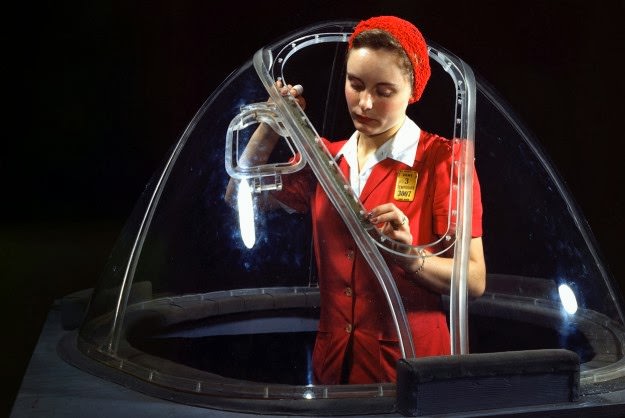
Better known as the “Flying Fortress,” the B-17F is a later model of the B-17 which distinguished itself in action in the South Pacific, over Germany and elsewhere. It is a long range, high altitude heavy bomber, with a crew of seven to nine men, and with armament sufficient to defend itself on daylight missions. Photo taken in October, 1942
#140 P-51 “Mustang” fighter in flight, Inglewood, California, The Mustang, built by North American Aviation, Incorporated, is the only American-built fighter used by the Royal Air Force of Great Britain. Photo taken in October, 1942
#141 Marine lieutenant, glider pilot in training, ready for take-off, at Page Field, Parris Island, South Carolina, in May, 1942.
#142 Women are trained as engine mechanics in thorough Douglas training methods, at the Douglas Aircraft Company in Long Beach, California, in October of 1942
#143 An American pineapple, of the kind the Axis finds hard to digest, is ready to leave the hand of an infantryman in training at Fort Belvoir, Virginia
#144 Large pipe elbows for the Army are formed at Tube Turns, Inc., by heating lengths of pipe with gas flames and forcing them around a die, in Louisville, Kentucky, in 1941
#145 A sailor at the Naval Air Base wears the new type protective clothing and gas mask designed for use in chemical warfare, in Corpus Christi, Texas, in August of 1942
#146 Answering the nation’s need for womanpower, Mrs. Virginia Davis made arrangement for the care of her two children during the day and joined her husband at work in the Naval Air Base in Corpus Christi, Texas.
#147 Formerly an aircraft dock, this huge building — thought to be the largest in the world with no interior supports — is now the scene of many busy shops turning out aircraft sub-assembly parts, at the Goodyear Aircraft Corp., in Akron, Ohio.
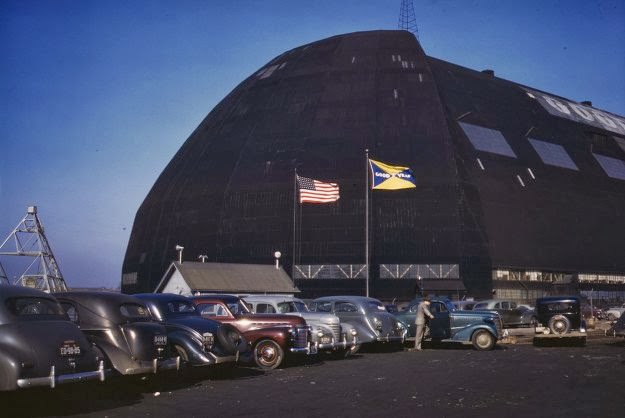
Either new housing close to the plant or vastly improved public transportation will eventually have to be supplied, for the tires on the cars of the workers, and perhaps even the cars themselves, will in many instances give in before the end of the present emergency. December, 1941
#148 Marine Corps glider in flight out of Parris Island, South Carolina, in May of 1942
#149 A Marine parachuting at Parris Island, South Carolina, in May of 1942
#150 A parade of M-4 (General Sherman) and M-3 (General Grant) tanks in training maneuvers, at Ft. Knox, Kentucky. Note the lower design of the M-4, the larger gun in the turret and the two hatches in front of the turret. Photographed in June of 1942
#151 Tank commander, Ft. Knox, Kentucky, June 1942
#152 Tank driver, Ft. Knox, Kentucky, June 1942
#153 M-3 tanks, at Ft. Knox, Kentucky, photographed in June of 1942
#154 Tank crew standing in front of M-4 tank, Ft. Knox, Kentucky, June, 1942
#155 With a woman’s determination, Lorena Craig takes over a man-size job in Corpus Christi, Texas. Before she came to work at the Naval air base she was a department store girl. Now she is a cowler under civil service. Photographed in August of 1942
#156 A view of the B-25 final assembly line at North American Aviation’s Inglewood, California, plant. Photo published in 1942.
#157 Part of the cowling for one of the motors for a B-25 bomber is assembled in the engine department of North American Aviation’s Inglewood, California, plant, in October of 1942
#158 Cowling and control rods are added to motors for North American B-25 bombers as they move down the assembly line at North American Aviation, in Inglewood, California, in October of 1942
#159 An experimental scale model of the B-25 plane is prepared for wind tunnel tests in the plant of the North American Aviation, Inc., Inglewood, California. The model maker holds an exact miniature reproduction of the type of bomb the plane will carry. October, 1942
#160 P-51 “Mustang” fighter plane in construction, at North American Aviation, Inc., in Los Angeles, California. Photo likely taken sometime in 1942
#161 An employee in the drill-press section of North American’s huge machine shop runs mounting holes in a large dural casting, in Inglewood, California, in October of 1942
#162 B-25 bomber planes at the North American Aviation, Inc., being hauled along an outdoor assembly line with an “International” tractor, in Kansas City, Kansas, in October, 1942
#163 Annette del Sur publicizes a salvage campaign in yard of Douglas Aircraft Company, in Long Beach, California, in October of 1942
#164 Casting a billet from an electric furnace, at Chase Brass and Copper Co., Euclid, Ohio. Modern electric furnaces have helped considerably in speeding the production of brass and other copper alloys for national defense.
#165 U.S. Marine Corps, bedding down a big barrage balloon, in Parris Island, South Carolina, in May, 1942
#166 A welder making boilers for a ship, at Combustion Engineering Co., Chattanooga, Tennessee, in June of 1942
#167 A young soldier of the armored forces holds and sights his Garand rifle like an old timer, at Fort Knox, Kentucky. He likes the piece for its fine firing qualities and its rugged, dependable mechanism. Photographed in June of 1942
#168 Workers on the Liberator Bombers, at Consolidated Aircraft Corp., in Fort Worth, Texas, in October of 1942
#169 Lathe operator machining parts for transport planes at the Consolidated Aircraft Corporation plant, Fort Worth, Texas, October, 1942
#170 Hitler would like this man to go home and forget about the war. A good American non-com at the side machine gun of a huge YB-17 bomber is a man who knows his business and works hard at it. Photographed in May, 1942
#171 Sunset silhouette of a flying fortress, at Langley Field, Virginia, in July, 1942
#172 As an NYA (National Youth Administration) trainee working inside the nose of a PBY, Elmer J. Pace is learning the construction of Navy planes, at Corpus Christi Naval Air Base, in Texas, in August of 1942
#173 The water stretching machine of an eastern parachute manufacturer stretches shroud lines so as to make them more adaptable to the finished product, in Manchester, Connecticut, in July of 1942
#174 After seven years in the Navy, J.D. Estes is considered an old sea salt by his mates at the Naval Air Base, Corpus Christi, Texas, in August of 1942
#175 Pearl Harbor widows have gone into war work to carry on the fight with a personal vengeance, in Corpus Christi, Texas.
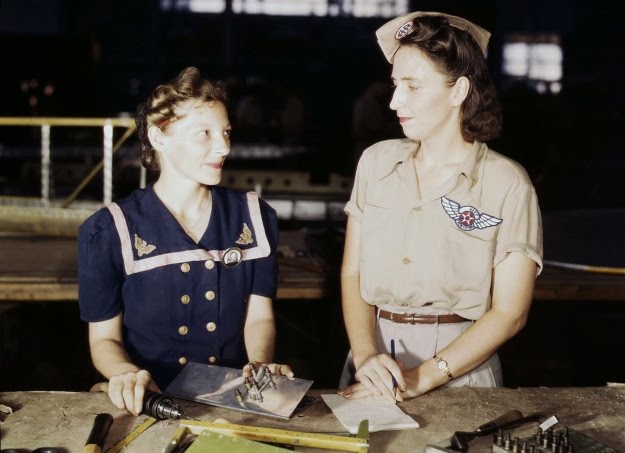
Mrs. Virginia Young (right) whose husband was one of the first casualties of World War II, is a supervisor in the Assembly and Repairs Department of the Naval Air Base. Her job is to find convenient and comfortable living quarters for women workers from out of state, like Ethel Mann, who operates an electric drill. Photographed in August of 1942


